

Do Pros Use Cavity Back Irons?
By: Jon Webber
Updated: December 10, 2023
Read All Comments
Back in the day, most golfers played a blade-style iron because that’s all there really was. They’ve changed a lot over the years and in this post, I’m going to be talking about whether or not pros use cavity back irons and if so, who actually uses them.
According to Titleist , 70% of tour players use cavity backs while 30% use blades. Cavity back irons provide increased forgiveness while blades offer more control and a better feel. This is why a lot of tour players have both cavity backs and blade irons in their bags.
These numbers are always going to be changing but the main thing to note is that most golfers on tour do prefer a cavity back. Jim Furyk says he’s much more accurate with them and can hit them straighter.
I think that’s probably the main reason most guys would use them and why the majority of weekend golfers should as well. Blades are easier to work the ball around in my experience and some people prefer the feel as well. You can see the differences between the two styles of clubs below:

It probably just all depends on your personal preference and what you grew up with. Tiger grew up with a blade-style iron so that’s what he’s used to. Most of the newer guys all started with cavity backs so that’s what they’ve stuck to.
- Best Irons For Beginners & High Handicappers
- Best Irons For Mid Handicappers
What Are Cavity Back Irons?

Cavity back irons are designed to be more forgiving compared to blades and have more of their weight on the perimeter. They generally launch the ball higher, straighter, and have a much bigger sweet spot compared to a blade.
Blade or muscle-back irons are pretty much a big chunk of steel. In order to make the club more forgiving they’ll remove part of the back to make a cavity (or hollow).
And as you probably guessed, that’s why they’re called cavity backs.
Cavity backs have been around for 50 years or something like that and were brought into the spotlight by Ping. They seemed to be the only company making them for a while but they didn’t really catch on until years later.
These irons are sometimes called “game improvement irons” because of how forgiving they are. If you’re a beginner or high handicap golfer then you should probably go with these.
They aren’t all created equal though and some are a lot more forgiving than others.
Why Are Cavity Back Irons Easier To Hit?
Cavity back irons are easier to hit and are more forgiving because the weight is removed from directly behind the clubface. More of the weight is around the perimeter and that helps with shot dispersion on mishits. It’s not going to fix your bad swing but it can ease the pain.
When they remove the weight they’re able to make a bigger sweet spot. That’ll help for forgiveness, higher launches, and more distance for a lot of average players.
You can see my favorite irons at the bottom of this page. Some of these irons are suited more for beginners while some are designed for better players. It’s important to pick the right one for your game, and the article below will talk about that.
If you have a hook or a slice with your irons you’ll still have that with cavity backs. You’ll probably see a slightly straighter shot though and you’ll definitely get more distance on mishits.
What Are Blades?
Blades are the more traditional-looking iron that is slimmer and more compact than cavity backs. You can see an example of that in the image above.
The top iron (cavity back) has a thicker base and also has some of the weight removed in certain spots. The bottom iron (blade) almost looks like a single piece of metal.
Blades are definitely harder to hit consistently compared to cavity backs, and that’s the main reason they aren’t as popular. I used to play them actually, and even though I liked them, I got a lot more distance when I switched.
Why Are Blades Better Than Cavity Backs?
Some people do prefer blade-style irons and I was one of them for a while there. I’m not a fan of the huge cavity back irons that are out there and find them too big and bulky. They give no feedback and are pretty tough to control.
I used a muscle back style iron for a while but really started to like some of the newer forged irons that are out. They aren’t as big as some of the game improvement irons but they still have a really solid feel to them.
Blade irons are normally easier to control compared to cavity backs (in my experience anyway). Control means being able to draw or fade the ball and control the trajectory. That’s one of the big differences I’ve noticed.
Another big difference is the feel at impact. I think blade-style irons feel much better at impact compared to some cavities. It didn’t happen all the time, but when you hit the sweet spot, it felt unreal.
You’ll get a lot more feedback on mishits and you can use that to improve your game. Most people should just stick with a cavity back though.
Which Pros Don’t Use Cavity Backs?
Pros do a lot of testing so they often switch up the clubs they’re using. Some also use a mix of cavity backs and blades in their set. A number of them use cavity backs for their longer irons since they’re more forgiving and hit the ball longer. They’ll then use blades for their shorter irons because of the increased control.
The list can change over time but the important thing to know is that most players use cavity backs. It’d be easier to show the players who don’t use cavity backs so here they are:
- Tiger Woods.
- Phil Mickelson.
- Adam Scott.
- Rory McIlroy.
- Justin Thomas (4 iron cavity back).
- Justin Rose.
- Ricky Fowler.
I’m sure there are more but these are the main guys. The clubs they use could change in the future but at the time of writing this these guys are mainly using blades or muscle backs.
What About Muscle Back Irons?

I’m sure you’ve probably heard the term muscle back irons. I think they’re a bit more popular than blades, but they are pretty similar. Muscle back irons fall between a blade and cavity back iron.
What they essentially do is take a bladed iron and add a bit of forgiveness. They’re normally a bit thicker, have a slightly larger sweet spot and will launch the ball a little higher.
You can see in the picture above that they look pretty similar to a blade. They still offer the increased control and better feel of a blade, but they also have a bit more forgiveness, distance, and height.
Related Posts Of Interest

Hey, I'm Jon. I started Out Of Bounds Golf to share my findings after testing golf gear for the past 10+ years. My goal is to make the game a little easier to understand, whether that's with finding the right product or answering common questions.
Subscribe to our newsletter for golf improvement tips and great deals! Sign up today!
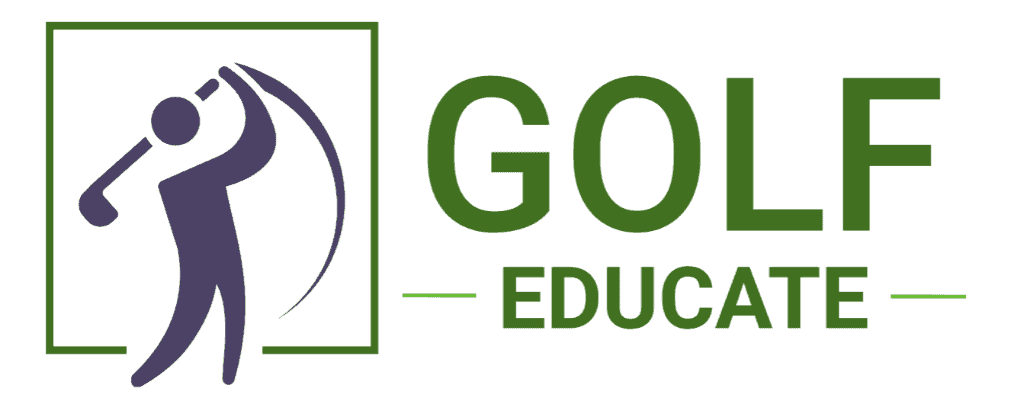
7 Most Popular Irons On The PGA Tour (2023 Update)
Nowadays, the scrutiny on what golf irons the pros are using is greater than ever, and club manufacturers are more aware of this perception by the golf playing and golf watching audiences around the world. So, what are the most popular irons on the PGA Tour?
The 7 most popular irons on the PGA Tour are :
While drivers often take center stage, the real focus is on the irons that the pros use, as those constitute a larger percentage of shots played and hit during tournaments than those of drivers, but remember, a putter is the club used the most.
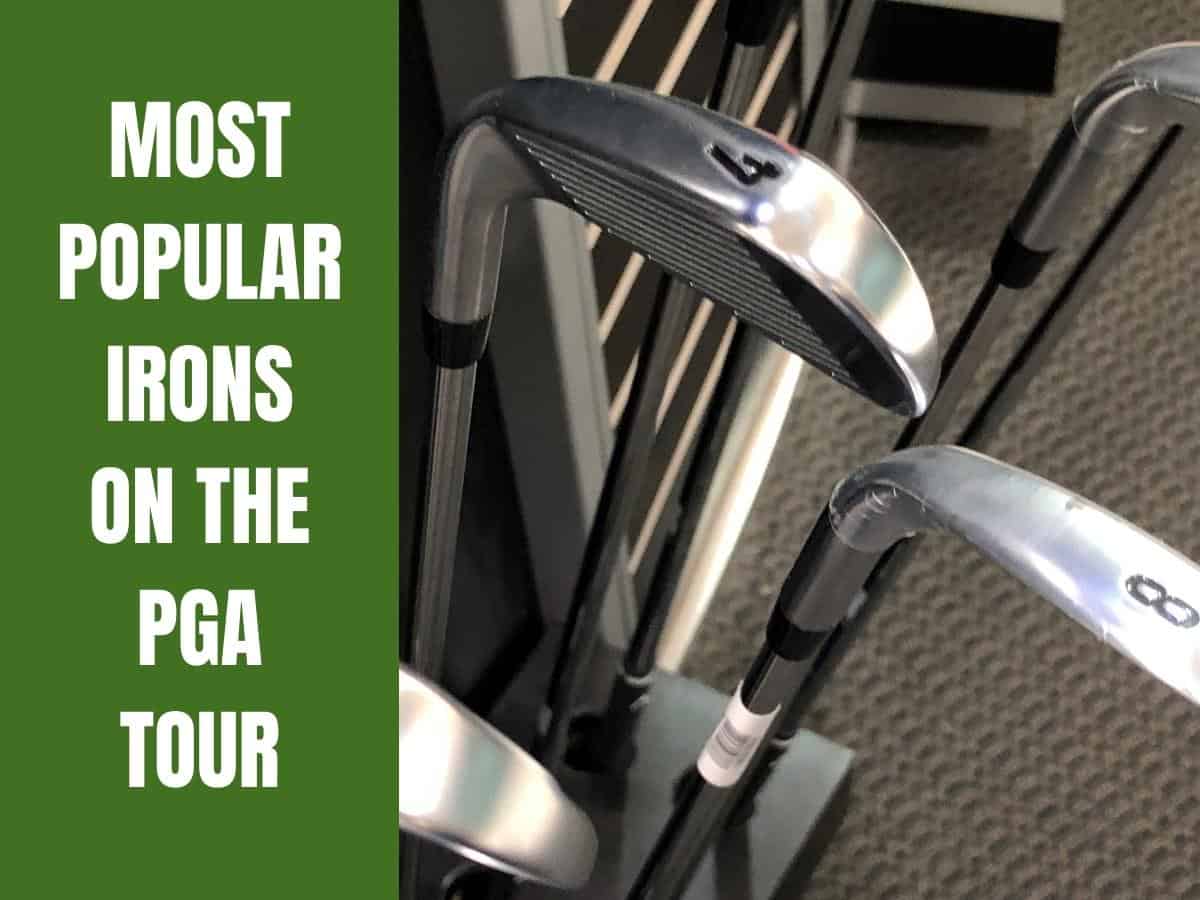
And to find out the most popular irons on the PGA Tour, keep reading!
PGA Tour Players Mix And Match Their Irons
Many PGA Tour players don’t have complete sets of one brand of irons but mix and match between brands and clubs based on what irons they prefer. So shorter irons could be one brand and longer irons another.
You may also find that some players have a complete set of irons from 4-PW and then have a different brand for a three iron or driving iron. The stats below are based on the popularity of the iron brands found in the bags of tour pros, and you may find some players using two different iron brands.
With this discussion, we are talking about irons only and not wedges, as that would be a separate discussion on its own.
Most Popular Irons On The PGA Tour
The most popular irons on the PGA Tour are Titleist, Callaway, Ping, TaylorMade, Srixon, Mizuno, and PXG. These are the most common irons found in the bags of PGA pros currently on tour, and the differences between the most popular and the least popular are significant.
So, let’s start with the least popular.
#7 – PXG Irons
PXG is a brand making slow but steady inroads into the PGA Tour player’s choice of clubs, and five top-ranked PGA Tour pros use PXG irons in their bag. Players include Jason Kokrak, Luke List, Joel Dahmen, James Hahn, and Zach Johnson.
PXG ranks higher in popularity than Cobra or Wilson on tour and some newer brands like Miura, Honma, or Bridgestone.
Which PXG Irons Do These PGA Tour Pros Use?
- Luke List and James Hahn play PXG 0311 T Gen 4 irons.
- Jason Kokrak uses the PXG 0311 T Gen 4 irons.
- Joel Dahmen uses the PXG 0211 ST irons.
- Zach Johnson plays the PXG 0311 T Gen 1.
Who Is PXG Golf?
PXG (Parsons Extreme Golf) was founded in 2014 by Bob Parsons, most well known as the founder of Go-Daddy. His vision was to make “the sexiest, most forgiving golf clubs that launch higher, go farther, feel softer, and have a sweet spot the size of Texas!”
PXG currently holds over 200 patents and focuses on providing clubs that look like blades but “feel like butter.” With the backing of Dr. Parsons and limitless resources, they began to research the various alloys and materials to produce the world’s finest golf clubs.

Even though PXG irons do come at a price, the design of their 0311 sets of irons is turning heads and getting great reviews from players and golf influencers alike.
Using a hollow construction, as many of the new irons are, and filling it with a thermoplastic-elastomer filling and tungsten weights on the perimeter provides forgiveness and great speed and sound off the clubface.
Whether for high/medium handicappers or more adept players, PXG 0311 irons are certainly delivering on the Parsons promise.
You can check out a wide selection of PXG irons at Global Golf. They also have a ‘used’ selection of irons from owners who trade in their used clubs when upgrading. You can pick up some good deals here if you have a lower budget or like to change your clubs regularly.
#6 – Mizuno Irons
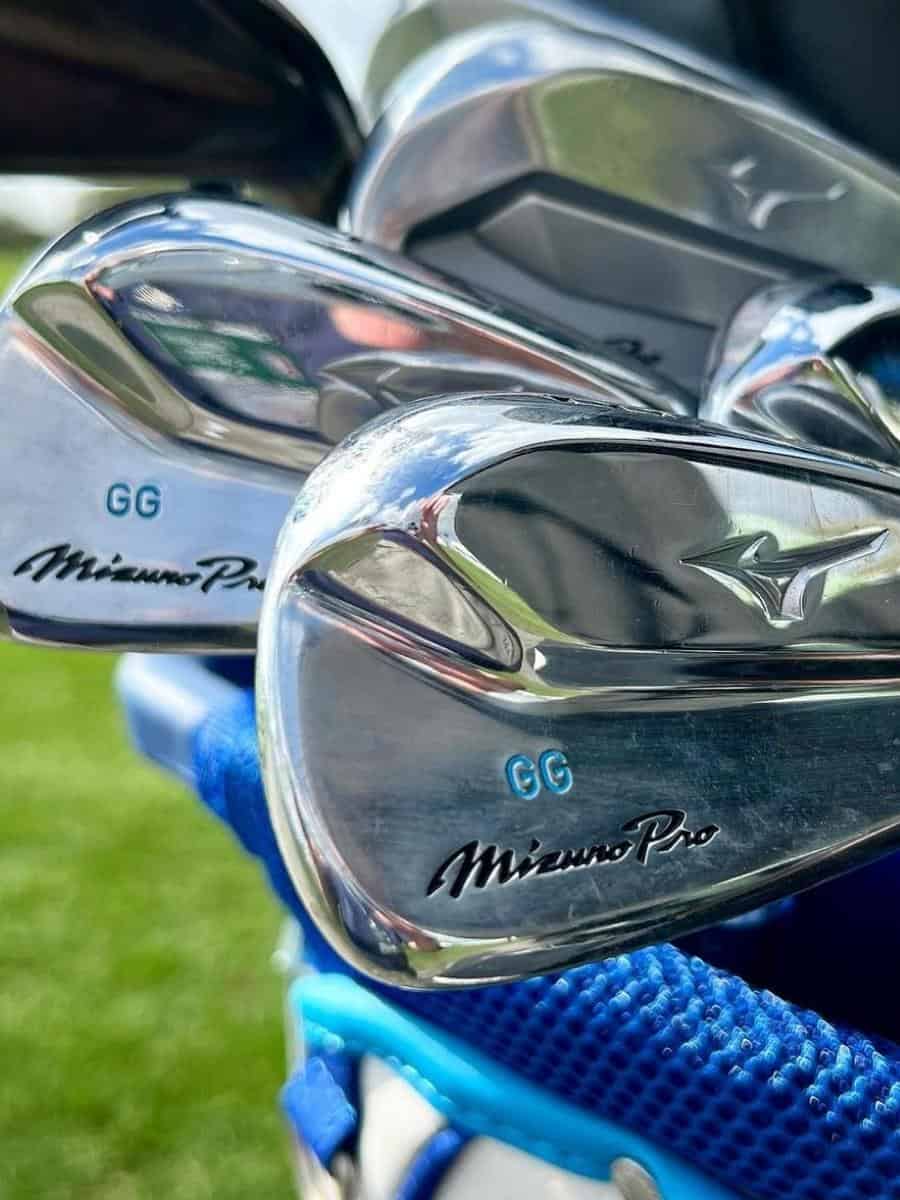
Coming in at no.6 is a well-known and long-standing brand originating in Japan. It arguably produces some of the finest irons for the PGA Tour and amateur golfers. Mizuno ranks slightly higher in popularity than PXG, but there is a big gap between Mizuno and the no.5 ranked irons, Srixon.
Currently, seven players on the PGA Tour use Mizuno irons: Luke Donald, Paul Casey, Matt Jones, Lucas Glover, Jazz Janewattanond, Keith Mitchell, and Cameron Smith.

Which Mizuno Irons Do These PGA Tour Players Use?
Looking in the bag, you will find a mix of sets from the JPX 919 irons to the Pro Fli Hi and MP 5 and Pro 221 and Pro 225 irons. The players in this list use the following irons:
- Paul Casey – Mizuno MP-5 and Mizuno JPX919 Hot Metal Pro
- Matt Jones – Mizuno Pro Fli-Hi
- Lucas Glover – Mizuno JPX919 Tour
- Jazz Janewattanond – Mizuno JPX919 Tour
- Keith Mitchell – Mizuno Pro 225 and Mizuno Pro 221
- Cameron Smith – Mizuno Pro Fli-Hi
- Luke Donald – Mizuno Pro 225, Mizuno Pro 221, and Muzuno Pro Fli-Hi
Mizuno, as a brand, has produced clubs for both professionals and mid to low handicappers offering some forgiveness and providing superb control for ball shaping and a great feel off the clubface.
If you’re in the market for Mizuno irons, check out the Global Golf website, where you can find the latest models and often at the best prices. Amazon also has a selection of Mizuno iron sets.
#5 – Srixon Irons
Japanese brand Srixon is a subsidiary of Sumitomo Rubber company that owns Dunlop Sport. Srixon holds more patents for golf balls than any other brand in the market; while not as popular as the Pro V1, Srixon balls are well respected and played by quite a few pros. I am a regular Srixon ball user myself.
Twelve players on the PGA Tour are currently using Srixon irons: Shane Lowry, Sepp Straka, Scotty Scheffler, Ryan Palmer, Marcus Armitage, Martin Laird, Hideki Matsuyama, Keegan Bradley, Harold Varner III, Graeme MacDowell, JJ Spaun, and Brooks Koepka.
Which Srixon Irons Do These PGA Tour Players Use?
Looking through the bags of these players, you will find a mix of irons, with the ZX 7 irons being the most popular in this group. There are also the ZX 5 irons, the Z Forged, Z 785, and Z U65 irons.
Except for Martin Laird, Ryan Palmer, Hideki Matsuyama, and Graeme MacDowell, all the other players use the ZX 7 and ZX 5 irons. Martin Laird and Ryan Palmer use the Z 785’s, MacDowell also uses the Z 785’s and the Z 745, Matsuyama uses the Srixon Z-Forged irons, and Spaun uses the Z U65 irons.
If you want to check out the best Srixon irons that are popular right now, you can find them at Global Golf. You can also check out the current pricing of Srixon irons over on Amazon.

#4 – TaylorMade Irons
As one of the golfing world’s most well-known and iconic brands, TaylorMade scooped possibly the biggest star ever when Tiger Woods signed to them and started to use their P7TW irons after Nike announced they would no longer be making clubs.
TaylorMade also produces some high-quality golf balls and while they are not in the same popularity league as the Pro V1 – let’s face it, which golf ball is – some of the best use their irons in the game.
With 18 players on the PGA using TaylorMade, they are far ahead of Srixon in the popularity ratings. Some of the big names on tour using TaylorMade irons include the likes of Collin Morikawa, Dustin Johnson, Jason Day, Daniel Berger, Justin Rose, Martin Kaymer, Rory McIlroy, Tiger Woods, Sergio Garcia, and Tommy Fleetwood.

Which TaylorMade Irons Do These PGA Tour Players Use?
TaylorMade has a variety of irons that feature PGA players’ bags. A popular one is the P7TW irons found in the bags of players like Tiger Woods, Tommy Fleetwood, Martin Kaymer, Scotty Scheffler, and Lucas Herbert.
You can read more about Tiger’s irons in this article; What Irons Does Tiger Woods Use ?
The other popular irons from TaylorMade are the P7MC (available on Amazon), and those can be found in the bags of players like Justin Rose, Mathew Wolf, and Robert McIntyre. The P770 irons (also on Amazon) have a good following with PGA Tour players, and names like Rory McIlroy, Collin Morikawa, and Harry Higgs feature these irons in their bags.
I do like the P770s, but maybe I’m a little biased as my eldest son uses these clubs. Like me, he plays left-handed and seems well suited to them.
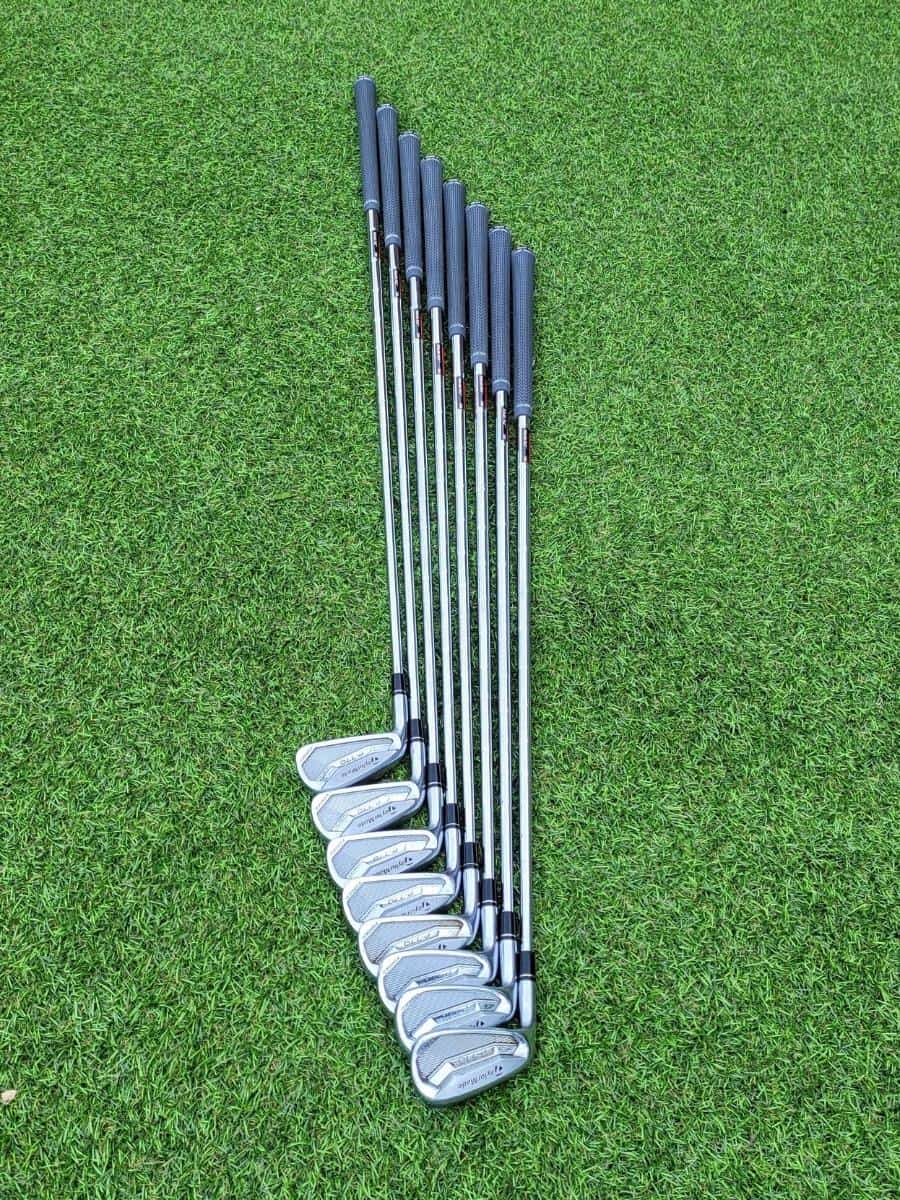
Sergio Garcia and Dustin Johnson feature the P730 irons, as Collin Morikawa and the P790 irons are used by Martin Kaymer, Lucas Herbert, and Jason Day. Remember that within the TaylorMade stable, there are a variety of irons, and pros that use TM often pull clubs from different model sets to complete their own.

#3 – Ping Irons
Ping’s influence on the game of golf is impressive at both the amateur and pro levels; they arguably provided golf’s greatest entertainer, Seve Ballesteros, with his clubs and the innovation of the world’s first game improvement irons some five decades ago.
The subsequent interest of professional players in the cavity back irons, Ping is a global leader in golf clubs, and it shows on the PGA Tour.
As the third most popular iron on tour, Ping features some very high-profile players, and 19 tour players feature this brand.
Only marginally ahead of TaylorMade, players that use Ping irons include the likes of Bubba Watson, Louis Oosthuizen, Corey Conners, Harris English, Joaquin Niemann, Mackenzie Hughes, Stewart Cink, Lee Westwood, Tony Finau, Tyrell Hatton, and Viktor Hovland.
What Ping Irons Do These PGA Tour Pros Use?
The Ping i210 irons are the most popular amongst this playing group, with players like Viktor Hovland, Lee Westwood, Tyrell Hatton, Stewart Cink, Mackenzie Hughes, Sebastion Munoz, Sahith Teegala, and Matt Fitzpatrick all having the i210 in their bags.
The Ping iBlades are used by Corey Conners, Guillermo Mita Perreira, Joaquin Niemann, and Victor Perez. The Ping Blueprint irons are used by Louis Oosthuizen, Tony Finau, Seamus Power, and Harris English.
Other Ping irons used are the Ping S55 played by Bubba Watson and Carlos Ortiz, as well as the i500 (Makenzie Hughes), G 410 Crossover (Harris English), and the i59 (Sahith Teegala).

#2 – Callaway Irons
Callaway irons are the second most popular irons used on the PGA Tour behind Titleist – and there is a big difference between the number of players using Callaway and Titleist. In contrast, the numbers 3, 4, and 5 most popular irons are closer to the number 2 spot than the no. 2 is to the no. 1 most popular iron on the PGA Tour.
Between Callaway and Ping, there is only a difference of 5 players that use Callaway, so those gaps are pretty close.
Callaway is another massive global brand. Of the 24 PGA Tour players that use their irons, many South African players feature, such as Branden Grace, Christiaan Bezuidenhout, Dylan Frittelli, Erik Van Rooyen, and prominent international stars.
Phil Mickelson, Alex Noren, Daniel Berger, Danny Willett, Henrik Stenson, Francesco Molinari, Justin Rose, John Rahm, Kevin Na, Kevin Kisner, Sam Burns, Xander Schauffle, Siwoo Kim, and Marc Leishman all use Callaway irons.
You know you are doing something right when you can boast this illustrious list of players using your irons!
What Callaway Irons Do These Pro Players Use?
The two most popular iron sets are the Callaway Apex series and X Forged irons, while a few players on tour use the Rogue and Legacy irons.
With the Apex series, the MB, TCB, and Pro feature prominently, with the X Forged series irons coming in a close second. Let’s look at which PGA players use these irons.
- Callaway Apex TCB – John Rahm, Marc Leishman, Matt Wallace, Sam Burns, Xander Schauffle, Franceso Molinari, Danny Lee, and Branden Grace.
- Callaway Apex MB – Phil Mickelson, Talor Gooch, Matt Wallace, Danny Lee, Erik Van Rooyen.
- Callaway Pro and Pro UT – Jazz Jannewattanond, Alex Noren, Kevin Na, Kevin Kisner, and Siwoo Kim.
- Callaway X Forged UT/CB – Phil Mickelson, Talor Gooch, Maverick McNealy, Justin Rose, Dylan Frittelli, Erik Van Rooyen , Danny Willet and Christiaan Bezuidenhout.
My youngest son has recently ignited his love of the game and purchased a set of Callaway clubs. Although not used by the PGA players mentioned above, he went for the Callaway Warbirds, which I think are just perfect for him, having not played for a while.

#1 – Titleist Irons
Titleist has the same dominance with their irons on tour as they do with the Pro V1 ball, which is a testament to their quality and consistency in performance. Compared to the no. 2 spot held by Callaway, Titleist have more than 70% more players using their clubs than Callaway.
Regarding the popularity of irons, it’s a race for second place as Titleist has the first place well and truly sewn up, with 33 PGA Tour players favoring them. You can view Titleist irons on Amazon and check prices or jump to the huge selection at Global Golf.
Their list of players using their irons is incredibly impressive. It features top players like Adam Scott, Cameron Smith, Chris Kirk, Garrick Higgo, Ian Poulter, Jordan Spieth, Justin Thomas, Lucas Glover, Patrick Cantlay, Max Homa, Tom Hoge, and Will Zalatoris.

What Titleist Irons Do These PGA Tour Players Use?
Because Titleist has such a massive stable of clubs available, the mix of irons used by PGA players is quite varied.
The T100 and T200 are popular, along with the 620 CB and MB series. Then, the U500 and 510 and the 718AP2 and T MB irons feature in the bags of the top players.
- Titleist T100 and T200 – Cameron Smith, Charles Howell III, Charley Hoffman, Garrick Higgo, Jordan Spieth, Justin Thomas, Will Zalatoris.
- Titleist 620 CB/ MB Series – Antoine Rozner, Billy Horschel , Brandt Wiesberger, Brian Harman , Cameron Davis, Cameron Young, Max Homa, Webb Simpson and Tom Hoge.
- Titleist 718 AP2/MB/CB/T MB -Brendon Todd, Chris Kirk, Ian Poulter, JT Poston, Patrick Cantlay.
- Titleist U 500 – Antoine Rozner, Berndt Wiesberger, Carlos Ortiz, JT Poston, Lucas Glover and Brian Harman.
Sidenote: Do you want to know the top golf grips used by the pros? Check out this article to find out, 3 Most Popular Grips on The PGA Tour .
Let’s Wrap This Up!
Titleist leads the race by some margin for the most popular irons on the PGA Tour, with some of the biggest names in the game using their irons with great success. Now that you know which players use which brand, be sure to keep an eye out for them on TV.
It will be interesting to see if and how these numbers change over the coming years as manufacturers jostle to move up the popularity rankings, but for now, the top four are well ahead of the chasing pack.
If you want more detail on this topic, check out this article, What Irons Do PGA Players Use ?
Related Posts You May Like:
- 5 Most Popular Golf Balls on The PGA Tour
- The Average Handicap For a Pro Golfer
- 5 Most Popular Wedges on The PGA Tour
- Are Golf Hitting Nets Worth It ?
Similar Posts

5 Most Popular Wedges On The PGA Tour (2023 Update)
A lot of attention is focused on the golf clubs that PGA Tour players use, and aside from drivers and putters, wedges get plenty of scrutiny from the golf-playing public so they can see what their favorite players are using. So, what are the most popular wedges on the PGA Tour? The most popular wedges…
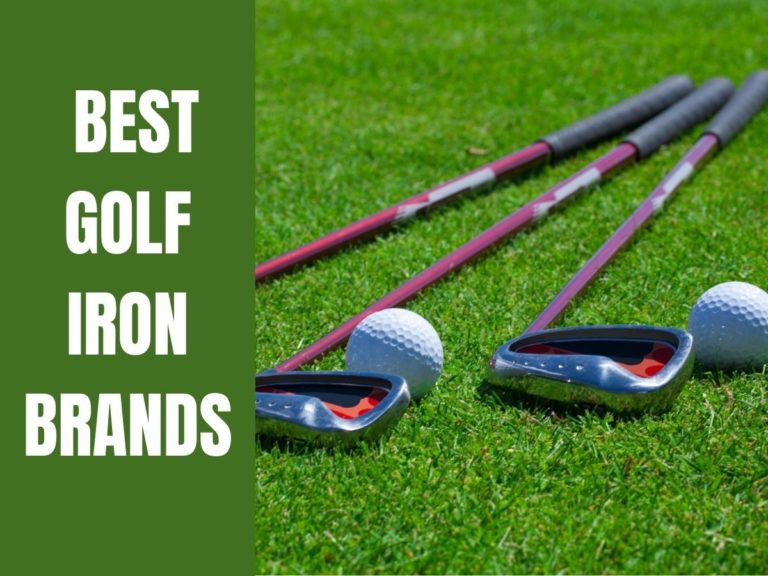
5 Best Golf Iron Brands
Over the years, the great game of golf has continued to evolve on a technical and skill level, where the demands or needs of each player have become more specific. The technology and design of modern-day golf irons play a significant role in the quality and improvement of each player’s game, and many might be…
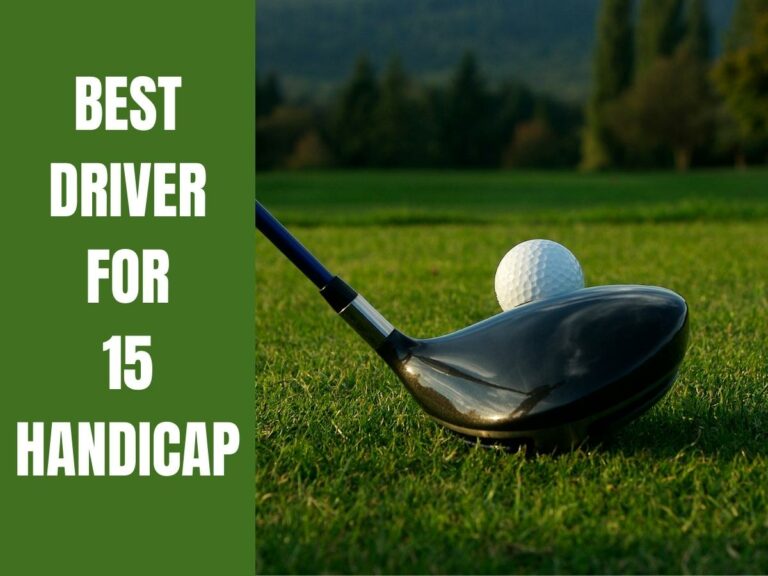
5 Best Golf Drivers For 15 Handicap Players
When purchasing a new driver, you should consider getting one that is good for your handicap. Therefore, as a 15 handicap player, you ought to think about getting one of my picks of the best golf drivers for 15 handicappers. With such a variety of drivers to choose from, it can be quite a hard…
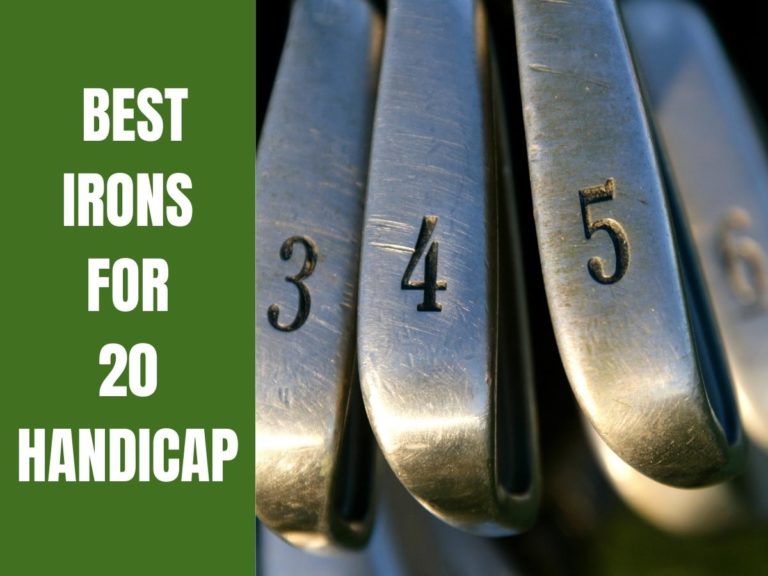
7 Best Golf Irons For 20 Handicap Players
A golfer’s choice of iron can make or break their performance for the round. Deciding what irons to use can be daunting, and playing with the best irons you can afford for your handicap is vital. In this article, I’ll outline the best irons for 20 handicappers. The 7 best golf irons for 20 handicap…
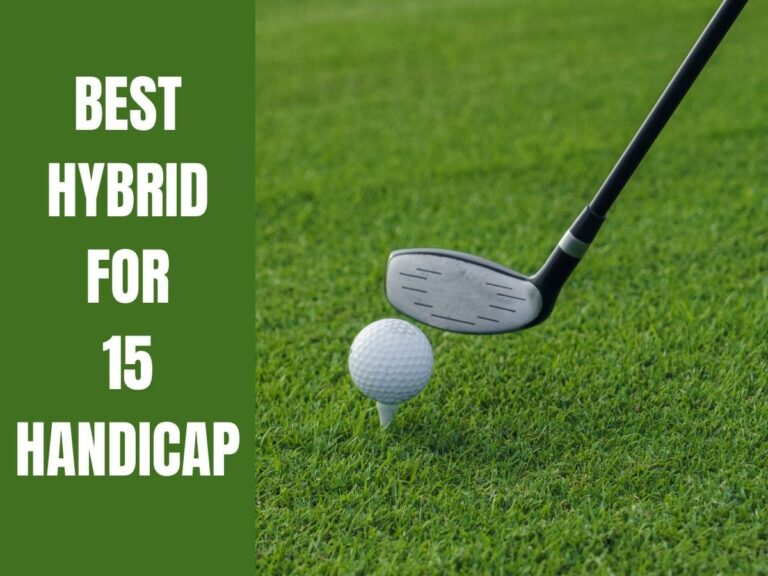
5 Best Hybrids For 15 Handicap Players
If you have a golf handicap of 15, when the time comes for you to purchase a new hybrid, you should choose one that suits your handicap to improve your game. That said, I’ll outline the best hybrids for 15 handicap players. Here are 5 of the best hybrid golf clubs to choose from for…

Top Brands On The PGA Tour (Irons, Putters, Balls & More!)
The PGA Tour is professional golf’s premier tour event, with over 40 tournaments per season, mainly in North America, with some tournaments in the United Kingdom, Japan, and South Korea. Some of the world’s top players participate in the PGA Tour, giving it a huge following worldwide. With so many golf equipment brands, you may…
Is Your Game Suffering?
Join our free newsletter and receive game improvement tips, drills, product discounts, etc…, join over 10,000 golfers today.
The 9 Best Cavity Back Irons
Searching for the best cavity back irons to play in 2024 is an exciting and rewarding experience for golfers of all skill levels looking to improve their game.
In this article, we have researched the best buys for:
The low and accomplished golfer wanting to get the best out of their game.
The mid handicap player looking to improve their game .
The beginner and high handicap golfer wanting to improve their game and move to the next level.
It is true to say that irrespective of the competency of many golfers, the need to improve and get the most enjoyment out of the game is a driving factor.
Do Cavity Back Irons Really Help?
Do pga players use cavity back irons, cavity back putters, 1. ping i210 irons, 2. titleist t100 irons, 3. taylormade p770 irons, 1. taylormade sim2 max, 2. callaway mavrik, 3. titleist t300ii, 1. taylormade sim2 max os, 2. cobra f max airspeed irons, 3. callaway big bertha b21 irons, related articles.
The introduction of cavity back irons has undoubtedly been one of the greatest game-changing innovations that this testing game has experienced.
Any golfer who started playing golf with blades can testify to the fact.
The sleek-looking blades with a small head only allowed for a tiny “sweet” spot in the center of the head.
Any mis-hits would create a “shudder” through the hands and wrist and the distance was greatly compromised.
Launching the long irons required many hours of practice and an above-average skill level.
Ping was the first to introduce the cavity back iron with the Ping Eye irons.
All the manufacturers moved to the cavity back technology to cater to the demand of the masses wanting to improve their all-round game.
Cavity-back irons have a large sweet spot on the face allowing for mis-hits that still travel straight and a fair distance.
This result is due to the weight distribution which is moved to the heel and toe of the clubhead.
Less sidespin is created off the face which produces reduced hooks and fades and moving the weight allows for the option to place it lower in the head and lowers the CG.
Lower CG means a club that is easily launched from all lies on the course.
Put all the benefits together and it is easy to understand why most golfers today choose to play cavity back irons in some form or another.
Tour players, whether in the senior ranks or mainstream tournaments earn their living by playing good golf and eliminating mistakes on the course.
Cavity back irons provide the same game improvement to these accomplished players and offer them more options depending on course and weather conditions.
On windy days the pros will opt for a cavity or muscle back long iron instead of launching a 5 wood high into the air.
The downside of a cavity back iron is that it produces less side spin which in turn makes it more difficult to hit a big hook or fade.
However, it is not uncommon to see a combination of cavity back and muscle back irons in the pros bag.
Many senior players on tour have to compensate for the lack of flexibility in their bodies and use the cavity back irons to good effect.
Distance with accuracy will always be a factor and cavity backs provide this.
An area where pros still rely heavily on blades is the short irons.
From an 8-iron to the various wedges in the bag, they want to control the spin, distance, and accuracy into the green.
They spend many, many hours practicing this aspect of the game to ensure confidence and scoring opportunities on the round.
Amateurs will be well advised to use cavity back irons through the set, with maybe the exception of the short irons and wedges.
Very few pros use a genuine blade putter on the tour. The cavity back putter has an increased sweet spot with the weight either evenly distributed in the head or a heel-toe weighting.
Slow greens, which are uncommon on the tour, or wet conditions allow the pros to opt for a slightly heavier putter.
Weight can be added or reduced on many of the top putters today and placed where best suited to the player.
The Best 3 Cavity Back Irons for Low Handicaps
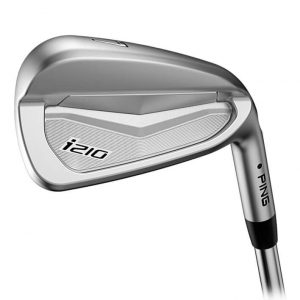
- Precision milled for good looks and playability
- All the good technology from the i200 improved in the i210
- The larger improved elastomer in the sole
- Designed for the better player
- Ping looks at address, not for all
- Topline size
The i210 cavity, face, and grooves are precision milled to enhance looks and playability.
The i210 model has taken all the good things from the previous i200 model and improved them.
The cavity back design head features a larger section in the sole area.
A greater improved tuning port and softer elastomer insert that is 30 % larger fits into the sole area.
Players wanting a classic design iron with forgiveness will enjoy this set.
The i210 is designed for the better player who seeks ball flight control, rather than sheer distance.
A high-performing iron set that generates good ball speed off the machined face, creating distance, soft feel, and control.
The “muscle-back” compact look on the shorter irons with a smaller cavity and less offset will add appeal.
A refined leading edge glides through all turf conditions with ease.
Lofts on the standard set move from 19-degrees on the 3-iron to 41-degrees on the 9-iron, and 45-degrees on the pitching wedge.
Better players will appreciate the improvements in this set.
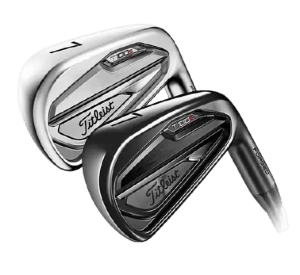
- Most blade-like look
- Thin top-line
- Traditional look with forgiveness
- Premier iron that is easy to hit
- Minimal offset
- Titleist look not for all
- Blade length is short
- Not a game-improvement iron
For Titleist to drop the most played golf iron on the tour for the last decade, and replace it with the T100 iron is significant in itself.
The iron is possibly best described as a “high-tech”cavity-backed blade.
It has a very thin top line and a traditional look about it.
While it may appear like a traditional iron, the forgiveness incorporated into the manufacturing process, makes this a premier iron that is easy to hit.
The tungsten weighting is forged into the extreme heel and toe of the head which increases stability and MOI without any drastic changes to launch and spin.
The key is to keep the weighting close to the face.
A new fully forged cavity back construction is balanced by co-forged dual-density tungsten, for precise distance control with exceptional stability.
The T100 has a narrower sole than the AP2 and a pre-worn leading edge and is slightly beveled to help the club glide through all turf conditions.
This allows for clean contact on both steep and shallow strikes with a good solid sound.
The lofts are very close to traditional with the pitching wedge at 46-degrees.
Like all cavity back irons, the reduced side spin makes it more difficult to curve in the air.
In summary, this combination of power performance, playability, and feel is unlike any previous Titleist design.
Ideal for the ex-blade player now wanting to use forgiveness technology.
- Forged irons with progressive offset
- The smallish head shape looks good at address
- Packs a punch off the face
- Forgiveness on mis-hits
- The face may be too small for some
- Lower spin rate
Taylormade introduced the P770 irons as an update on the very popular P790 irons that were long and forgiving with a large head.
The idea was to bring the same characteristics to the better player in a smaller head package.
The progressive offset, although slightly less than the P790, will appeal to many TaylorMade fans.
A smaller forged head and face with a thin top line is ideal for the better player and incorporates an advanced forging process.
A hollow body design looks just like a blade at the address and packs a punch.
The extremely thin face creates plenty of ball speed and distance.
Progressive Inverted Cone Technology in the face and the Thru-Slot Speed Pocket helps retain distance on off-center strikes.
The sound is rather quiet at impact but feels solid through the strike.
The P770 irons create a lower spin rate than most player irons on the market but fitted with the right shaft will hold greens consistently.
Better players looking for compact small heads with fast ball speed off the face, and this TaylorMade set will not disappoint.
The Best 3 Cavity Back Irons for Mid Handicaps
- All-new Cap Back design
- Optimized sweet spot
- Better forgiveness, distance, and feel
- Easy high and long launch
- Topline a bit thick
- Wide sole not for everybody
The TaylorMade Sim2 Max is engineered to assist the golfer in hitting better shots more consistently.
An intelligent optimized sweet spot is designed for better performance.
TaylorMade’s all-new Cap Back Design delivers a great game improvement iron for the mid handicap.
An outstanding feature of this technology package is outperforming the traditional cavity back iron.
The multi-material construction promotes a better feel, forgiveness, and distance.
Explosive ball speed off the face enhances confidence and delivers a long and high ball flight.
The combination of the proven Thru-Slot Speed Pocket and Cap Back design provides the all-important consistent strike and distance control.
Lower CG placement produces a high ball flight with easy launch and a neutral spin bias.
A softer Echo Damping System, fully enclosed by the Cap Back design, covers the face from heel to toe.
Results are a softer feel, limited vibration on mis-hits, and maximum face flexibility.
The face design is at the threshold of the legal limit and the Inverted Cone Technology minimizes the common right miss.
This set has all the latest TaylorMade technology and is a good buy for game improvement.
- Longest Mavrik iron on offer
- AI-designed fast face
- Easy Launch
- Affordable price
- Headshape not for all
- Topline slightly thicker
The Mavrik iron is the longest in this series from Callaway.
All the advanced Callaway technology is incorporated into the set.
Callaway has used AI-Technology to design the face.
The Flash Face Cup design produces long and consistent distances.
Sophisticated face architecture allows Callaway to install a unique face into each iron.
A boost in ball speed and increased spin robustness on each iron is another unique feature.
Custom tungsten-infused weights allow for precision placement of the CG throughout the set.
The result is optimum launch and ball flight from strong lofts and player preferred trajectory, spin rates, and land angles.
Feel is never overlooked by players wanting to improve their game.
The Callaway Mavrik iron produces an unprecedented feel using the patented urethane microspheres to absorb mis-hits vibration while maintaining COR for fantastic ball speed.
Premium True Temper Steel or Project X Catalyst Graphite shafts complete the set.
- Modern mid-size head shape
- Thinner topline and less offset
- Faster ball speeds
- Easy launch
- Head shape not for all
- Offset not suitable for the better player
Titleist has produced another winner in the T-series irons with the T300II.
Regarded as one of the best Titleist game improvement irons ever.
A unique polymer core developed in partnership with Titleist golf ball R & D provides precise dampening and sound qualities.
Off-center strikes travel straight without much distance loss.
The longer blade length in the T300 increases MOI and is well balanced with tungsten weighting in the toe.
The CG is perfectly placed for long straight ball flight from the easy launch characteristics.
Faster ball speeds enhanced by the Max Impact Technology spread across the extremely forgiving mid-size face.
Strong lofts off the fast-feeling action off the cavity back create length on every shot.
The reduced offset is appealing at address.
A True Temper Steel shaft or a Mitsubishi AV Red Graphite shaft are options.
The Best 3 Cavity Back Irons for High Handicaps
- High technology in an oversized head
- Longest most stable iron in TaylorMade stable
- Wide sole for easy launch
- Over-sized head not for the better golfer
- The wide sole and thick topline
The TaylorMade Sim2 Max OS iron is undoubtedly the most forgiving in their stable.
All the high-technology is included as in the other latest TaylorMade irons.
A feature is the ability to pack all the goods into a low CG oversized head.
The all-new Cap Back design delivers incredible distance and forgiveness.
With a wider sole, Tru-Slot Speed Pocket, stronger lofts, and draw-biased design, counters mis-hits.
The oversized face with Inverted Cone Technology produces maximum face flexibility, ball speed, and distance.
All the technology, a fluted hosel, a 360-degree undercut ultra-thin face create an exceptional-low CG to produce a high penetrating ball flight.
A definite consideration for super game improvement irons.
- Perfect for moderate swing speeds
- Lightweight construction
- Low cavity back for easy launch
- Short hosel
- Thick topline
- Not for low handicaps
Cobra has produced another outstanding iron option for the golfer seeking super game improvement.
Each iron has a deep cavity back design allowing weight to be placed at the perimeter of the club and low down.
The lightest ever irons from Cobra with lightweight shafts.
This lightweight technology, with a deep undercut cavity design, increases clubhead speed and higher launch.
Distance just got easier without having to swing the club harder.
A good-looking club at address with overall good spin rates.
An airspeed shaft that is 5 gm lighter than standard, generates speed and distance without sacrificing stability.
A unique feature is the Raw Unpainted shaft which removes 2 gm from the weight and creates its own look.
The offset design helps turn the club over for straighter shots.
The Progressive hosel length and offset design allow for precision weight distribution for a low CG promoting forgiveness and control.
The longer irons have a low CG and launch the ball high.
The mid-irons have the CG in the middle of the face and create a mid-launch.
Wedges have the CG high on the face for a lower launch into the green.
A great offering from Cobra.
Callaway has always been at the forefront of club development to help all classes of golfer.
- First Big Bertha designed with AI
- Engineered for ball speed
- Easy to launch
- Confidence-inspiring at address
- Bulky head look
- Wide sole not for all
Callaways AI-designed Flash Face Cup produces high ball speed at contact and increased spin robustness.
Ball speed is further enhanced by the 360 Face Cup that flexes and releases at impact.
An improved wider sole adds confidence over the ball and interacts well through all turf conditions.
More offset has been added to the head which provides an easy launch, lower spin, and straight flight.
The high launch is increased from added tungsten weighting seated precisely lower in the head for low CG.
The patented urethane microspheres absorb unwanted vibration on mis-hits.
Ball speed is maintained and the feel is exceptional.
This is a distance club and should appeal to many players who seek game improvement from the latest technology on the market. It’s a good-looking set that will deliver.
- The 5 Best Forged Irons; Are They Better Than Cavity-Backed Irons?
- How Long Do Golf Irons Last? When Will I Need To Replace Them?
- The 7 Best Golf Irons Available This Year! Reviewed For You!
Nick is the founder of GolfSpan and an avid golfer. He's not quite a pro but has over 15 years of experience playing and coaching golfers worldwide. His mission is to bring the golfing community a better experience when it comes to choosing the right golf gear and finding the right setup for your game.
- Nick Lomas https://www.golfspan.com/author/nicklomas What Is A Birdie In Golf? Facts & Best Birdies in History
- Nick Lomas https://www.golfspan.com/author/nicklomas Bubba Watson WITB: What's In His Bag?
- Nick Lomas https://www.golfspan.com/author/nicklomas How Many Golf Lessons Should A Beginner Take? What's The Average For New Golfer?
- Nick Lomas https://www.golfspan.com/author/nicklomas Callaway Supersoft vs Chrome Soft: Tried & Tested For You
You might also like these
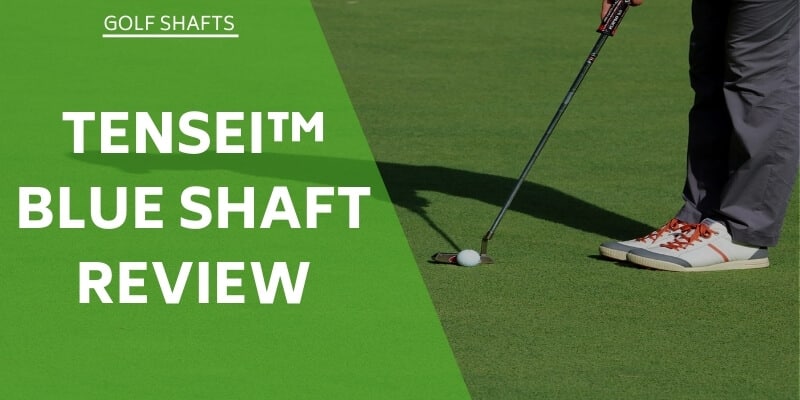
CONNECT WITH US

Best Cavity Back Irons of 2024 – Expert Tested on the Course & on the Range
Last Update
February 11, 2024
*This post contains affiliate links and we will be compensated if you buy after clicking on our links.
*Read our review guidelines.
Table of Contents
This is our review of the best cavity back irons on the market in 2024.
I’m an avid golfer, an 8ish handicap on my way to a 2 (been a 5.6) and frequent tester of golf clubs and equipment since 2015.
We tested every club on this page on the range and on the course. Our recommendations are based on our experience.
In this best cavity back irons review, we discuss, the benefits and features of each and our recommendations.
Our Top 4 Recommendations for 2024
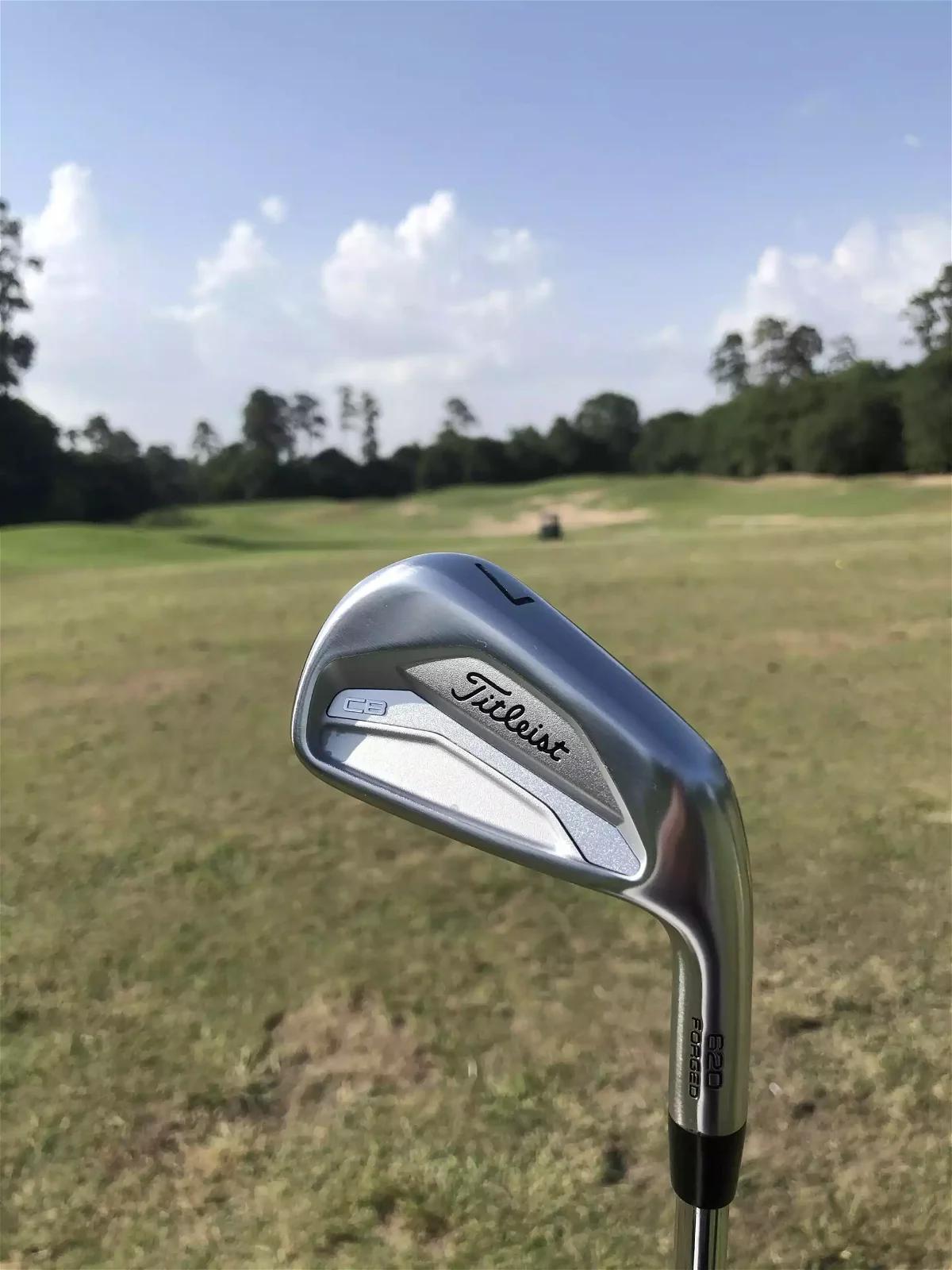
- Exceptional Feel & Performance
- Classic Elegant Titleist Design
- Surprisingly long
- Scoring MO-chines
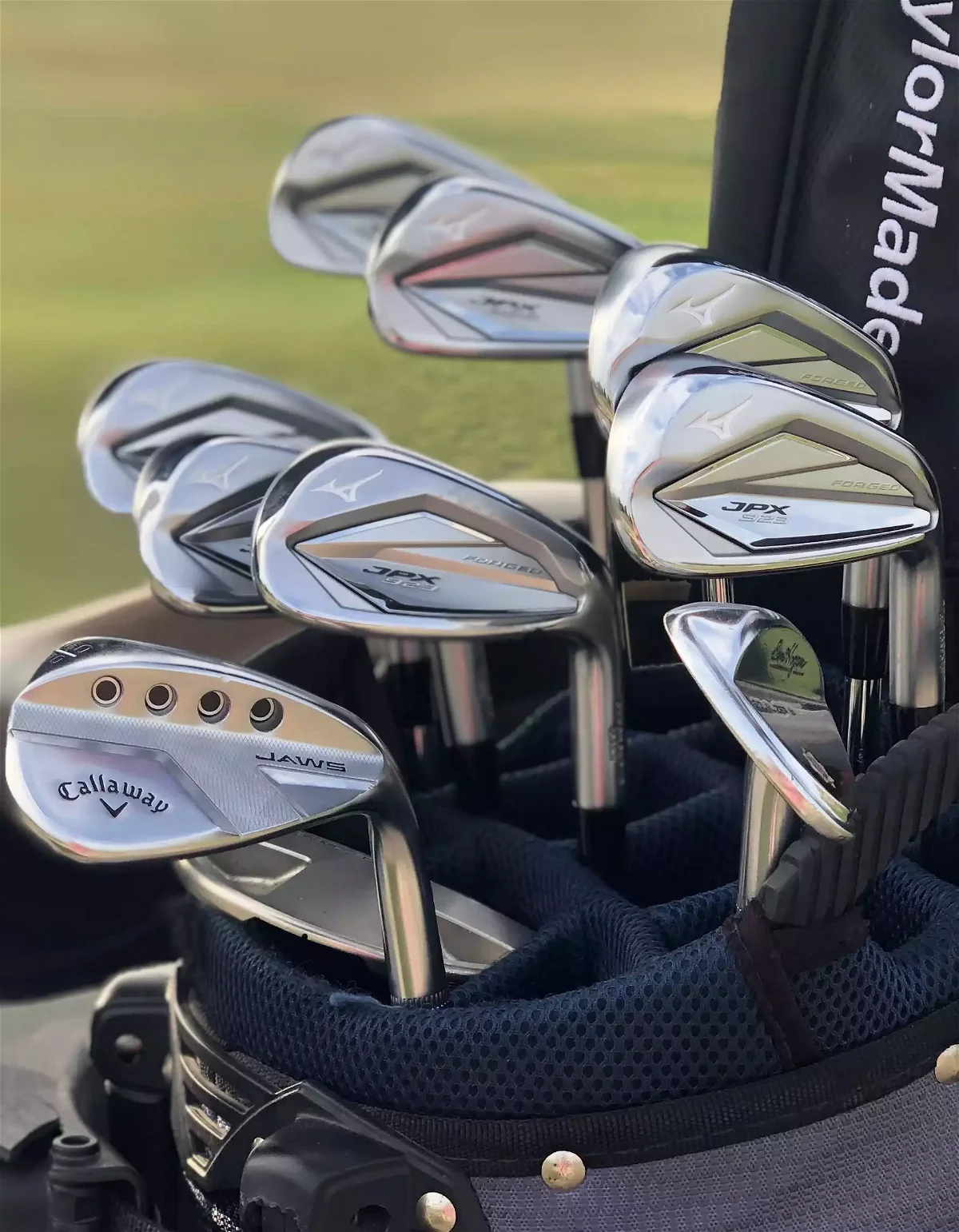
- Best Feel in Golf
- Superb Distance & Forgiveness
- Play all the shots
- Reasonable Price
- Still looking
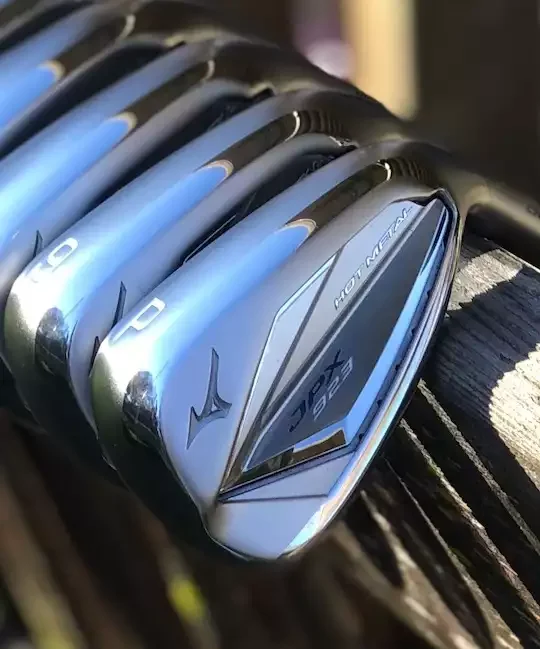
- Exceptionally Soft & Solid Feel
- Loads of Distance & Forgiveness
- Absolute Eye Candy
- Great Price
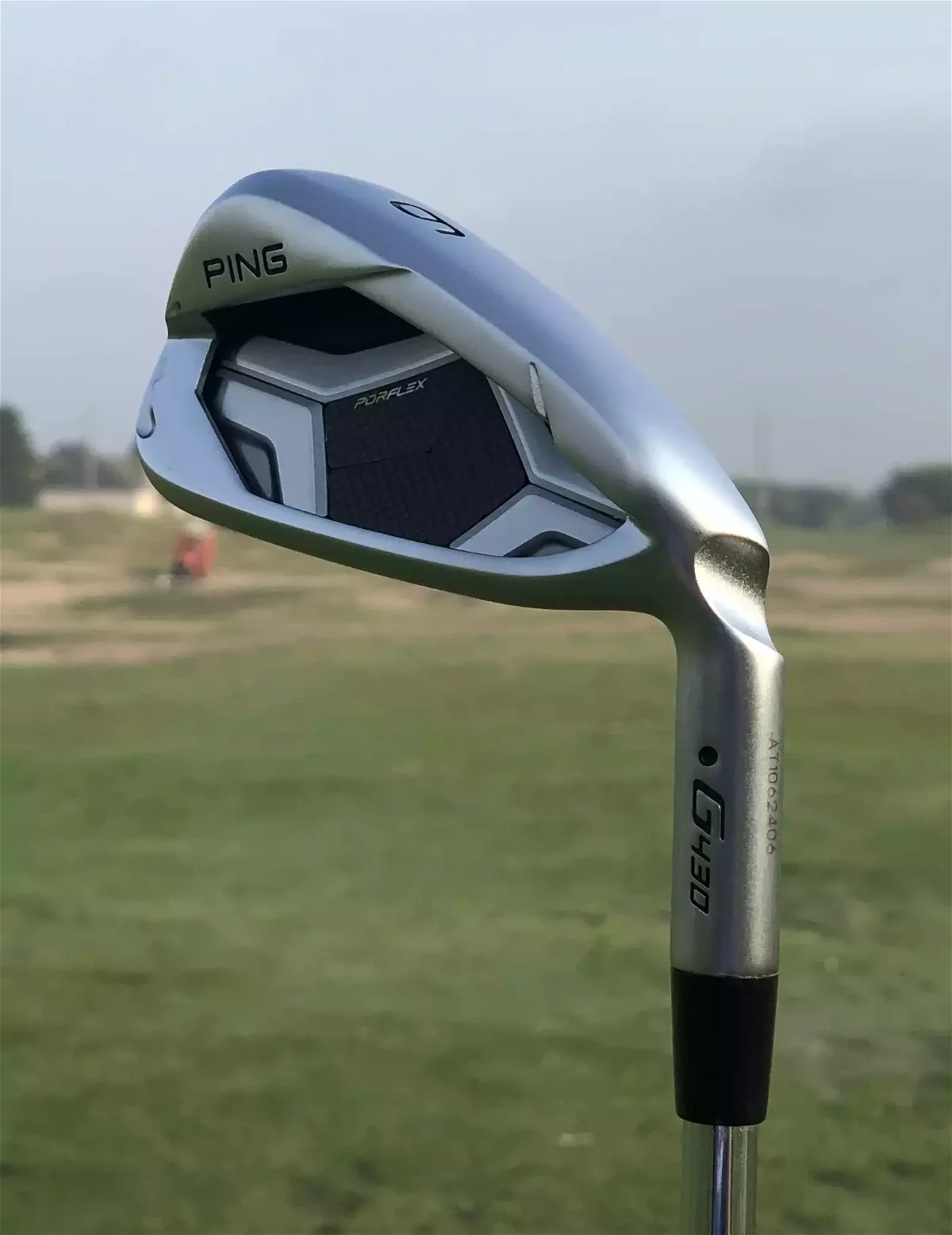
- Easy to hit & Elevate
- High trajectory & Straight Ball Flight
- Great distance & forgiveness
- Can shape & flight the ball as well
- Looks, not the best
Best Cavity Back Irons in 2024
Best for 0-10 handicaps

- Exceptional Feel
- Accurate & Consistent
- Great Launch & Trajectory
- Player Looks & Profile
Best for 0-5 Handicaps
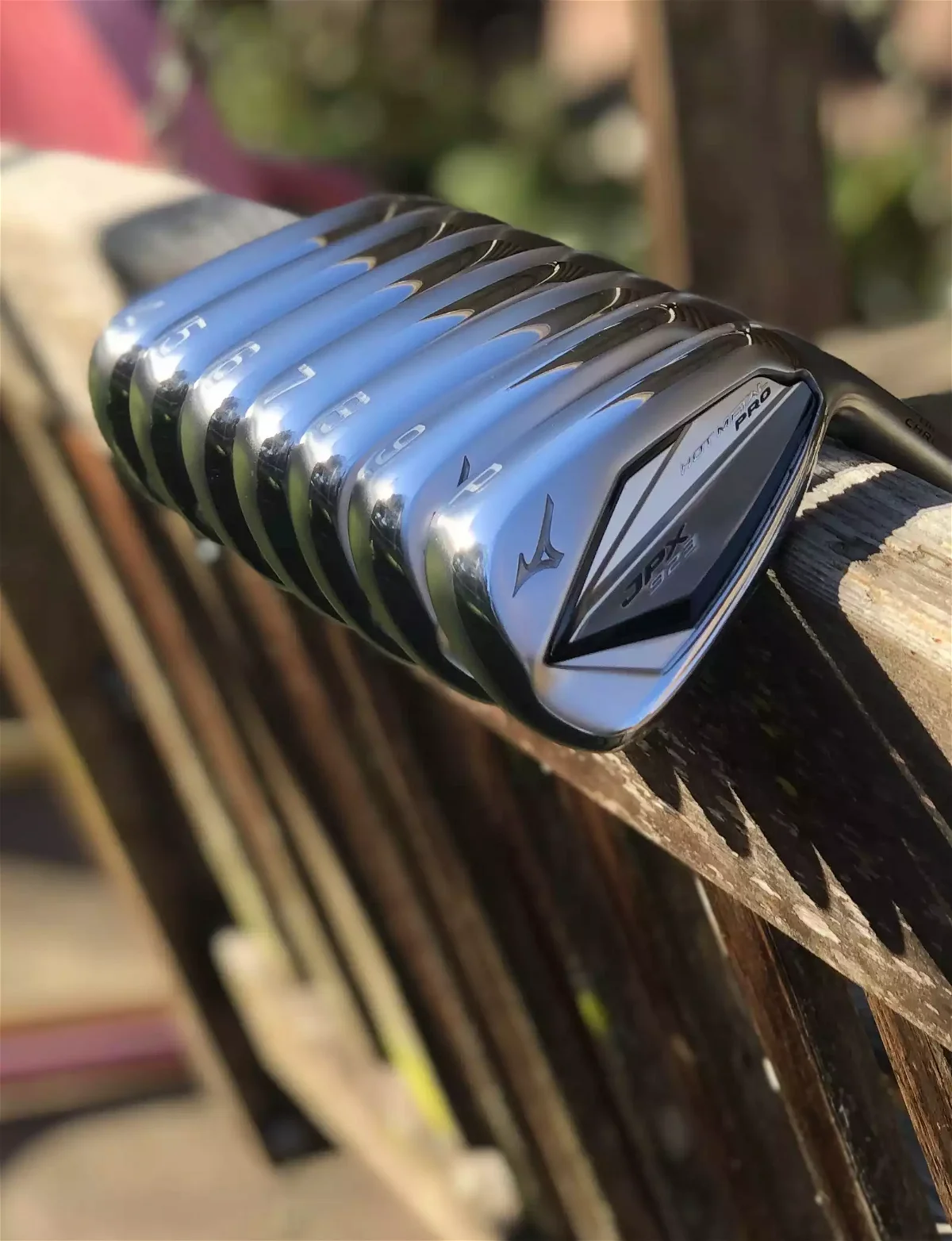
- Unbelievably Soft & Solid Feel
- Plenty Distance & Forgiveness
- Premium Looks
- Great price
Best for 8-12 Handicaps
- Same Buttery-soft feel as 921s
Best for 8-15ish Handicaps
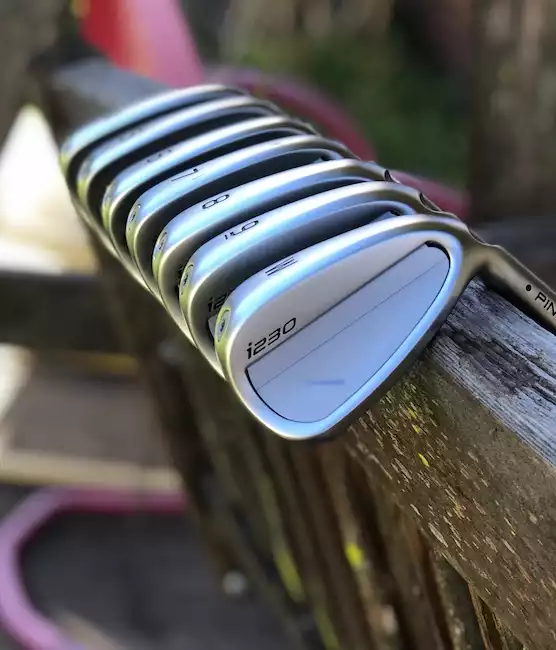
- Long & Forgiving
- Superb Feel & Sound
- Easy Launch with Great Trajectory
Best for 0-10 Handicaps
Best for 0-5 handicaps
Read our Review

- So... so easy to hit
- High trajectory
Best for 10-15ish Handicaps
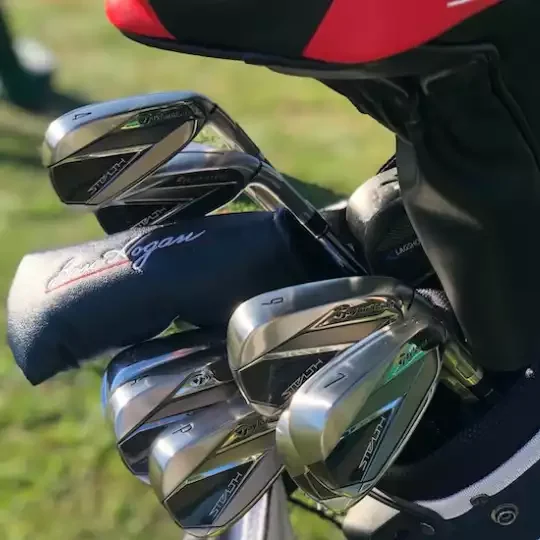
- Good Sound & Feel
- Elevates ball easily
- Easy to hit
Best for 15ish handicaps to beginners
Best Cavity Back Irons Reviewed
Mizuno jpx 923 forged irons.

Mizuno JPX 923 Forged irons are our top pic for best cavity back irons for 0 – 10 handicaps.
What we like:
- You get every bit of the playability you expect from low-handicap irons.
- Best feel of any iron I’ve ever put my hands on.
- Loads of forgiveness & distance.
- Compact clubhead & clean lines.
- Best price for new premium irons.
What we don’t like:
Mizuno took everything that was great about the JPX 921 Forged irons and shoved it into a more compact and better-looking clubhead.
We had 20+ mph winds for one of the rounds I played with them. I was able to flight them down into the wind and elevate them with the wind with relative ease. They perform exceptionally well in all conditions.
Customer Reviews: Mizuno doesn’t collect reviews, but everything I’ve read on the clubs themselves is 100% positive.
Recommendation : Go to your local golf store and get your hands on them or demo a set from Global Golf. You’ll know
Mizuno JPX 923 Tour Irons

- Bring your distance
The JPX 923 Tour irons are our favorite pure “player” cavity back iron from Mizuno and a solid step up from the JPX 921 Tour irons for me.
- Nice feel – improved over the JPX 921s.
- I found the long irons easier to hit – and hit well.
- Improved looks and profile.
- Just forgiving enough on slight mishits.
- Good, not exceptional feel like the JPX hot metals and JPX forged irons.
- Not short, but you have to bring your distance.
My strength is iron play, but not long iron play. I was able to hit solid long irons with good trajectory at my target time and again during my round with the 923 Tours.
I’ve improved my ball striking since testing the 921 Tours, but Mizuno has incorporated more performance in the 923s.
Customer Reviews : Early days.
Verdict : I think you should consider upgrading or at least testing the JPX 923 Tour irons if you own the 921 Tours. You may find the difference in performance worth the switch.
Mizuno JPX 923 Hot Metal Pro Irons

- Outstanding Value
The Mizuno JPX 923 Hot Metal Pro irons look and perform similarly to the Hot Metal irons, but the clubheads are a little smaller and sleeker to appeal to better players.
- Best-in-class feel.
- Exceptional forgiveness and distance.
- Launch easily with excellent carry.
- All the playability better ball strikers look for but can just fly high and straight if that’s what you need.
- Sleek and handsome clubheads.
The JPX line of irons are exceptional and the Hot Metal Pros are no different. Same superb feel. More forgiving than they look – and they look forgiving. They launched the ball easily for me and carried it on a high, piercing trajectory. They’re also exceptionally long.
Customer Reviews : Mizuno doesn’t collect reviews. But, you’d be hard-pressed to find detractors.
Recommendation : Just try them. You’ll thank me.
Mizuno JPX 923 Hot Metal Irons

Mizuno JPX 923 Hot Metal irons are the best irons for mid-handicappers and our #1 Recommendation for a few reasons.
- Buttery, marshmellowy, unbelievably soft (yet solid) feel.
- Incredibly forgiving and easy to hit. Great contact is not needed for good results.
- Exceptional distance.
- You can play any shot you want if you’ve got the game.
For this year’s JPX 923s, Mizuno combined Chromoly and Nickel to form Nickel Chromoly which allowed them to make the clubface 8% thinner, yet 35% stronger than last year’s JPX 921s.
So, the sweet spot is bigger for more forgiveness and distance over a larger portion of the face.
ALLL the good things I had to say about the 921s apply to the 923s.
Conclusion : Continued exceptional feel, performance, forgiveness, and distance out of the JPX line.
Recommendation : Just try them. You’ll thank me.
Ping i230 Irons

Ping i230s are my favorite low-handicap irons from Ping.
- They’re solid at impact for good control
- Have nice sound and feel with excellent feedback
- Get the ball up easily & send it on a high-penetrating ball flight
- Have just the right amount of forgiveness
Ping optimized launch, spin, forgiveness, and MOI for the i230s. And did it in a smaller clubhead than the i210s (which I also like).
I love the consistent loft gapping between clubs too. 4 degrees in the pitching wedge through 7-irons. Then, 3.5 degrees in the 7-iron through 3-iron. (I’m not sure why the change from 4-degree gapping to 3.5 degrees, though)
I prefer the i230s over the i59s and i525s because of their superior sound and feel. Not to mention I hit them better. The heads are larger than the other two, but not large. Hitting them reminded me of the G425s , which I also loved.
I was on or around the green all day during my rounds with the i230s.
Customer Reviews : 11 reviews with 100% 5-stars
Recommendation : Give them a try. If you like their looks, you’ll love the way they play and feel.
Titleist 620 CB Irons

Titleist 620 CB irons are our favorite pure player cavity back irons for a few years, now.
- They perform precisely how you would expect premium low-handicap irons to perform.
- They feel and play as good as they look…and they look GOOD.
- Surprisingly long.
- Just a splash of forgiveness with Zero harshness on mishits.
- Not a thing.
This is the second set of Titleist irons I’ve ever tested. The first was the T200s from a couple of years ago, which I loved. So, I had high expectations for the 620 CBs. They were exceeded.
Online images don’t do justice to how beautiful these irons are. From their minimal, elegant design to their perfectly sized compact head. Titleist knows how to do player irons .
I loved them on the range and I loved them on the course. The long irons are a bit much for me, but you can order any iron combo you want. So, no worries. I play hybrids starting with 4-hybrid anyway.
Customer Reviews: There’s not a whole lot out there on the interwebs, but the few I found had nothing but good to say about them.
Recommendation : Try them. I bet you’ll want to keep them. I did.
Ping G425 Irons

We loooove Ping G425 irons and they will be on our lists as long as we can find a place for our readers to buy them.
- Supremely easy to hit and elevate
- All the distance you need
- Can hit good shots all day long without needing perfect contact
- Awesome feel and sound for a mid handicap iron
- You can play any shot you want if you’ve got the game
- Shut yo mouth.
I was not expecting the G425s to perform as well as they did. I play soft carbon-steel low handicap irons and I thought the 425s would feel harsh and wooden. No sir. I’m a low handicap ball striker with my irons and these did anything I wanted.
Center contact feels great and slight mishits feel about the same, with no very little loss of distance. There’s a ton of forgiveness built into these irons .
The lofts are already jacked, but Ping offers even stronger lofts if that suits your game.
Conclusion : The G425s are one of the best irons for the average golfer I’ve tested this year.
Recommendation : You’re going to want to at least test these. My money is on you keeping them if you do.
Taylormade Stealth Irons

- Looks...not the best
The Taylormade Stealths irons are kind of a hybrid between cavity and muscle back game improvement irons.
- They launch the ball easily with a high trajectory.
- Generous sweet spot for premium forgiveness and distance.
- Clubheads are big, but not awkward looking.
- Looks, not the best.
They’re just not quite as good looking as the G425s. Yes, that’s a silly thing, but it’s the only differentiating factor from my testing.
Stealth irons feel great in my hands. Look great at address. And, hit the ball a ton. You can hit ’em high. You can flight them down. You can play any shot you want with these irons.
Taylormade Stealth irons are money and exactly what you want out of game improvement irons. They happen to be better looking than the SIM or SIM2 irons too.
Conclusion : Neck and neck with the G425s. Ever so slightly behind in feel and looks.
Recommendation : Need to be on your shortlist if you’re in the market for new mid-handicapper irons.
Ping G430 Irons

Ping G430s have all the playability, performance and feel of the G425s, but in an updated package.
- They’re easy to hit and elevate.
- They want to fly high and straight.
- You can still work them left or right, flight them down, or take off distance if that’s part of your game.
- Same great feel.
- Same forgiveness.
- Big step down in looks.
- Not as refined as the G425s
The lofts are stronger in the G430s and they’ve added more tech for distance. Well-struck shots were about half a club longer for me on the course and I got a couple of crazy-long numbers on my launch monitor.
As with the G425s, center contact is stellar, but slight mishits will get you good results too. I was on or around the greens all day.
Conclusion : Not a significant improvement over the G425s. I don’t think that would be realistic. The G425s are too good.
Recommendation : Keep your G425s. Test both sets if you own neither, and you’re in the market.
Do any PGA pros use cavity backs?
Yes, quite a few PGA pros use cavity back irons – Jordan Spieth, Patrick Cantlay, Xander Schauffele, Sam Burns, Jon Rahm, etc.
What are the best cavity back irons for mid-handicappers?
The best cavity back irons for mid handicappers are Mizuno JPX 923 Hot Metal Irons .
Do blades or cavity backs go farther?
Cavity back irons go farther than blade irons. They have better MOI and more forgiveness, thanks to their construction.
Can you shape shots with cavity back irons?
Yes, you can shape shots with cavity back irons. I’ve shaped shots as long as I’ve been playing golf, and I’ve used cavity back irons most of that time.
Verdict on the Best Cavity Back Irons on the Market in 2024
Read this site for a long, and you’ll quickly figure out we love Mizuno cavity back irons. So, they’re well represented on this page.
But, we feel you can’t go wrong with any of the irons on this page.
My #1 suggestion is to get your hands on them before you buy. Either at your local golf store or take advantage of Global Golf’s Utry trial program . I use it and recommend it.
Thanks for checking out our review of the best cavity back irons in 2024.
Related Posts
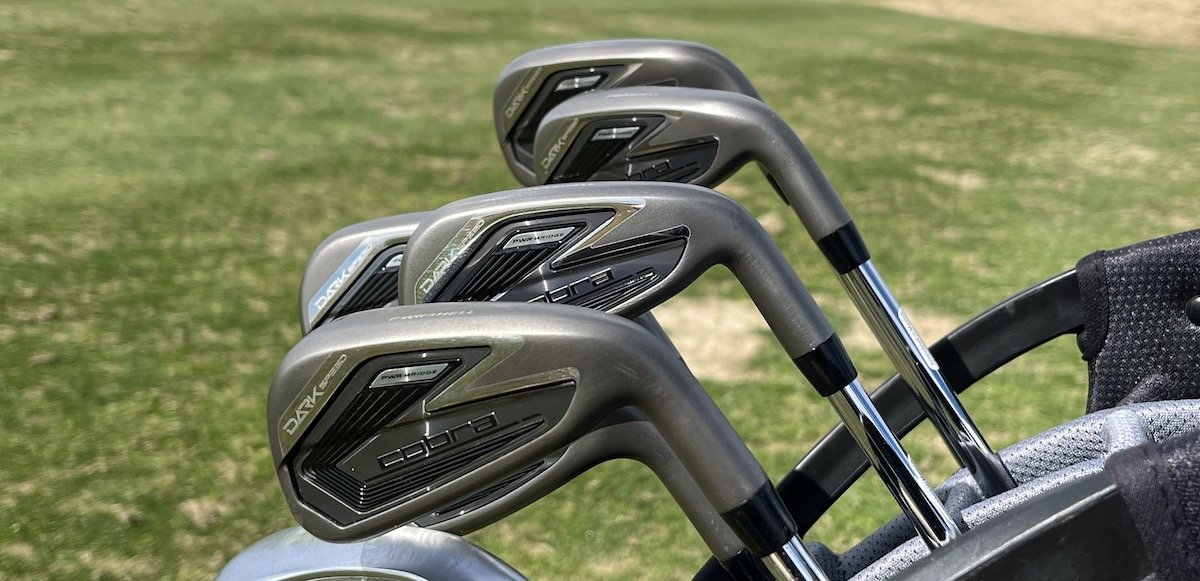
(281) 861-2609
Other Links
We may receive commissions when you click our links and make purchases. However, this does not impact our reviews and comparisons. We try our best to keep things fair and balanced, in order to help you make the best choice for you.
As an Amazon Associate, I earn from qualifying purchases.
© Golfer Geeks 2024. All Rights Reserved.
124th U.S. Open
Pinehurst No. 2
Ironclad Proof

Henrik Stenson at the Players is the most prominent recent example of a tour player using cavity-back irons en route to victory.
Last week I was playing at my home course and noticed one of the guys using a set of muscleback blade irons. Lovely as the clubs were to look at, he is a 12-handicapper who has no business swinging such sticks. When I asked why he didn't opt for more forgiving club, he said, "They feel great. Besides, I like using what the big boys use."
Sorry, but I have to throw the B.S. flag on both of those statements.
First, I bet those irons feel real good when striking a shot on the toe and watching it flutter like a knuckleball. As for it being what the tour players use, fact is more than 70 percent of players on the PGA Tour use some form of a cavity-back iron.
That's right, 70 percent.
I'm not about to question what Tiger Woods (Nike Victory Red TW Blades), Phil Mickelson (a Callaway prototype blade) or Geoff Ogilvy (a Cobra muscleback) choose to play, but for every one of them, there's three others such as Kenny Perry, Sean O'Hair and Nick Watney swinging cavity-backs.
Look no further than last week's Players championship for evidence. After playing Srixon's I-701 blade all season, Henrik Stenson returned to the company's cavity-back I-506 model (the same irons he used to win the 2007 WGC-Accenture Match Play) and took the title. That made it 12 wins for cavity-backs in the 20 PGA Tour events played so far this year. Musclebacks, meanwhile, have seven wins while Paul Casey used a split set in winning at Houston.
Part of the reason for the surge in cavity-back usage among the game's best is that manufacturers are able to make cavity-backs that look, feel and play like traditional forged blades while adding a hint of forgiveness and placing the center of gravity a bit lower to help today's lower-spinning golf balls get up in the air. Gone are the days when cavity-backs were considered clubs "for choppers only."
"We're doing things in forged irons now that simply wouldn't have been possible even five years ago," said Roger Cleveland, who designed Callaway's first forged iron, the X-Tour, that was used in major wins by Phil Mickelson and Michael Campbell. "We can give players what they're used to in terms of shape and feel, while adding playability benefits."
Cleveland's mentioning of forged is key. Manufacturing advancements have made intricacies such as different-shaped cavities and undercut channels -- previously only attainable through casting -- now possible in a forging.
"There's no drop off in feel but there's a noticeable benefit on mishits with a cavity-back," said Trevor Immelman, who plays Nike's forged, cavity-back Victory Red Split-Cavity irons. "But when you look down at it, it looks like you're playing a blade. It's really the best of both worlds."
That's a past Masters champion talking. Still, there are everyday players who insist on shopping for muscleback blades. You are also the type of person I'd like to up the Nassau wager on when we go to the first tee. Instead of playing 5-5-10 maybe we should go car-car-house?
In short, ask yourself this: If the best players in the world are eschewing muscleback blades, why am I even considering them?
For some of the game's best, musclebacks can be effective. But unless you're driving a courtesy car at a tour event, they fall into the category of "don't try this at home." That goes for my buddy back at the club, too. After all, when you're buying a set of irons, a pure swing is not included.
More from Golf Digest
Trending now.

The real difference between blade and cavity back irons
It is one of the most commonly debated topics in golf: “What are the real advantages/disadvantages between a set of blade and cavity-back irons?” It goes even further when we start comparing traditionally lofted clubs to those with stronger lofts and faster club faces.
I sit in the crosshairs of this debate. As a fitter, I rarely fit any golfer into a full set of blades and instead opt for combo sets to offer better performance into the longer irons. On the other hand, as a lover of traditional equipment, I often play a full set of blades, but prefer to pick my battles on shorter courses that emphasize the ground game and shaping the ball. I fully acknowledge my contradictory approach.
Note: My go-to set is a smaller multi-material players cavity that offers the best of both worlds
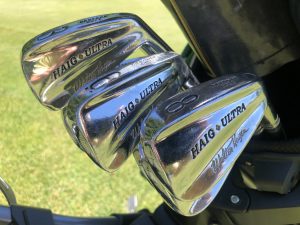
Kevin Na even entered the debate when he made this statement on Golf.com ‘s Fully Equipped Podcast,
“I can’t play a blade. It’s too difficult, and I’m a pro golfer. I think a blade goes shorter. Off-center hits aren’t going to perform as well as cavity-backs. I don’t see a reason why you’d want to play a blade. I really don’t. I played blades in my early 20s, maybe one year — when I was dumb. But I’m wiser now and play a cavity-back. “In the longer irons, I even look for more — I don’t want to say a high-handicapper club — a more forgiving club.”
I’ve heard the same thing from other PGA Tour players, including Charles Howell III, who was quoted as saying “I really wish I was good enough to play these (Titleist 620MB’s)” when he was first shown them during prototype testing. Now Mr. Howell and Mr. Na are both tremendous players, but when a 200-plus yard shot over water in a stiff breeze can mean the difference between a top ten and tie for 20th, I can understand why some players would want something a bit more forgiving—you know, just in case.
It’s all about choices
When it comes to equipment, there is more than one way to choose what goes into your bag—you can rely fully on optimizing performance or choose the equipment you want to play based on other factors and do your best to maximize the available performance. I believe both ways of approaches have merit, since every golfer enjoys the game differently, although at the most competitive level, I would still choose total performance over other factors.
Unlike a driver fitting, where distance is almost always the main objective, finding a set of irons involves—as the name suggests, an ideal set of clubs designed to hit shots precise distances and land closer to the intended target. We covered one of the most important iron fitting parameters, descent angle here— Buying new irons? This is the most important fitting parameter
The proof is in the data
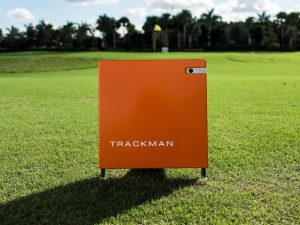
If you are curious to see the real difference in performance between blades, cavity backs, and then faster-faced irons, check out the video below featuring Titleist Master Fitter Glenn Mahler going through the results of a fitting with Titleist 620MB, 620CB, T100, and T200 irons.

Cobra Pars and Stripes SpeedZone drivers: Limited-edition launch at retail tomorrow
Adidas introduces limited-edition ‘Summer of Golf’ CodeChaos footwear
Ryan Barath is a club-fitter & master club builder with more than 17 years of experience working with golfers of all skill levels, including PGA Tour players. He is the former Build Shop Manager & Social Media Coordinator for Modern Golf. He now works independently from his home shop and is a member of advisory panels to a select number of golf equipment manufacturers. You can find Ryan on Twitter and Instagram where he's always willing to chat golf, and share his passion for club building, course architecture and wedge grinding.
50 Comments
Apr 26, 2024 at 10:20 am
All the measurements are minimal. Heavy grass, wet greens, etc are way more of an impact than launch angle or loft strength or whatever. I golf blades, CB’s, and hickories and once I’m tuned in there is no difference in scores. The big deal here is only marketing. Pros get paid for playing new clubs and that’s, in so many ways, the bottom line.
Jul 28, 2021 at 1:08 pm
My improvement from mediocre to OK golfer came with a switch to blades.
Have been an 8-11 hcp for a loooong time (~25 years), mostly playing a set of 1972 Apex irons that I bought used for $35 in the mid-90s.
Notable that prior to and concurrent with getting the Apexes I had tried Ping Eye2 and Callaway X-12 in search of higher trajectory and more consistency. What I found was LESS consistency (I had been playing Wilson Staff Goosenecks). Distance control was difficult, and the Callaways in particular would sometimes rocket 10-15 yards longer than expected.
Once I put the Apexes into play I hit the ball “worse” (i.e., shorter and lower) but my dispersion was much better.
For the last two years I’ve been playing a used set of Mizuno MP-68s. They are bigger than the Apexes for sure, and easier to hit. But if the Apexes had fresh grooves on them, I’d still be playing those.
One thing that drives me nuts with trying to play the bigger, “more forgiving” irons is using them for chipping…they’re just too damn big and distance tends to be more difficult to control. Also harder to hit out of thick, wet rough, which we get plenty of here in the PNW.
Happy with the Mizuno blades and/or the Apexes. The one thing I would consider is a set that progressed toward different weighting in the 5 iron and up…more perimeter weighted. You’re definitely seeing more and more of this with the pros, even the ones who play blades.
Jul 30, 2020 at 6:23 pm
After being a club fitter for 12 years, it never ceases to amaze how hack golfers try to justify playing blades. The only people that should play forged blades are the ones that HAVE to play forged blades. AKA great ball strikers that also hit the ball too high with anything else. If you arent a good ball striker, stay away from anything forged, blade or otherwise. If you are a good ball striker, forged is fine,but only play a blade if you cant control the flight on CB type irons.
Joey joe joe
Jul 18, 2020 at 12:44 pm
When Davis Love iii wants to hit a long driver, he focuses on a dead center strike. Every amateur in world seems to swing harder. This is why we suffer 6 hour rounds. Play a blade. focus on strike and accuracy on every shot. Save literally a $1000 by opting for an older MP over a T200 and learn to strike the ball dead center while hitting down on it. You don’t need tungsten. Cavity backs are fine but don’t think they are going to save you strokes. They won’t. Playing a premium ball around the green and making solid strikes will. It’s that simple.
Jul 6, 2020 at 3:38 am
It’s what you grow up playing with.Golfers who take up the game in their late teens or later are better off playing CB. I got handed a blade when i was 12yrs old and that’s all i know. The only CB i have tried and would think of using would be the Ping i210s….and yet they still look like shovels to my eye.
Jun 26, 2020 at 5:19 pm
I play blades.
I also play baseball with a tennis racket, eat spaghetti with a spoon, surf the net with a Selectric, pet my electric eel, and argue with my wife.
Jul 2, 2020 at 11:36 pm
Stupid comment
Aug 12, 2020 at 4:06 pm
Stupid commet
Jun 22, 2020 at 12:45 am
OK… The setup… I’m probably no where as good as the golfers posting here. Currently a 13.2 HC But feel I have been currently playing to a 20. My iron play is crap right now. My golf is limited from September to February and declines significantly due to the layoff. I also have health related physical limitations. I’ve been practicing much more the last two weeks.
I have 3 sets of irons. Mizuno MP 68 3-PW, Mizuno MP-5 3-PW and Titleist 716 AP2 4-GW. I carry hybrids in place of the 3I, 4I & sometimes 5I. I put the 5 Iron back in the bag as my swing speed and contact improves. I have Ping G-410 Plus driver, Ping G-410 3 Wood and Callaway Epic Flash Heavenwood. The Heavenwood will never come out of my bag! If I got one club right, that is it.
The MP-5 are my main carry set, my favorite. I bought the Titleist last year to have a little more forgiving cavity back February to Mid-May as my swing transitions back. Bad decision, I can’t hit the Titleist and the distances are shorter when I do. This year I decided to try “super game improvement” or “game improvement” (you pick what they are) irons to help with forgiveness and distance. Ping G-400 was selected. They tend to be a little more forgiving but I had issues squaring the club face, most shots were a 5 to 10 yard fade. I couldn’t turn the ball over. I also struggled with consist distances. I honestly thought I would have some issues with “feel” and “sound” but I didn’t. That really surprised me. Do the MP-5 feel and sound better? You bet. But with the G-400 it wasn’t even an issue, I was seeking help. I’m taking them back though.
The MP-5 are back in the bag. Much more consistent shot dispersion. Much more confidence. Why? I honestly do not know. Other than I get better results with them. Why does a high handicap golfer such as myself get better results from blades/muscle backs than cavity backs? I don’t know.
In the future I plan to have two sets of clubs, a game improvement and blades/muscle backs (as mentioned above/below). I’m unsure the degree of game improvement desired. Moving forward I will try the PING G-710, The Titleist TS 100 and might even upgrade the MP-5 to MP-20 MB.
The Titleist TS 100 is very intriging and honestly look like a set that could be “The Set.” Maybe combo with T200, T300, T400 and/or U-500.
Bottom line, I love my blades. I’m more consistent with my blades. But I’m willing to give other types a try.
Jun 30, 2020 at 9:16 am
The reason why you fade your ping g-400, may be the weight of the club and the thicker sole that makes the toe of the club go more down. That will give you more fade.
So for that reason, it may be the sole and better turf interaction that makes you play better with the MP-5.
I had a miura cb501 set, but when i sold that set, and borrowed a “game improvement” set with thicker soles and in theory a more forgiving irion, i had a hard time controlling the dispersion and distance of the shots.
So for me also, CB\MB all the way.
TacklingDummy
Jun 21, 2020 at 3:38 pm
Personally, I’m not a fan of putting together combo sets (blades, cavity backs) because they have a lot of differences. Combo sets have different soles, offset, blade size, weighting (sometimes), feel, etc. So, they do perform quite differently. However, I do like sets that are made to be a progressive combo set because then the iron differences are slightly incremental through the set and not a distinct difference between the blades and the cavity back sets. I had some Hogan FTX Tour irons that was a great progressive set. Bladed wedges and differences (more cavity back, wider soles, more offset) progressed through to the 3 iron. Great set at the time.
Jun 21, 2020 at 9:54 am
Keep in mind , today’s ” blades” are really much more bigger and forgiving than those if years ago. They really are musclebacks. Wilson Staff blades of the 70’s make today’s Mizuno MP 20’s look like cavity backs!
Jun 20, 2020 at 6:06 pm
So, here’s how I have the numbers from trackman, based on the screencap.
620 MB–Backspin: 6187 rpm, Carry: 148.3, Peak: 82 ft, Desc. angle: 45.6 620 CB–Backspin: 6800 rpm, Carry: 147.4, Peak: 89 ft, Desc. angle: 48.2 T100–Backspin: 6928 rpm, Carry: 154.5, Peak: 83 ft, Desc. angle: 45.8 T200–Backspin: 5766 rpm, Carry: 161.4 Peak: 87 ft, Desc. angle: 45.7
Looking at these numbers, the outlier seems like the t200. I’d be afraid of what happens to spin on a mishit–where you might get a ball that just won’t stop. The MB would typically bleed ballspeed, so you’ll have a shorter shot by a club or two, but you won’t blow past a green.
The CB seems to give the best stopping power here given the steep descent and high spin. The T100 also looks good–more backspin than the MB with a similar descent. The MB doesn’t look terrible, either.
Long story short–the t200 just looks like a 6 iron in this relationship.
All that being said, I’d be curious to know how much a foot of height is worth in stopping power. Everything here is basically within the same spectrum–similar descent angle and heights–the only one that stands out is the CB.
Happy to hear your thoughts, Ryan–but it seems to me that every iron on that sheet is playable with slim margins of difference, with maybe the CB taking a lead based on the higher spin and steeper descent.
Jul 4, 2020 at 12:39 am
Long story shorter – blades suck. The traditional blade – the 620 MB – is atrocious and only made playable by turning it into the 620 CB. The T100 is decent and T200 is better but only because they threw some tungsten in it for height and forgiveness, and delofted it 3 degrees (as you said, turned it into a 6 iron). But blades look cool.
Oct 1, 2020 at 4:47 pm
Hmmm, my 71 yesterday with the 620MB seemed to counter your “blades suck” comment. Would I have shot a better score with the other irons mentioned?
And, frankly, I think my current rifle shaft 6.0 is too soft for me.
Nov 16, 2020 at 5:54 am
Il T200 ferro 7 è praticamente un ferro 6. Dovrebbero confrontare i ferri dalla loro lunghezza e loft invece di confrontarli guardando solo il numero stampato. Non sono un fitter ma mi sembra palese la cosa e non capisco perchè continuano a non considerare questo. Anzi lo sò.
Jun 20, 2020 at 10:25 am
It looks like the trend in Irons is now going to Hybrid looking clubs with wide soles and easy to hit. The Cleveland, Cobra, Wilson and even titles is doing toe dip along with Callaway. The point is to make is easier. Of course today it is all about looks, ego, I need what the Tour Guys Play, and more reasons not to use the latest in tech. I am sure it was that way back in 20s also. But so many think it is only for hackers and not for them. As a guy told me one day way back when I asked him why he played that butt ugly club called PING, He said he bought them because he got tired of losing to all the guys at his club played PING.
If this is as good as they think we may even see sets on the Tour,,, way down the road of course. I have played old pure blades in my time, newer blades, then to CBs and after hitting the Wison will probably go there. At 81 I found hitting was easy as hitting a Hybrid, I think they are the futures.
Jun 20, 2020 at 2:17 am
I am PGA Pro and played with many different brands and models over the years, mostly blades, sometimes cavity backs. The article above is the opinion of many people I met, but is nonsense in my opinion, because there are blades that play buttery soft and forgiving and there are cavity backs that break your bones and dont forgive the slightest offcenter hit, also ones that provide the ball strike performance of blades. Also is it sometimes the opposite, it depends very much on the model. In many years, the MBs of Titleist been more foregiving than the CBs, Mizuno and Cleveland blades are mostly unforgiving, Miura Blades are sweet as hell, but we also shouldnt forget the shafts and grips who make big differences. The tour players who made that statements above, tell in that sentence why they never will be No. 1 in the world. Nr.1 players of the last 30 years played blade irons.
Jun 24, 2020 at 7:12 am
Jordan Spieth wasn’t playing blades when he got to world number one.
Jul 6, 2020 at 9:24 am
Maybe ask yourself why his stay was so short? He was #1 briefly against an extremely weak field. Lots of injuries and time off for other good players.
Spieth would kick my butt any day of the week. But there’s a reason he’ll never be #1 again. And why the other top players all play blades from 6 or 7 down. Mild cavity up from there. Very few hybrids. Lots of driving irons and strong lifted drivers.
These players are a different animal. For sure. But someone seeking to be the best should emulate the best. It’s always been that way. It’s why Adam Scott has built a major winning career being a carbon copy of tigers old swing.
Should the average golfer hit blades? No. But a 10 handicaper isn’t the average golfer. The average golfer is a 110 plus golfer. Anyone with good middle contact and striking angle would benefit from the spin and descent angle of MBs and CBs. The monitor shows it. The best numbers in terms of trajectory were the mbs and cbs. 7 yards don’t mean anything if you can’t hit or hold the green. Period.
Jul 13, 2020 at 8:47 pm
Or Jason Day, Brooke Koepka….
Torbjørn Bjarmann
Jul 21, 2020 at 5:58 am
Or Jon Rahm
Gunter Eisenberg
Jun 29, 2020 at 12:06 pm
Duval was playing 962s when he became world #1. Silly man.
gwelfgulfer
Jul 29, 2020 at 11:44 am
Lee Westwood and Luke Donald didn’t have blades in the bag when they hit #1. But much of what you said isn’t based in reality anyway, just flawed and easily debunked opinion…
Also, your run on sentences and grammar suck…
Jun 19, 2020 at 6:30 pm
I’ve played everything from super game improvement irons to blades. My scores never change based on what irons are in the bag. Seems to me what effect my scores are if I keep my tee shots in play, avoid chunking or skulling chips, and make a few putts. I’m just as likely to shoot 90 with sgi’s as I am to shoot 78 with blades. Just depends on how the cookie crumbles that particular day.
Joey kurator
Jul 30, 2020 at 11:49 am
Very well said.
Jun 19, 2020 at 12:47 pm
Great article thank you. I’ve been on the search for the highest ball flight possible with all clubs except driver for years. Refer to it as a playable trajectory. Also been working swing mechanics too. One take away is “softer tips” do not always equate to better results which leads me to the question of during this head comparison, were the same shafts/flex used in the mb through the T200? Another question that I imagine that the answer is likely swing mechanics; I find it easier to get the club on the back of the ball for crisper contact than with a Mb instead of a head profile size of the t200. I would play a full set of hybrids but I don’t think my ball striking would improve at all
Jun 19, 2020 at 6:49 pm
We can do some head comparison.
Jul 6, 2020 at 9:12 pm
Remove the shaft from your 5 iron and replace it with your 6 iron shaft…. now how much higher do you hit your 5 iron. That is in effect what the snake oil guys do.
Its the shaft not the clubhead. and most of us play with too much SW.
Jun 19, 2020 at 11:49 am
Hitting a MP-18 seven iron pure is like self-gratification without the guilt.
Mike Arnold
Jun 19, 2020 at 11:40 am
Funny thing the picture of the Haig Ultra is the clubs I purchased back in 1972. I still have them and play on occasion. After 59+ years they are in excellent condition.
Jun 20, 2020 at 12:03 pm
You scared me. I was born in 1972, but I’m (checks with wife) 48.
Jun 19, 2020 at 10:36 am
Here we have a well written article, science based with no bias and it gets 52 shanks? LOL I am never surprised by the WRX MB fanboys, that could shoot lower scores, have a higher smash factor, generate more ball speed at a higher peak and still claim anything other than a MB is hype from OEMs. Like you Ryan, I have a set of Srixon Z Forged MB’s I play every now and then for fun. But I play T100-S irons because they give me all the advantages of a MB with the added forgiveness of a CB. Like a blade, high and low struck shots really suffer but a little on the toe and heel turn out much better than my Srixon’s. I am playing to a +1.2 but will take all the forgiveness I can get. Nice article!
Jun 21, 2020 at 8:33 am
Plus one to this. I play T100 which look and feel like a blade but my thin miss still carries. These irons also have a thin enough sole to flight the ball if needed. I really don’t see why I would play a straight up blade except that they look awesome!
Jun 18, 2020 at 10:43 pm
Worms! Worms everywhere! Who opened that can?!
Jun 18, 2020 at 7:06 pm
“We’re so excited about our t200 line”… so excited that for this test we put a 30deg club up against a 35deg club to see if it goes further. That is more that a full club in loft. Pure propaganda. They could have put the 8iron from the T200 into the test and it would have been stronger lofter than the MB’s andCB’s 7 iron.
The number on the club is irrelevant. The club that feels best, travels in the air the best and suits your game the best is the most important thing. If you are so self conscious that you want to hit a 7 iron longer than everyone else, the get a custom set and stamp your 24deg iron as a 7.
The really interesting thing about this test was the fact that the the blades outperformed the CB’s.
Ryan Barath
Jun 18, 2020 at 10:10 pm
Hi, The test shows how much vertical CG and faster-faced irons create more launch and even with stronger lofts achieve higher descent angles which is exactly what most golfers need – myself included.
Jun 19, 2020 at 3:45 am
No doubt, but in the spirit of a true test, you should have tested the 620MB 6 iron at 31deg in comparison to the T200 7 iron at 30deg (like lofted clubs). It would most certainly have proved your point on vertical CG even more as the gap in height and descent angles would be larger again (and the distance gain would not be so misleading). When you go out looking to buy a fairway wood, you don’t go out and test a 15deg 3W to a 21deg 7W expecting to get a true indication of performance.
Jun 19, 2020 at 12:45 pm
Testing X iron to X iron is the best way in my opinion because its the way 99% of fittings are conducted and is also how most golfers get fit and compare clubs. Our goal is always to educate the greatest number of golfers while also going in-depth to allow people who are already knowledgeable extra insights.
Jun 21, 2020 at 1:18 am
Not sure if you saw this video from some people you also coop with: https://youtu.be/dfKbkytvpmM
Based on that blade and CB are very similar distance wise if you make the same lofts.
Bill Elliott
Jun 22, 2020 at 7:58 pm
ryan, now you’re reaching, as sandtrap said, it should have been comparable lofts. We all know why lofts have been jacked–I will spare you that debate…
Jun 24, 2020 at 6:52 am
Listened to the podcast. You say let’s call it an ‘A wood’, a ‘B wood’ a ‘C wood’. Why not just call them an ‘Elephant Wood’, a ‘Pineapple Wood’ or a ‘Cloud Wood’?… … OR just label them by loft? The actual scientific standard for that particular club.
Like I said originally, this is pure manufacturer propaganda, which you are obviously happy to promote. I guess it is all good as long as the fitter explains that the buyer may need to buy 1-2 extra wedges between their 43deg PW and their 56deg SW.
Jun 24, 2020 at 7:08 am
…I should also add that a slower swing speed golfer who is looking for a higher descent angle and more spin would actually be more impressed if they compared the numbers of a 34deg t200 to a 34deg CB (if they are not concerned with the fact that it doesn’t go 14yds further as the manufacturers would want you to believe by their ridiculous lofting on GI clubs).
Test Better
Jul 1, 2020 at 1:16 am
https://youtu.be/dfKbkytvpmM?t=894
If anything, the cavity is slightly better for players who don’t dime it.
For those of us that can, the blade is far more predictable.
If you sacrifice predictability for distance in irons, you’re not a good golfer.
Jun 18, 2020 at 3:52 pm
Blades are the easiest to square at impact and have the best turf interaction. This is one of key reasons some people play them. Combo is not ideal blend, this is why clubs like ping blueprints are so good but still a lot of folks don’t get it.This article is one of many that should just me removed, sorry.
Jun 18, 2020 at 5:05 pm
Definitely can’t beat the turf interaction with blades, especially out of fairway bunkers and trouble lies.
Jun 18, 2020 at 5:24 pm
Not to mention that it looks like Ryan’s warmed up proper with the T200 vs his initial shots with the MB/CB’s (I know my numbers get better and better at the range for about 40 balls before they plateau and then eventually drop off). The only test worth looking at for this is with a robot and an unbiased operator of the robot IMO. The drop in spin rate vs the peak height is going to affect how much grab that ball has also and it’s not being mentioned anywhere : / (especially with 1200 RPM).
I bag two sets of clubs, I have my tech bag for when I want to play my best (Odyssey mallet, 5-gw 716AP2’s, two hybrids, mid/high bounce CBX wedges), I avg an 8.6hc with this bag.
I also have my wannabe pro bag for when I don’t care what I score (Titleist 917D2, 917F2, TMB 3-4iron, 714MB 5-9i, 47-60º Vokeys and Scotty blade). I avg an 9.8hc with this bag.
Jun 18, 2020 at 10:17 pm
Hi Tommy, You are correct. For better players a golf club with a center of gravity closer to the axis of rotation ( the shaft ) is easier to square at impact, this includes all clubs with shorter blade lengths in general. But it can also be more difficult to create a consistent closure rate for less skilled players because the club is also easier to move around that same axis.
Its why an iron like the T100 is so popular because it has a very high MOI for a club with a shorter blade length. This gives more stability on off-center hits to help maintain ball speed but gives better players the ability to control face angle.
As much as you suggest we remove the article I believe it offers a lof of golfers insight between different clubs – thanks for reading it.
Jun 18, 2020 at 3:27 pm
… that pick brought back memories played a set of Haigs back in the 70’s… you had a nickel-sized area to strike or your forearms would soon reverberate…beautiful looking clubs, I had them refinished & rechromed and they hang on the wall in my family room…????
Lowell Madanes
Jun 18, 2020 at 3:00 pm
For me it comes down to personal preference. I still play blades now but have more cavity towards my longer irons. I played Mizuno for the longest time. Switched over to Cleveland CG1’s and fell in love with having to strike the middle of the club face. Yes you will lose in results if you don’t hit the face consistently enough. I love the feel of a well hit blade and I tend to make adjustments based on how I am hitting my irons. That’s me an my preference. Kevin Na is staying his case and what he likes. At the end of the day, go with what feels good and gets you the results you want.
Your email address will not be published. Required fields are marked *
This site uses Akismet to reduce spam. Learn how your comment data is processed .

You may like

“A big misunderstanding” – Charges against Scottie Scheffler dropped

Why pros are putting Callaway’s new Triple Diamond Max driver in play

Rafa Campos WITB 2024 (May)

Takumi Kanaya WITB 2024 (May)

PGA Tour pro calls for Nelly Korda to be given exemption into men’s event

WITB Time Machine: Jason Day’s winning WITB, 2015 RBC Canadian Open
Editor’s note: This is an excerpt from a piece our Andrew Tursky originally wrote for PGATour.com’s Equipment Report. Head over there for the full article.
According to Nick Yontz, Callaway’s advanced R&D manager, PGA TOUR players began testing the prototype last November and found it to provide a unique combination of speed and forgiveness.
“Players would step up and we had it matched up to their gamer driver specs,” Yontz said. “They would swing, and we saw consistently good ball flights – very stable. It was the word ‘stable’ that continued to be used by players.
“They would continue to split the fairway and what that caused them to do was to start swinging faster. They had this excitement that, ‘This thing doesn’t go offline. I can keep swinging harder and harder and it maintains that straight flight.’

“We were seeing players that would have small gains in ball speed from just the driver head alone, but then the swing speed would increase the more and more swings they made. By the end of it, they really saw meaningful gains in ball speed and distance.”
From the sounds of those early testing sessions, it’s no wonder the Triple Diamond Max prototype head made its way into PGA TOUR bags, and will soon be available on retail shelves. Among 2024 RBC Canadian Open players this week, it’s been confirmed that Wesley Bryan, Kevin Yu and Carl Yuan will be using Callaway’s Triple Diamond Max head.

Head over to PGATour.com for the full article.
Whats in the Bag

- Rafa Campos WITB accurate as of the Charles Schwab Challenge. Putter and 3-wood are a game-time decision. More photos from the event here.
Driver: Titleist TSR3 (9 degrees, D1 SureFit setting) Shaft: Project X HZRDUS Black 60 6.5

3-wood: Callaway Paradym Ai Smoke Max (13.5 degrees) Shaft: Mitsubishi Tensei 1K Blue 70 TX
3-wood: Titleist TSR3 (13.5 degrees, A1 SureFit setting) Shaft: Mitsubishi Tensei 1K Blue 70 TX
Check out more in-hand photos of Rafa Campos’ clubs here.
5-wood: Titleist TSR3 (18 degrees, B1 SureFit setting)
Irons: Titleist T150 (3-9) Shafts: KBS Prototype

Wedges: Titleist Vokey Design SM10 (46-10F, 50-08F, 54-10S)

Putter: Scotty Cameron GoLo 6

Putter: Odyssey Ai-One #6

Grips: Golf Pride Tour Velvet
Ball: Titleist Pro V1x

Driver: Ping G410 Plus (9 degrees @10) Shaft: UST Mamiya The Attas 6 X

3-wood: Ping G410 LST (14.5 degrees) Shaft: UST Mamiya The Attas 6 X
More in-hand photos of Kanaya’s clubs here.
Hybrid: Ping G410 (19 degrees) Shaft: UST Mamiya Attas 95 S
Irons: Ping G710 (5), Ping i230 (5-PW) Shafts: True Temper AMT Tour White X100

Wedges: Ping Glide Forged Pro (52-10S, 58-10s, 60-10S) Shafts: True Temper AMT Tour White X100

Putter: Ping Sigma2 Arna

Grips: Palmax

Justin Thomas on the equipment choice of Scottie Scheffler that he thinks is ‘weird’

Brandel Chamblee says this is the primary reason why Rory McIlroy hasn’t won a major in 10 years

‘Absolutely crazy’ – Major champ lays into Patrick Cantlay over his decision on final hole of RBC Heritage

Two star names reportedly blanked Jon Rahm all week at the Masters

Report: LIV Golf identifies latest star name they hope to sign to breakaway tour

Neal Shipley presser ends in awkward fashion after reporter claims Tiger handed him note on 8th fairway

Brandel Chamblee has ‘no doubt’ who started the McIlroy/LIV rumor and why

Tiger Woods WITB 2024 (May)

LET pro gives detailed financial breakdown of first week on tour…and the net result may shock you

Jason Day on his recent switch into Srixon ZX5 and ZX7 Mk II irons
Rafa Campos WITB accurate as of the Charles Schwab Challenge. Putter and 3-wood are a game-time decision. More photos from the...
Driver: Ping G410 Plus (9 degrees @10) Shaft: UST Mamiya The Attas 6 X 3-wood: Ping G410 LST (14.5 degrees)...
Nine years ago, Jason Day bested Bubba Watson by a stroke at Glen Abbey. Day carded a final-round 4-under 68...

Martin Laird WITB 2024 (May)
Martin Laird what’s in the bag accurate as of the Charles Schwab Challenge. 15 clubs included. More photos from the event...
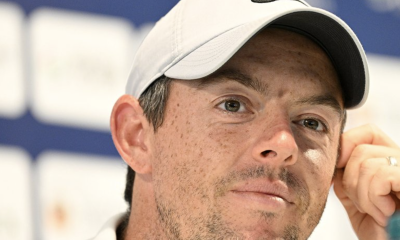
Bryson DeChambeau yells at grown man to return golf ball to kid at PGA Championship

Scottie Scheffler arrested, charged, and released after traffic incident at Valhalla

Rory McIlroy’s winning WITB: 2024 Wells Fargo Championship
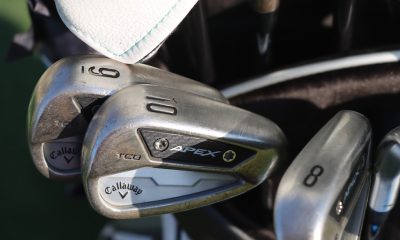
Xander Schauffele’s winning WITB: 2024 PGA Championship
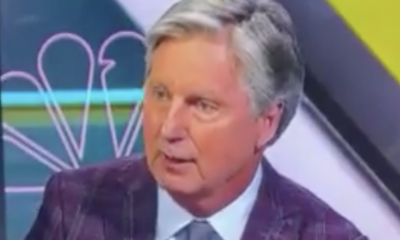
Brandel Chamblee has a surprising new take on the PGA Tour-LIV stand-off
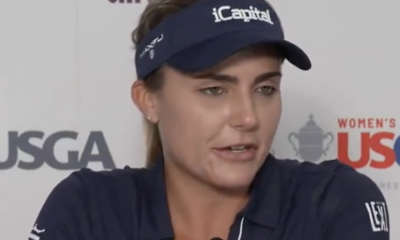
Lexi Thompson announces retirement from golf
Blades vs. Cavity Back vs. Muscle Back Irons (…and which you should play)
Click To Share
You’ve heard the terms blade, muscle back, and cavity back irons for years…but you’re still confused about what they actually mean.
I’ll break it all down for you and explain why the choice should actually be really simple for you.
What Is A Blade Golf Club?
A blade golf club is a smaller traditional-looking iron that typically has a smaller and thinner head. The smaller size means the sweet spot of the club is smaller and off-center strikes will lose more distance compared to other larger clubs.
Blades are very difficult to strike well and require a high degree of consistency to play well with.
The small size also raises the center of gravity more towards the center of the club. This makes it harder to hit the ball high. A less skilled golfer may have difficulty getting the ball high enough for a decent golf shot.
What Is A Cavity Back Iron?
A cavity back iron is a more modern design where the clubhead carries most of the weight around the perimeter and the middle is essentially hollow, forming the cavity from which it gets its name.
Cavity back irons have a larger sweet spot as a result of the design as well as a center of gravity that is lower. The lower center of gravity helps to launch the ball higher in the air even with a less than idea strike.
The majority of golf irons on the market today are cavity back irons. In fact, all of the clubs on our list of the best irons for mid-handicappers are cavity backs.

What Is A Muscle Back Iron?
A muscle back iron has the visual design of a blade but the mass of the club is distributed lower to give some of the benefits of a cavity back iron. It combines the look of a blade with some of the forgiveness of a cavity back.
As far as forgiveness, the muscle back iron falls somewhere between the blade and cavity back. They generally have more mass of the club shifted to the bottom which helps lower the center of gravity and help the ball get into the air easier. However, they lack the cavity and perimeter weighting of a cavity back that gives more forgiveness on off-center hits.
This makes the muscle back iron best utilized by more skilled players and as driving irons or long irons.
Difference Between Cavity Backs and Blades
The primary difference between cavity backs and blades is that in a cavity back, most of the mass of the club is positioned around the perimeter to offer more forgiveness while blades have less mass overall that is more evenly positioned.
These design differences mean that blades will be far less forgiving than cavity back irons. An off-center hit on a cavity back will lose less distance than an off-center hit on a blade because of the added mass around the perimeter.
The design of blades does often afford the golfer more ability to spin the ball left and right. Highly skilled golfers use this to curve the ball on purpose for strategic reasons on the course.
This can be a double-edged sword as added sidespin can be detrimental as well. Additionally, there are plenty of cavity backs on the market that will let you spin the ball as much as you want.
Are Muscle Backs The Same As Blades?
Muscle backs are not the same as blade irons although they may appear similar. Muscle back irons often have more mass in the clubhead than blades and position that mass lower on the back of the club and in the sole of the club.
However, they are much closer to blades than they are to cavity backs. Muscle back irons are essentially blades with a little more mass low behind the sweet spot to add some height to the ball flight.

Cavity Back Advantages
Cavity back irons have several advantages over other types.
The added mass in the clubhead and perimeter weighting means that the sweet spot is considerably larger and you’ll get increased forgiveness on mis-hit shots. That means that even when you don’t hit the ball on the sweet spot, you’ll see minimal distance loss.
The perimeter weighting of cavity backs also helps to hit the ball straighter. Having more mass behind the ball when you miss the center of the face reduces the gear effect of missing the center of the clubface. This means less side spin from off-center hits.
Cavity back clubs also help you to hit the ball higher, even if you have a slower swing speed. By making the sole of the club larger, it lowers the center of gravity which means more of the mass of the club gets under the ball at impact, resulting in a higher launch angle. Many modern game improvement irons also reduce the loft of their clubs to ensure that the launch angle doesn’t get too high.
This combination of more mass, lower center of gravity, and stronger lofts often result in more distance without increasing your swing speed.
The larger sole of a cavity back also helps prevent the club from digging into the ground in the event that you hit the ball a little fat.
You can find cavity backs that take advantage of all of these design features to some degree. So regardless of your skill level or preference of iron sizes, you should be able to find a cavity back that fits your game.
Blade Advantages
There aren’t many advantages to using blades. Conventional knowledge says that blades make it easier to impart sidespin on the ball on purpose or control the height of your shot. But there are plenty of cavity back irons that allow you to do that as well, without the lost forgiveness.
Muscle Back Advantages
Muscle back irons are a small step up from blades in terms of forgiveness. You will still get the classic blade look and feel with a thin top line to look at when you address the ball.
However, they will give you slightly more forgiveness on off-center strikes, especially hits low on the face. A muscle back will also have a lower center of gravity which will give you a slightly higher ball flight trajectory. This is especially helpful with the long irons.
Are Blades or Cavity Backs Better?
If you’re reading this, you should not be playing blades. In fact, most PGA Tour players use some form of cavity back iron.
Every iron on our list of the best irons for high-handicap golfers is a cavity back.
Who Should Use Blade Irons?
Frankly, no one really needs to use blade irons. They are very difficult to hit consistently and have little forgiveness for off-center strikes. Even most PGA pros use some form of cavity back irons.
Who Should Use Cavity Back Irons?
Every golfer except the best in the world should use cavity back irons. There’s really no compelling reason for the average, or even above average golfer to use any type of irons other than cavity back irons.
They afford more forgiveness on off-center hits, typically have more mass to add distance, and give up almost nothing in terms of workability. Today, you can find cavity backs of all shapes and sizes to fit your skill level so even if you absolutely hate playing those massive super game improvement “shovels,” you can still enjoy the benefits of a sleek player’s iron cavity back.
Who Should Use Muscle Back Irons?
Muscle back irons are best used by highly skilled golfers. If you want a classic blade look and feel then you should at least go with a muscle back iron rather than a pure blade. The added weight at the sole of the club will give you a little more forgiveness without sacrificing the look and feel of a blade.

Should Beginner Golfers Use Blades?
Beginner golfers should not use blades. They are extremely difficult to hit will and can cause a lot of frustration on the part of beginner golfers. Using difficult-to-hit blades as a beginner can also negatively affect how you learn the game and can even cause enough frustration to make you want to give it up completely.
Golf is difficult enough for beginners to learn. Don’t try to start with blades and make the game less enjoyable.
Do PGA Tour Pros Use Blades or Cavity Backs?
More PGA Tour Pros use cavity back irons than blades. Contrary to popular belief, cavity back irons are quite popular on the PGA Tour. Tour pros mostly use smaller cavity backs rather than the larger game improvement type, but they are still cavity backs.
Should I Hit Blades Or Cavity Backs?
If you have to ask whether you need blades or cavity backs then you should be playing cavity back irons. Even the best players in the world use cavity back irons more than blades, so the average golfer would see no benefit to playing blades.
Do Blades Hit The Ball Further?
Blade irons do not hit the ball farther, even if you strike the ball on the center of the clubface.
Are Muscle Backs Forgiving?
Muscle back irons are only slightly more forgiving than pure blades. They have a relatively small sweet spot and strikes that miss the sweet spot will lose a considerable amount of distance.
Are Blades Really Harder To Hit?
Blades are quite a bit harder to hit than other types of irons. The combination of a smaller sweet spot, higher center of gravity, and less mass overall make it so that you need to hit almost perfectly on the sweet spot of the club with a good angle of descent in order to get a decent result.
Any strike outside that sweet spot or a swing that gets a little “scoopy” will result in a significant loss of distance. Do yourself a favor and only use blades for fun or when practicing to help develop your skills.
home gear instruction
© 2021 under par goals
Privacy Policy
3 Million Annual Readers >
2,300+ Products Tested >
300+ Reviews Completed >
Best Cavity Back Irons 2024 (Our Top Picks Reviewed)
Golfers seeking to enhance their golf game often turn to cavity back irons, also known as cavity backs, due to their superior forgiveness and larger sweet spot for off-center hits.
These golf clubs, designed to improve the game, are suitable for all skill levels, from novices to mid-handicap players and even professionals who favor a more forgiving alternative to traditional blade irons.
The deep cavity design of these irons, sometimes called a forged cavity, contributes to their performance and popularity among golfers, making them a great addition alongside a pitching wedge in their golf bag.
Ready to discover the best cavity back irons of 2024? Let’s dive right in!

- Featured Recommendations

Last updated on 2024-06-13. The links are affiliate links. Product images are served from Amazon Product Advertising API.
Table of Contents
Mizuno JPX 923 Forged Irons
Taylormade stealth irons, callaway big bertha 2023 irons, mizuno jpx 923 hot metal irons, ping g430 irons, wilson dynapower irons, mizuno jpx 923 hot metal pro irons, titleist 620 cb irons, callaway apex dcb irons, taylormade sim2 max irons, callaway mavrik irons, buying guide: how to choose the best cavity back irons, what are cavity-back irons, what’s the difference between cast and forged cavity back irons, do any pros play cavity backs, what is the main advantage of cavity back irons, best cavity back irons 2024.
Best Overall Feel

Specifications
- Loft: 21°-49°
- Lie Angle: 60°-63°
- Shaft Length: 35.25”-38.5”
- Swing Weight: D2, D3, D4
- Exceptional feel and performance
- Well-rounded for mid-handicap players
- None right now
I recently had the opportunity to test out the Mizuno JPX 923 Forged Irons, and I must say, they lived up to the hype.
It has an exceptional feel and performance that is truly impressive. It’s a perfect choice for mid-handicap players seeking a traditional look without sacrificing playability.
Its COR-TECH face and compact clubhead design offer a fantastic balance of forgiveness and control. Every shot I made feels crisp and satisfying.
The Mizuno JPX 923 Forged Irons truly stands out in terms of performance. The feel at impact is incredibly solid, and the ball flight is high and penetrating.
Off-center hits still produce adequate distance and accuracy, making these irons an excellent choice for those looking to improve their consistency on the course.
Overall, I highly recommend the Mizuno JPX 923 Forged Irons to any golfer seeking the best overall feel in their iron set. However, the price tag may be a bit steep for some golfers.
Best Cavity Back Irons for Consistency

- Loft: 18.5°-59°
- Lie Angle: 61.5°-64.5°
- Shaft Length: 35”-39.125”
- Swing Weight: D0, D1
- Powerful and forgiving
- Excellent distance and consistency
- Not ideal for players seeking maximum workability
When I first tried the TaylorMade Stealth Irons, I was blown away by their power and forgiveness. These irons are perfect for golfers looking for distance and consistency in their shots.
The SpeedFoam technology and Progressive Inverted Cone Technology deliver impressive ball speed and accuracy, even on off-center hits.
On the course, the TaylorMade Stealth Irons performed admirably. It gave me a high launch angle and towering shots that stop quickly on the greens. It also has a significant increase in distance compared to the previous iron set.
These game improvement irons , including long irons, are an excellent option for players looking to add some extra yards to their game.
The only downside is that they may not be the best choice for golfers seeking maximum workability and shot-shaping capabilities.
Read my full TaylorMade Stealth Irons Review
Most Forgiving Cavity Back Irons

- Loft: 18°-56°
- Lie Angle: 60.5°-64°
- Shaft Length: 35”-38.75”
- Improved performance compared to the 2021 model
- Strong contender in the cavity back iron market
- A bit heavy
The latest addition to the Big Bertha lineup, the Callaway Big Bertha 2023 Irons, offers improved performance compared to the 2021 model, making them a strong contender in the cavity back iron market.
Featuring a Forged 455 face and all-new Speed Frame technology, these irons promise to deliver enhanced distance, forgiveness, and control on the golf course.
I had the opportunity to test the Callaway Big Bertha 2023 Irons and found that they lived up to their reputation. The improved performance was noticeable, with increased distance and forgiveness compared to their predecessors.
While the price tag may be a bit steep for some golfers, the overall performance and advancements in technology make these irons a worthy investment for those looking to upgrade their iron set.
Best Cavity Back Iron for High Launch

- Loft: 19°-60°
- High launch with optimal spin
- Increased forgiveness
- Improved swing speed
- Not as workable as forged irons
The Mizuno JPX 923 Hot Metal Irons caught my eye with their promise of a high launch, optimal spin, and increased forgiveness. I was eager to see how these irons would perform on the course, and they did not disappoint.
The COR-TECH face and low, deep center of gravity work together to produce a high-launching ball flight with just the right amount of spin for maximum carry and stopping power.
I was truly impressed with the performance of the Mizuno JPX 923 Hot Metal Irons. They delivered their promise of a high launch, and the forgiveness was a welcome feature for those occasional off-center hits.
While they may not offer the same level of workability as some forged irons, their overall performance and ease of use make them an excellent choice for golfers seeking improved performance in their iron game.
Best Cavity Back Iron for Distance
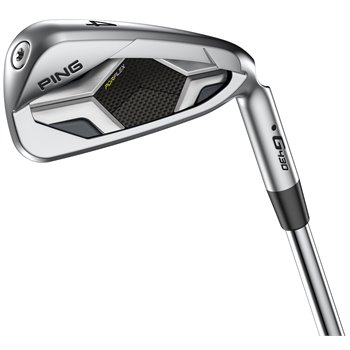
Check Price on PGA Tour Superstore Check Price on GlobalGolf
- Loft: 19°-41°
- Lie Angle: 60.5°-64.1°
- Shaft Length: 35”-38 7/8”
- Swing Weight: D0, D0.5, D2
- Blend of distance, forgiveness, and control
- Suitable for a wide range of skill levels
- Slightly behind in feel and looks compared to some competitors
When finding a solid set of cavity backs, the Ping G430 Irons should definitely be on your radar. These irons offer a blend of distance, forgiveness, and control, making them suitable for various skill levels.
I was eager to see how they would perform on the course, and they didn’t disappoint. The Ping G430 Irons provided a consistent and powerful performance throughout my round. The optimized launch, spin, and forgiveness allowed me to confidently hit various shots.
While they may fall slightly behind in terms of feel and looks compared to some competitors, their overall performance makes them a strong option for golfers seeking a well-rounded set of cavity back irons.
Check my honest Ping G430 Irons Review
Best Budget Cavity Back Irons

- Loft: 18°-53°
- Lie Angle: 60°-64°
- Shaft Length: 35.5”-39”
- Swing Weight: D2
- Impressive distance and forgiveness
- Excellent value for money
- May not offer the same level of control as more expensive options
The Wilson Dynapower Irons are a fantastic option for mid to high handicap players looking for impressive distance and forgiveness without breaking the bank.
These irons feature a progressive design and a wide sole for improved turf interaction, making them an excellent value option in the cavity back iron market.
During my round with the Wilson Dynapower Irons, I was pleasantly surprised by their performance. They offered impressive distance and forgiveness, allowing me to hit longer shots with greater consistency.
While they may not offer the same level of control as some more expensive options, their performance and value for money make them a great choice for golfers looking to improve their game without overspending.
Check my full Wilson Dynapower Irons Review
Best for Skilled Players Seeking Forgiveness

- Loft: 19°-42.5°
- Shaft Length: 35.5”-38.5”
- Maximum ball speed and distance
- Forgiving for off-center hits
- Consistency may not be as strong as other options
The Mizuno JPX 923 Hot Metal Pro Irons offer a unique combination of distance, accuracy, and forgiveness for skilled players looking for a well-rounded option. I was excited to take these irons out on the course and see how they would perform.
The COR-TECH face and advanced design features like the V-Chassis and Deep CG design promise to provide maximum ball speed and distance while still offering forgiveness on off-center hits.
During my round with the Mizuno JPX 923 Hot Metal Pro Irons, I found that they lived up to their promise. The irons offered impressive distance and accuracy, and I was pleasantly surprised by the forgiveness they provided on those less-than-perfect swings.
While consistency may not be their strongest suit compared to other options, the overall performance of these irons makes them a strong contender for skilled players seeking forgiveness in their iron set.
Best Cavity Backs for Shot Shaping
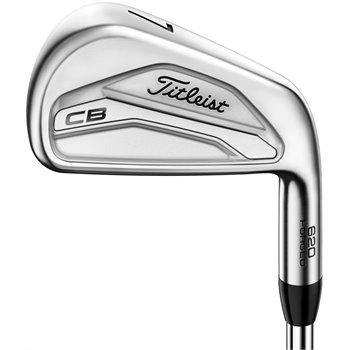
- Loft: 21°-47°
- Excellent feel and feedback
- Allows for precise shot shaping
- Not ideal for high handicap players
As a skilled ball striker, I was excited to put the Titleist 620 CB Irons to the test. These irons are designed for players like me who require excellent feel and feedback while allowing for precise shot shaping.
The compact cavity back design and Max Impact technology provide a level of control and playability that is truly remarkable.
During my round with the Titleist 620 CB Irons, I could execute various shots with ease. The irons provided a buttery soft feel at impact and delivered consistent results, even on slight mishits.
However, I wouldn’t recommend these irons for high handicap players, as they may find them a bit less forgiving than other cavity back options. For skilled ball strikers, though, the Titleist 620 CB Irons are a fantastic choice.

- Loft: 20°-43°
- Shaft Length: 35.75”-38.75”
- Swing Weight: D0
- Wide sole offers outstanding turf interaction
- Oversized head shape provides forgiveness
- Great for high handicap golfers
- Limited workability, delivers straight shot shape
Great for mid and high handicappers, the Apex DCB offers a nice shape with balanced perimeter weighting and smooth turf interaction. The Callaway irons deliver high launch for your game, helping you from the fairway and from the tee box.
I love how easily the ball launches off the face of the Apex DCB’s and the maximum forgiveness provided no matter where the ball strikes the face.
An easy choice for the best cavity back irons, the Apex DCB features a wide sole to improve your turf interaction to help deliver clean, consistent contact throughout your round.
Read my honest Callaway Apex DCB Irons Review

- Loft: 19°-43.5°
- Shaft Length: 35.75”-39.125”
- Cap-back design delivers power to the ball
- Wider sole improves turf interaction
- High-grade forgiveness redirects off-center strikes
- Doesn’t offer workability from side to side
The TaylorMade SIM2 MAX Irons offer exceptionally long distance, ideal for mid handicappers hoping to increase their swing speed .
With several of the company’s popular features, such as the Thru-Slot Speed Pocket and Cap-Back Design, the SIM2 MAX irons provide terrific consistency at a low price for a first-rate set.
The set also boosts launch for far-reaching carry that translates into extra yards. Each iron boasts a wide sweet spot, encouraging forgiveness that keeps off-center strikes on target without losing speed.
A wonderfully capable set for mid handicappers, the SIM2 MAX collection provides a solid base for improving your game from the fairway.
Read my full TaylorMade Sim2 Max Irons Review

- Loft: 18°-41°
- Shaft Length: 35.75”-38.875”
- Weight: D1/D3
- Outstanding impact feel and responsiveness
- Clean turf interaction with powerful energy transfer
- Optimal launch for maximum distance
- Tighter feel than most cavity-back irons
The Callaway Mavrik Irons are a true winner with exceptional distance and incredible accuracy. The irons come in roughly a dozen different combinations, great for any golfer who likes to mix and match the golf clubs in their bag.
The Mavrik irons are among the best cavity back options on this list. Shaped like forged irons but with the help provided by the shape of cavity back irons, the Mavrik set is incredibly versatile.
Read my honest Callaway Mavrik Irons Review
The design of top cavity back irons must be inviting to the golfer. No player wants an ugly set of irons, and while that might seem shallow, having confidence in the irons is as important as the club’s overall performance.
When evaluating an iron’s design, golfers need to look at all areas of the club’s head.
Starting with the sole of the club, a golfer needs to take notice if the head offer a wide sole that interacts well with the turf to provide clean, crisp contact.
Another aspect of the iron that golfers need to note is the shape of the blade. Is it rounded or angular? A rounded face helps with forgiveness on shots that strike the toe. An iron that offers a wide hitting area with maximum forgiveness is the best of both worlds.
A golfer should know why they need the right flex with their graphite or steel shaft in their iron before making the final decision.
The flex of the shaft on a cavity back iron corresponds with the swing speed of a golfer. Matching the flex of the iron with the player’s swing speed is an absolute must for the golfer to achieve maximum production.
There are three common types of flex for golf clubs; senior, regular, and stiff . These categories typically fit with a swing speed. For example, a stiff flex is needed for golfers who swing their driver over 95 mph.
Golfers can greatly affect their results by choosing the wrong flex or not understanding how a type of shaft can affect their shotmaking.
When evaluating the iron’s materials, golfers need to look at all areas of the club’s head to see how designers constructed the head, shaft, and grip.
Most heads are a combination of carbon steel, composite materials, and weighting that anchors the iron and deepens the center of gravity.
Since the head is the most important element of a cavity back iron, players should also look at how the carbon steel sole, leading edge, and top line profile the face’s overall look.
The best cavity back irons offer first-rate performance alongside exceptional design and construction, but that all falls apart if the iron’s materials are subpar.
Low price irons will use lower-quality materials, which could affect performance, while higher-end irons utilize premium materials for a lighter yet stronger experience.
Golfers can either choose a graphite shaft or stainless steel shaft for their cavity back iron. Both shafts offer benefits, although players typically make a fatal mistake when choosing between the two choices.
Graphite shafts are lighter, making them the perfect choice for senior golfers that need more swing speed. Some experienced players don’t like the flexible nature of a graphite shaft, instead preferring the sturdiness of a stainless steel shaft. But those weekend warriors might not need the swing speed benefit that graphite provides players with slower swings.
Steel shafts offer a heavier feel, but that is also a comfort to players who want less flex during their swings with their irons.
The price of a quality set of cavity back irons begins at around $500 and tops out at $1500 for luxury models.
Most golf equipment manufacturers create iron sets that offer premium performance with value to their wallet.
Value sets may skimp in a few areas concerning design, these lower-end club sets offer a lower price coupled with heel and toe balance, minimal offset, and lower center of gravity while elevating swing speeds.
Features that golfers can expect to find in top cavity back irons are a wide, inviting hitting area, innovative technology that boosts distance and provides a higher launch that offers extended carry.
While price is always a consideration for players, they must weigh the benefits of the new set against its cost before making their final decision.
Frequently Asked Questions

Cavity-back irons have a distinct shape and appearance in contrast to forged irons, also commonly referred to as blade irons .
When looking at the iron head, the back of the head looks like the material has been scooped out, creating a “cavity” behind the face. The reasoning for creating an iron with this style benefits the beginning golfer as the iron becomes lighter through the loss of material.
Another reason that the cavity-back works well for inexperienced golfers is that designers take the outer rim of the iron and balance it, helping keep the face square through the impact zone.
The cavity-back design also allows designers to create a large, wide sole that boosts launch. By adding additional material along the sole of the club, golfers get a deeper center of gravity to smoothly lift the ball at impact.
Not all cavity-back irons are built the same and some of these irons from lesser manufacturers can be quite heavier than other brands. Golfers should understand how weight affects swing speed which in turn manipulates the distance of shots.
That said, if you are a high handicapper or beginning golfer, the best choice for starting or improving the quality of your golf shots from the fairway and intermediate rough is with cavity-back irons.
Cast cavity back irons are typically found in game improvement irons that most amateurs golfers play. These irons offer better balance, perimeter weighting, and forgiveness to give inexperienced players better consistency with each shot.
The purpose of cast cavity back irons is to help the golfer get the golf ball into the air with ease for extended carry and maximum distance.
Forged irons are crafted from one piece of metal and made especially for advanced golfers who want clubs that offer premium workability. They are designed to offer a compact hitting area that provides control for low handicappers who can hit shots with shapes and differing heights.
Golf irons can last for several years with routine maintenance. Periodic cleaning of the face and grooves can provide optimum spin and clean contact.
The number one area that players can improve on a set of irons is by replacing the grips on the clubs every 40 rounds or two years. Grips can harden and become slick, causing the golfer to lose their ability to hold the club with confidence.
Golf irons, made from carbon steel, can become brittle and rusted if the golfer soaks the head and hosel in water for hours at a time. The glue that binds the shaft and hosel can weaken, causing the iron to fall apart.
Yes, 44% of the top 50 tour players in strokes gained play cavity back irons, showing that pros indeed play them. Cavity backs are a popular choice among professional golfers .
Cavity back irons offer improved forgiveness and a larger sweet spot, making them easier to hit and more consistent for players of all levels.
Recommended: Blades vs Cavity Back Irons: What’s the Difference?


Should I Play Blades or Cavity Back Irons? Use Your Head
Written by Graeme Hay | Last Updated: 21/05/2024
This post contains affiliate links from which Golfing Focus earns a commission (at no cost to you).

I still remember when I got my first set of ‘blades’. I was mesmerized by those beautiful shiny flat back irons that came out of the box.
In my mind I had finally made it into the ranks of the ‘good golfers’!
Because if you didn’t have a set of blades and were still messing around with cavity back irons you couldn’t really hold your head up in the clubhouse and talk as a peer with the better players.
But is that really true?
Is it just a simple case of saying if you are a good golfer you should be playing blades but if you haven’t yet made it to a single figure handicap you should be sticking with cavity back irons?
Virtually all amateur golfers should use cavity back irons instead of blades. Golf technology advances have led to the clear line between the two club types becoming more blurred but cavity back irons offer much needed additional distance and forgiveness for the average golfer compared to blades.
There are of course pros and cons to both cavity back irons and blades however which every player should be aware of before making their final decision.
In addition, the continual introduction of different club types such as ‘muscle backs’ and ‘hollow heads’ from the main club manufacturers is meaning that the amount of options available to the average golfer is continuing to get greater and greater.
[If you are interested in getting or switching to cavity back irons to take advantage of their benefits check out the best ones according to Golf Digest and Today’s Golfer on Amazon.
- Callaway Mavrik – Game Improvement Irons
- TaylorMade SIM MAX – Game Improvement Irons
- Cleveland Launcher Turbo – Super Game Improvement Irons (Beginners)
- Wilson Launch Pad – Super Game Improvement Irons (Beginners) ]
The Pros and Cons of Blades
Until relatively recently in golf’s long history all golfers used what are called ‘blade’ irons.
Once golf clubs evolved from the old hickory wooden shafts, and golf moved into the modern era, the first blades which came out on the market were made of very thin metal and required you to hit the ball squarely in the centre of the clubface to hit a decent shot.
Some readers will I am sure never forget the ‘vibrating shock’ you got back in the day from a blade iron when you didn’t strike the ball quite right, particularly on a cold day.
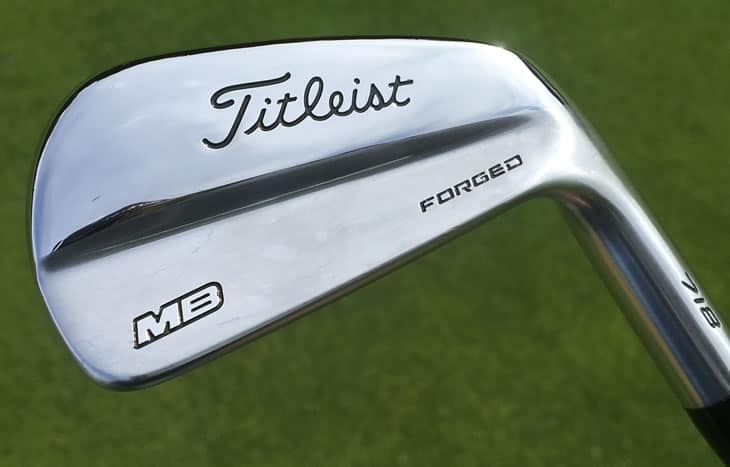
Thankfully things have evolved from those days and golf club manufacturers have worked hard to develop the head of bladed irons to make them more forgiving and easier to hit.
By putting more metal low and behind the hitting zone golf club designers came up with a design of blade that has picked up the nickname of ‘muscle back’ irons.
So today when you hear people talk about ‘blades’ they are more than likely talking about ‘muscle back’ irons which are a long way from the thin pieces of metal that made up the original ‘blades’.
That’s not to say there are still not some very traditional blades on the market today – Taylor Made’s P730s being an example – it’s just that they are not used by many players in comparison to other models simply because they have such a small amount of forgiveness.
Whether we are thinking of traditional blades or more modern ‘muscle back’ irons however blades do offer the following advantages:
- Increased feedback – Blades offer golfers more feedback so that they are better able to tell how well they are ‘striking’ the ball.
- Shot shaping – Blades allow golfers with high enough club head speeds to generate more spin off the clubface. And more spin allows you to curve your shots more easily and stop them more quickly on the green.
- Lower launch – Hitting a golf ball with blades typically launches the ball at a lower angle and consequently golfers, particularly those who frequently play in the wind, can benefit from more predictable and accurate shots. Some players just also prefer hitting the ball lower.
- Better looking – Call me biased but it’s just a fact. A bag full of very shiny chrome finished blades looks better, especially when they sparkle in the sun!
However nothing in life is perfect and for every pro, in anything, there is always a con and blades are no different. So here are the cons when it comes to using blades.
- Less forgiving – Despite the progress which has come with the ‘muscle back’ bladed irons blades are not as easy to hit as cavity back clubs. With less weight behind the clubface than cavity backs, and a centre of gravity closer to the club face, there is simply less room for error.
- Less distance – Due to the lower launch angle delivered by the slower club head speeds of the vast majority of golfers blades do not go as far as cavity back clubs. Golfers typically get distance from hitting their irons higher, not lower.
- Lower launch – Although potentially great in the wind golfers typically will find the lower launch angle generated by blades makes it harder for them to stop the ball on the green.
- Unwanted shot shaping – Due to a combination of mishits and other swing issues blades again give with one hand and take away with the other when it comes to shaping shots. Because if you hit plenty of slices or hooks the higher spin rate they generate will make those unwanted shots even more curved!
- More expensive – Blades are typically more expensive than cavity backs because they are ‘forged’. Forging involves taking a soft piece of steel and beating it into shape and because this process is more labour intensive ‘forged clubs’ will always be more expensive than ‘cast’ clubs which involves pouring metal into a mould to produce a golf head club.
Because of all these pros and cons blades therefore tend to work better for lower handicapped golfers who typically are much better and more consistent strikers of the golf ball.
Many golfers also just think they look and feel better to play with however any golfer who today picks between blades and cavity back irons based solely on their looks needs their head examined.
Because as with blades there has been a huge amount of development in cavity back irons over the years which has only served to add even more shades of grey to the debate over which irons should choose.
The Pros and Cons of Cavity Backs
The debate about whether a golfer should be using blades or cavity backs started when Ping invented the first Ping ‘Eye’ cavity iron in the 1960s.
Realising the difficulties most golfers were having hitting the original thin blades (and wanting to make the manufacturing process cheaper at the same time) Ping made the ‘Eye’ cavity irons using a casting process instead of the traditional and more expensive ‘forging’ process which required beating the metal into shape by hand.
This casting system involved pouring molten metal into a mould and as a result Ping discovered a way of not only making clubs more affordable but also making it easier for players to hit and control their iron shots.
The ‘cavity back’ golf club was born and by shifting the weight on the club head to the base of the club and edges away from the club face, combined with a wider club to give it more bounce, these more forgiving clubs quickly became popular with recreational golfers.

Tests of Callaway’s Apex MB blades vs. Big Bertha OS cavity backs found the blades giving up 15 yards worth of carry distance with a 7-iron.
Golfers no longer required the perfect strike to hit an acceptable shot and poor mishit shots stopped going as far offline as they did with the old blades.
At the same time cavity backs made it easier for the average player to get the ball airborne and for longer which then led to them hitting the ball further as well as straighter.
It was a ‘win win’ for new and average golfers in particular and cavity back clubs therefore also took on the nickname of ‘game improvement’ clubs.
And as with blades the golf club manufacturers have continued to evolve the design of cavity backs and have worked hard to improve the elements players lost when giving up their blades such as shot-making capabilities and feedback on the strike.
The gap has never quite been closed on these elements entirely however which is why you will still find some of the very best golfers in the world, including Tiger Woods, Dustin Johnson and Rory McIlroy continuing to use traditional blades.
Therefore there are clearly pros and cons to cavity backs also compared to blades and the con of one is almost always the advantage of the other.
So to help pull this all together we have summarised below the main pros and corresponding cons of cavity back / game improvement vs. blades / ‘muscle back’ irons:

Saying all that however I think the decision is pretty clear when it comes to beginner and high handicap golfers especially as to whether they should use cavity back irons or blades.
As a whole beginner and high handicap golfers should not use blades and always choose cavity backs. Blades are simply too difficult for such golfers to hit and will affect their enjoyment of the game. Cavity backs are far easier to play with and go further and should be used by all beginners and high handicappers.
Beware of a Mix Up and Watch Out for the Hollow Head!
While the differences between blades and cavity back irons were once clear the huge advancement of golf technology over the years has resulted in the clear line between the two becoming much more blurred
Golf club manufacturers today are consistently developing irons that aim to join the benefits of the two types of clubs to such an extent that it can be difficult to tell the difference.
Cavity back clubs are being made that provide increased feedback and manoeuvrability to enable better shaping of shots while forged blades are increasingly made with shallow cavities to help improve accuracy.
These ‘middle of the range’ or ‘in between’ clubs can be a great place to start therefore for players that are considering a move from full-blown cavity backs but are concerned that blade irons will be too hard to hit.
And in recent times the main golf club manufacturers have taken things further by putting their development time into a new type of golf club nicknamed the ‘hollow head’.
The idea behind this club type is simple.
A ‘hollow head’ iron is made in two separate pieces which then allows the club designers to create an ‘internal cavity’ to remove inefficient weight and therefore increase forgiveness without the need to make the club head the size of a large cavity back iron.

Ping i500s are a great example of these hollow head clubs which now sit right between the traditional blade and cavity back irons.
Looking very similar to a blade they are almost as forgiving as a normal cavity back club thanks to their hollow heads crammed full of technology.
As a result they allow golfers to make less of a trade-off when it comes to their choice.
As with everything that sounds great there is always a catch and with the ‘hollow head’ clubs it is simply that because they are produced in two pieces they are more expensive than traditional cavity back irons.
What about the option some of the pros turn to of mixing up your set by using cavity-backed clubs for your long irons where you need a bit more forgiveness and then switching to blades for your shorter shots when you want a bit more feel?
There is no doubt that mixed sets can provide the best of both worlds and it’s certainly an option many of the pros use.
But for the amateur golfer there’s a real cautionary note which needs to be sounded if you ever consider this route.
Because cavity backed and blades aim to achieve different goals it is very possible that identically lofted irons from the two categories will fly different yardages.
Which means that your combined set could give you some problematic ‘gaps’ in the yardages you can cover with your shots.
That’s why the pros will often get their club making specialists to bend some of their irons to different lofts to close these gaps.
But bending clubs can affect a club’s performance in other ways such as affecting it’s bounce.
That’s fine if you are a seasoned professional golfer in near total control of your golf swing but can be a huge problem for your average amateur player who has no idea what part of a club’s performance has actually been affected by bending it.
So if you plan on going down this route, and I am highly skeptical why any but the best amateur golfers should be considering this option, make sure you get yourself along to a ‘custom fitting’ expert to ensure your ‘combination’ set has no loft or performance gaps.
Do the Pros Use Blades or Cavity Backs?
So what are the pros up to when it comes to the types of irons they are using?
Given they are playing for a living to put food on the table for their families and therefore are always doing a huge amount of testing on their clubs it clearly makes sense to consider what irons they are using.
But rather than taking anyone’s word for what types of irons the pros are using we analysed the iron set ups of the top 100 players on the PGA Tour ourselves to see whether any tour pros use more forgiving cavity back irons or whether they all use blades because they are so good.
And the results are very clear and often not what many people expect given these are the best players in the world.
65 of the top 100 PGA Tour pros currently use only cavity back irons and that number rises to 88 when you count players who use at least one cavity back iron as part of their set. By comparison only 12 golfers in this elite group only use blades with 35 in total using one blade iron or more within their iron set up.
Based on these numbers therefore it is clear that the majority of even the world’s top golfers choose the extra forgiveness and distance which is afforded to golfers using cavity back irons.
And even the best ball strikers in the world including Rory McIlroy, who uses some of the most unforgiving blade irons from 4 iron to pitching wedge (a prototype version of Taylor Made P730s), uses the more forgiving cavity back TaylorMade 760 for his 3 iron.
We go into detail about every iron used by the top 100 PGA Tour pros here but in summary it is unlikely you will find a PGA pro’s bag today that does not have at least one or two cavity back or ‘hollow head’ irons in it, particularly when it comes to the longer irons.
[Editor’s note – ‘hollow’ head/body irons have an ‘internal cavity’ to remove inefficient weight and therefore increase forgiveness without the need to make the club head the size of a large cavity back .]

A lot of pros also currently favour going with a mix of iron types in their bag combining some cavity backs and blades but there is a large number (close to two-thirds at the moment in the top 100 on the PGA Tour!) who simply opt for a full-blown cavity back set of irons.
But Tiger Woods still uses blades throughout his iron set I hear some say. Well, the short answer to that is – he is Tiger Woods and arguably the best golfer of all time!
And also don’t forget even he chooses a more forgiving cavity back TaylorMade P770 model when it comes to his 3-iron!
More than ever before the best players in the world are embracing irons packed with forgiveness as modern club design increasingly allows the manufacturers to create clubs for them that are easier to hit without sacrificing ‘feedback’ or resorting to a noticeably larger cavity-backed club head.
The list of pros who stick in the main with blades – Tiger Woods, Scottie Scheffler, Rory McIlroy, Hideki Matsuyama, Adam Scott and Tommy Fleetwood for example – still exists and although it changes from time to time the critical thing to bear in mind is that the clear majority of pros are using cavity back irons.
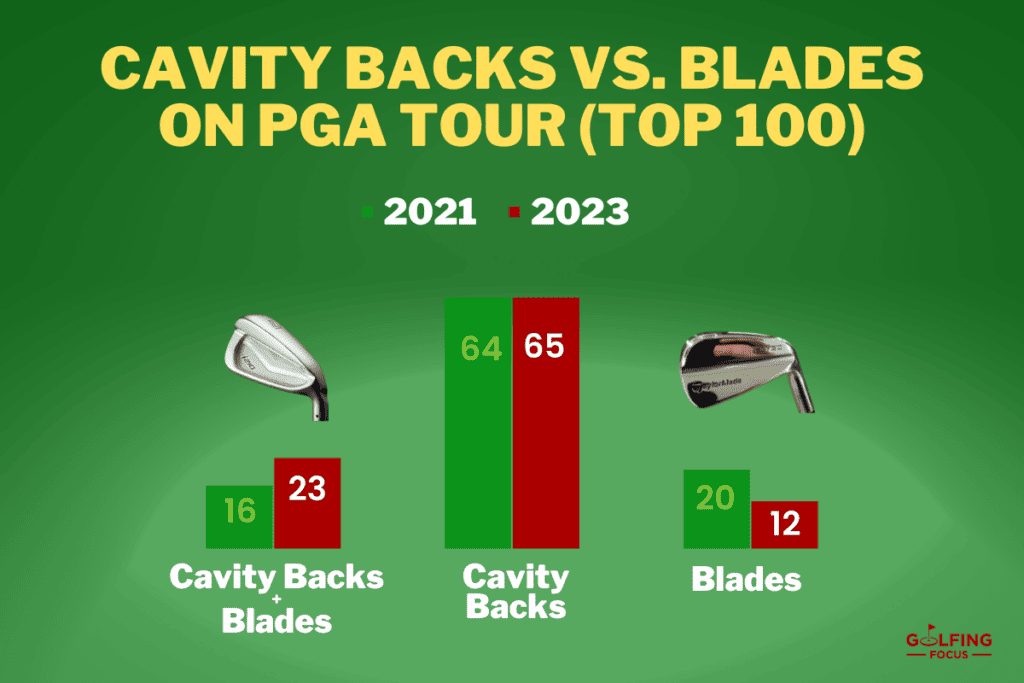
And for those of you who are still not convinced that based on the experience of the pros you should be looking at cavity backs first and last before blades, I’ll leave the last word to four-time PGA Tour Winner Kevin Na.
I can’t hit a blade. It’s too difficult, and I’m a pro golfer. I think a blade goes shorter. Off-center hits aren’t going to perform as well as cavity-backs. I don’t see a reason why you would want to play a blade. I really don’t. I played blades in my early 20s, maybe one year – when I was dumb. But I’m wiser now and play a cavity back.” 4-time PGA Tour winner, Kevin Na
Final Thought
Choosing your set of golf clubs is I know very much a matter of personal preference.
And for the average golfer who is improving fast and finally making that sustained progress they always wanted to, it can feel like getting a set of blades adds that final official stamp which shows all those golfers around you that you are a good player.
Those beautiful shiny and sleek bladed club heads do look beautiful in the bag and can tug at the heartstrings.
But don’t let your heart rule your head and think this is the time to finally transition from cavity back irons to blades.
As a general rule amateur golfers should never make the switch from cavity backs to blades. Blades are less forgiving, travel less far and further offline when not hit properly and are more expensive. As a result 99.9% of amateur golfers are not good enough to hit blade irons consistently well.
Only if you are advised by a reputable club fitter would I even consider picking up a set of blades these days with all the more forgiving options there are on the market today.
So don’t allow a set of blades or muscle-back irons to end up in your bag when they shouldn’t.
Use your head and not your heart and save yourself some heartache on the fairways. And some money also no doubt.
More top articles related to this topic:
- Do Pros Use Game Improvement Irons? They Also Want Forgiveness!
- What Handicap Should Play Blades? Don’t Bother!
- What Irons Do the Pros Use? Top 100 PGA Tour Player Guide
- What Hybrids Should You Carry? It’s All About Ego
- Are Hybrid Irons Easier to Hit? 7 Reasons to Choose the Easy Way
- Are My Golf Clubs Too Old? It’s Performance Not Age That Matters
- Should Beginners & High Handicappers Use a Driver? Yes & Yes
- Are My Golf Clubs Too Heavy? Trust Your Feelings
- What are the Best Wedges for Spin? You Need to Get Into the Grooves
- Should Your Wedges Match Your Irons? Consistency is Key
- What Irons Do LPGA Players Use? Top 50 Pros Analysis
- How Far Should I Hit My Irons? By Handicap, Age & Swingspeed
Leave a Reply Cancel reply
Your email address will not be published. Required fields are marked *
Save my name, email, and website in this browser for the next time I comment.
RECENT ARTICLES

What Golf Balls Do LPGA Players Use? They’re Not Very Lady Like! (2024 update)

Behind Every Stroke: The Most Popular Putter on Champions Tour (2024)

Champions Hybrid Heroes. Most Used Hybrids by Champions Tour Pros (2024)

The Go-To Fairway Woods of Senior Tour Champions (2024)

Flexible Friends: Uncovering the Shafts Champions Tour Players Use (2024)
LEGAL INFORMATION
This site is owned and operated by Golfing Focus Limited, a private limited company whose registered office is in London, UK. Golfing Focus Limited is a participant in the Amazon Services LLC Associates Program, an affiliate advertising program designed to provide a means for sites to earn advertising fees (at no cost to you) by linking to Amazon.com. Golfing Focus Limited also participates in other affiliate programs with the eBay Partner Network, FlexOffers, CJ.com, Svorn and other sites and is compensated for referring traffic and business to these companies (again at no cost to you).
Our Socials

- Remember me Not recommended on shared computers
Forgot your password?
- Tour and Pre-Release Equipment
Percentage of PGA Tour Pros playing Cavity Back?

By 596 June 7, 2012 in Tour and Pre-Release Equipment
- Reply to this topic
- Start new topic
Recommended Posts
I won't mention names but I'm hearing different opinions/statements here.
1. " PGA Tour guys are playing blades, without question"
2. "80% of PGA Tour guys are now using cavity backs"
Those are quite different statements and I heard both of them within the last 48 hours. So which is it? Are they playing blades or cavity backs? I'm talking irons here as a full or near full set. A full set here is like pw-4/5 iron. Wedges don't count. A guy using a cavity back 2 iron and all the rest blades, is playing blades! Oh, and don't mention hybrids either. So don't get too technical on me :wave:
Link to comment
Share on other sites.
- Created 12 yr
- Last Reply 3 yr
Top Posters In This Topic

Popular Days
wlittle1274 2 posts
596 2 posts
bushy007 2 posts
n16golf 1 post
Most of the WITB pics I have seen, the pros using cavity backs might as well be playing blades with the lead tape they have going on. I forget who it was that had AP2s and the cavity looked almost full of lead tape on almost all the clubs. To answer your question, I would bet that most are advertised as playing cavity backs and that most are actually playing them. There are a lot of Razr X, TM tour preferred type clubs that they are playing now, the players' cavity backs.

Based on the WITB pics we see on this site each week, my guess is most play blades with a stray 3 o 4 iron player's cavity thrown in. When I say "most" I don't mean 80%. I'm just saying that my unscientific observation of these photos makes me think more than 50%.
Mizuno MP-650 10.5* Driver, Orochi Red MP-650 3w 15*, hybrid 19*,Orochi Red S MP-54 3-7 Nippon 1150 S MP-5 8-PW Nippon 1150 S MP-R12 52* and 56*, DG Spinner T.P. Mills Softtail
30% of tour players use blades........ Heard that stat during a PGA tourney
Remember there are 240 players that have played in the PGA Tour this year so far and most of the WITB photos are of guys hovering in the top100 or so...names that people will know. I'd expect that the numbers would be surprising either way..
[center][size=3][i][font=comic sans ms,cursive]Taylormade M2 2016 9*[/font][/i][/size][/center] [center][font="comic sans ms, cursive"][size=3][i]Taylormade M2 2016 15*[/i][/size][/font][/center] [center][size=3][i][font=comic sans ms,cursive]Adams DHy Proto 21*[/font][/i][/size][/center] [center][i][font=comic sans ms,cursive]Mizuno MMC FliHi 4i[/font][/i][/center] [center][i][font=comic sans ms,cursive]Mizuno MMC 5-P[/font][/i][/center] [center][font="comic sans ms, cursive"][size=3][i]Callaway MackDaddy 4 Milled 54|58[/i][/size][/font][/center] [center][font=comic sans ms, cursive][size=3][i]Custom Scotty Cameron California Coronado Milled Face[/i][/size][/font][/center] [center][font="comic sans ms, cursive"][size=3][i]Snell MTB/MTB Black[/i][/size][/font][/center]
How about the winners? What are those guys playing?
TSR3 (Dr) (Graphite Design Tour AD IZ-6) TSR2 (3w / 7w) (Graphite Design Tour AD IZ-7)
zU85 (4-6) (UST Recoil) Z-Forged (7-P) (Nippon Modus3)
SM10 50.F / 56.F / 60.S Odyssey OG 2-Ball

Per the top 20 in the world... 1. Luke Donald - Cavity 2. Rory McIlroy - Blade 3. Lee Westwood - Cavity 4. Tiger Woods - Blade 5. Bubba Watson - Cavity 6. Matt Kuchar - Cavity 7. Justin Rose - Blade 8. Hunter Mahan - Cavity 9. Jason Dufner - Cavity 10. Martin Kaymer - Blade 11. Steve Stricker - Cavity 12. Phil Mickelson – Cavity/Blade Mix 13. Webb Simpson - Blade 14. Charl Schwartzel - Cavity 15. Louis Oosthuizen - Cavity 16. Zach Johnson - Cavity 17. Adam Scott - Blade 18. Rickie Fowler -Blade 19. Jason Day -Cavity 20. Dustin Johnson – Blade recently 11 Cavity / 8 Blade / 1 Mix Blade Cavity I did not count Ping s56 or s59 irons as Blade irons as they both have a milled cavity.
From all of the stats I've seen about 2/3 play cavity and perhaps a bit more
So what I'm reading is that either of my original statements are exagerations. The responses so far indicate that just over 50% of the Tour guys (top 20 sample) are playing cavity backs. Not all blades but not as high as 80% cavity either.

[quote name='gioGolf' timestamp='1339080076' post='5046712'] Per the top 20 in the world... 1. Luke Donald - Cavity 2. Rory McIlroy - Blade 3. Lee Westwood - Cavity 4. Tiger Woods - Blade 5. Bubba Watson - Cavity 6. Matt Kuchar - Cavity 7. Justin Rose - Blade 8. Hunter Mahan - Cavity 9. Jason Dufner - Cavity 10. Martin Kaymer - Blade 11. Steve Stricker - Cavity 12. Phil Mickelson – Cavity/Blade Mix 13. Webb Simpson - Blade 14. Charl Schwartzel - Cavity 15. Louis Oosthuizen - Cavity 16. Zach Johnson - Cavity 17. Adam Scott - Blade 18. Rickie Fowler -Blade 19. Jason Day -Cavity 20. Dustin Johnson – Blade recently 11 Cavity / 8 Blade / 1 Mix Blade Cavity I did not count Ping s56 or s59 irons as Blade irons as they both have a milled cavity. [/quote] dustin johnson switched to cavity backs, i think
Titleist TSR3 10* | Fujikura Ventus Black 6S
Titleist TSR2 15* | Fujikura Ventus TR Blue 7S
Callaway UW 19* | Graphite Design Tour AD MJ 8X
Titleist T350 4I | True Temper AMT Red S300
Titleist T200 5-GW | Project X IO 6.0
Cleveland RTX6 Zipcore 54* Mid | Nippon Modus 115 Wedge
Callaway RTX6 Zipcore Raw 60* Low | Nippon Modus 115 Wedge
Scotty Cameron Phantom X 5.5 | BGT Stability Carbon
Srixon Z Star Diamond

Fish-N-Chips
What Cavity's are Schwartzel playing???
Ping G400 Ping Anser 3W Ping Anser 3H Ping i210 4-PW DGTI X100 Ping Glide 50* Ping Glide 3.0 54* Eye2 Ping Glide 2.0 60* E/S Ping Vault Anser 2
wlittle1274
[quote]What Cavity's are Schwartzel playing??? [/quote] Charl plays blades.. Vr Pro I believe.. This is from the BMW Euro PGA [attachment=1200506:charl.jpg]
Ping G430 LST 9* w/ HZRDUS Gen4 Black 60 X TaylorMade 300 Mini Driver 11.5* w/ HZRDUS T1100 65 X
Ping G425 Max 20.5* @ 19* w/ Aldila Rogue White 80 X Mizuno JPX-923 Forged 4, Tour 5-PW w/ DG TI X100
Vokey SM8 50*, 54*, 58* w/ KBS Tour X Directed Force 2.1 Broomstick
Titleist Left Dash Pro V1x
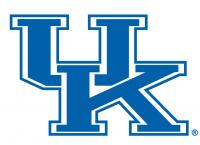
Instant Offense
Pretty sure the AP2 is the number 1 iron in play on the PGA Tour...

[quote name='gioGolf' timestamp='1339080076' post='5046712'] Per the top 20 in the world... 1. Luke Donald - Cavity 2. Rory McIlroy - Blade 3. Lee Westwood - Cavity 4. Tiger Woods - Blade 5. Bubba Watson - Cavity 6. Matt Kuchar - Cavity 7. Justin Rose - Blade 8. Hunter Mahan - Cavity 9. Jason Dufner - Cavity 10. Martin Kaymer - Blade 11. Steve Stricker - Cavity 12. Phil Mickelson – Cavity/Blade Mix 13. Webb Simpson - Blade 14. Charl Schwartzel - Cavity 15. Louis Oosthuizen - Cavity 16. Zach Johnson - Cavity 17. Adam Scott - Blade 18. Rickie Fowler -Blade 19. Jason Day -Cavity 20. Dustin Johnson – Blade recently 11 Cavity / 8 Blade / 1 Mix Blade Cavity I did not count Ping s56 or s59 irons as Blade irons as they both have a milled cavity. [/quote] Bubba plays a blade.
[quote name='Doublebuck' timestamp='1339119569' post='5050224'] [quote name='gioGolf' timestamp='1339080076' post='5046712'] Per the top 20 in the world... 1. Luke Donald - Cavity 2. Rory McIlroy - Blade 3. Lee Westwood - Cavity 4. Tiger Woods - Blade 5. Bubba Watson - Cavity 6. Matt Kuchar - Cavity 7. Justin Rose - Blade 8. Hunter Mahan - Cavity 9. Jason Dufner - Cavity 10. Martin Kaymer - Blade 11. Steve Stricker - Cavity 12. Phil Mickelson – Cavity/Blade Mix 13. Webb Simpson - Blade 14. Charl Schwartzel - Cavity 15. Louis Oosthuizen - Cavity 16. Zach Johnson - Cavity 17. Adam Scott - Blade 18. Rickie Fowler -Blade 19. Jason Day -Cavity 20. Dustin Johnson – Blade recently 11 Cavity / 8 Blade / 1 Mix Blade Cavity I did not count Ping s56 or s59 irons as Blade irons as they both have a milled cavity. [/quote] Bubba plays a blade. [/quote] I agree that the S56 and S59 aren't blades.. They have a milled cavity.. It could be argued that they are 'blades'.. But not a true muscle back blade that we are accustomed to
dustin johnson switched to cavity backs, i think Then two weeks ago he switched back to the TM blades he played all last season
[quote name='Doublebuck' timestamp='1339119569' post='5050224'] [quote name='gioGolf' timestamp='1339080076' post='5046712'] Per the top 20 in the world... 1. Luke Donald - Cavity 2. Rory McIlroy - Blade 3. Lee Westwood - Cavity 4. Tiger Woods - Blade 5. Bubba Watson - Cavity 6. Matt Kuchar - Cavity 7. Justin Rose - Blade 8. Hunter Mahan - Cavity 9. Jason Dufner - Cavity 10. Martin Kaymer - Blade 11. Steve Stricker - Cavity 12. Phil Mickelson – Cavity/Blade Mix 13. Webb Simpson - Blade 14. Charl Schwartzel - Cavity 15. Louis Oosthuizen - Cavity 16. Zach Johnson - Cavity 17. Adam Scott - Blade 18. Rickie Fowler -Blade 19. Jason Day -Cavity 20. Dustin Johnson – Blade recently 11 Cavity / 8 Blade / 1 Mix Blade Cavity I did not count Ping s56 or s59 irons as Blade irons as they both have a milled cavity. [/quote] Bubba plays a blade. [/quote]' s59 is not a blade.
Yeah Charl plays the VR PRO BLADES. Dustin has gone back to the TP MB's.

Does what pro's play affect what you play? Drivers, wedges, putters, and fwy's maybe, but irons should be based on what you're comfortable with right?
Callaway Rogue ST LS *** Fujikura Rombax Type X Callaway Rogue ST LS 3wd w/Diamana D+ Whiteboard 70TX Callaway Rogue ST LS 5wd w/Diamana D+ Whiteboard 80X Callaway TCB 4-GW w/Project X 6.0 Callaway Jaws RAW 56/60 EvnRoll 5.2 Short Slant
I think the OP was curious on the numbers of players not what he should play. Wk
Titleist TSR3 Diamana White Stiff
TM Stealth2 Plus 3Wood Ventis Black Velicore S
Titleist T200U 3 and 4 iron Mitsubishi Tensei Whte 8S
Titleist T100 5-PW AMTWhite S
Vokey SM10 50, 54, 58 AMT White
Scotty Tour Rat
PROV1 Left Dash
Join the conversation
You can post now and register later. If you have an account, sign in now to post with your account.

× Pasted as rich text. Paste as plain text instead
Only 75 emoji are allowed.
× Your link has been automatically embedded. Display as a link instead
× Your previous content has been restored. Clear editor
× You cannot paste images directly. Upload or insert images from URL.
- Insert image from URL
- Submit Reply
Recently Browsing 0 members
- No registered users viewing this page.

Tiger Woods - WITB - 2024 US Open
GolfWRX_Spotted posted a topic in Tour and Pre-Release Equipment , June 10

2024 US Open - Discussion and Links to Photos

Titleist GT drivers - 2024 the Memorial Tournament
GolfWRX_Spotted posted a topic in Tour and Pre-Release Equipment , June 3

- 290 replies

2024 Charles Schwab Challenge - Discussion and Links to Photos
GolfWRX_Spotted posted a topic in Tour and Pre-Release Equipment , May 20

2024 PGA Championship - Discussion and Links to Photos
GolfWRX_Spotted posted a topic in Tour and Pre-Release Equipment , May 13
Popular Now

By bglynn19 Started 4 hours ago

By MofoJones Started 4 hours ago

By LimaSierra Started 6 hours ago

By MattyO1984 Started June 10
By elwhippy Started March 13, 2023
Welcome. Register Here.
Come on in, the water is fine...
Recent B/S/T

Cactus Jack · Started 1 hour ago

Lou Loomis · Started 2 hours ago
xabia · Started 2 hours ago

toastinato · Started 2 hours ago

NJGolfer0624 · Started 3 hours ago

GolfWRX_Spotted · Started June 3
- Existing user? Sign In
The Bag Room
- Tour & Pre-Release Equipment
- WRX Club Techs
- Golf Sims/GPS/RFs/Apps
- Golf Style and Accessories
The Club House
- General Golf Talk
- Classic Golf And Golfers
- Courses, Memberships and Travel
- Groups, Tourneys, and Partners Matching
WRX Academy
- Instruction & Academy
- Rules of Golf and Etiquette
- Swing Videos and Comments
Classifieds & ProShops
- Deal/No Deal
Website Help
- Forum Support
- BST AD Help Forum
My Activity Streams
- BST/Deal Activity
- All Activity
- Unread - No BST/19th
- Subscriptions
Classifieds
- For Sale Forum
- Wanted to Buy
- Mall of Pro Shops
- Where Did My Ad Go?
- Trade In Tool
- Create New...

Follow Playing Through online:
- Follow Playing Through on Twitter
- Follow Playing Through on Instagram
- Follow Playing Through on Facebook
Site search
- Champions Tour
- DP World Tour
- Latest News
Filed under:
- U.S. Open Golf
- Golf Majors
Top 50 players at Pinehurst No. 2, ranked by best chances of winning U.S. Open
The best golfers in the world have arrived at Pinehurst No. 2 for the U.S. Open, so we ranked the top 50 players.
Share this story
- Share this on Facebook
- Share this on Twitter
- Share this on Reddit
- Share All sharing options
Share All sharing options for: Top 50 players at Pinehurst No. 2, ranked by best chances of winning U.S. Open
/cdn.vox-cdn.com/uploads/chorus_image/image/73400370/2156266660.0.jpg)
This year’s U.S. Open includes 156 golfers from around the world, including 16 amateurs and 13 from LIV Golf . Some players earned exemptions based on various criteria, while others played their way into the championship via final qualifying.
Regardless of their path, Pinehurst No. 2 awaits them for golf’s most vigorous test.
The 124th U.S. Open has a loaded field with dozens of top players, all of whom have intriguing storylines. So let’s check out the top 50 players, ranked by who has the best chance of winning the U.S. Open.
This list has been updated since Jon Rahm , originally ranked 10th, withdrew from the championship.
Top 50 Players at U.S. Open, ranked:
50. j.t. poston.
J.T. Poston has had an up-and-down season, mainly due to his inconsistent ball-striking. He posted three top 10s early in the year, including at Riviera. But since then, he has only one top-10 finish: a tie for 5th at the RBC Heritage. Despite that, he arrives at Pinehurst after two solid starts at Colonial and at the Memorial.
49. Will Zalatoris
Two years ago, Will Zalatoris had a chance to force a playoff with Matt Fitzpatrick at Brookline , but he missed a putt on the 72nd hole by a hair. He then sat out most of last year due to a back injury and finally returns to the U.S. Open, hoping to build on his success from 2022. But his shaky short game may prevent him from doing so.
48. Victor Perez
The Frenchman is one of the better iron players on the PGA Tour, as evidenced by his solid ball-striking performance at the Memorial last week. If not for two closing bogies, he would have fared better than a tie for 12th. Perez also tied for 3rd at the RBC Canadian Open the week before.
:no_upscale()/cdn.vox-cdn.com/uploads/chorus_asset/file/25485923/2156383781.jpg)
47. Erik van Rooyen
Erik van Rooyen is 19th on the PGA Tour in overall strokes gained. He is also a solid putter. But the flat stick abandoned him last week at the Memorial, where he tied for 42nd. Still, van Rooyen has made five straight cuts dating back to the beginning of April.
46. Nick Taylor
Nick Taylor’s clutch win in Phoenix led many to think that he would take that next step. But he has only posted one top 10 since then. He missed the cut at both the Masters and the PGA Championship. He also failed to make the weekend in his two previous U.S. Open starts.
45. Ryan Fox
Could another Kiwi win at Pinehurst No. 2? Perhaps. His last start came at the RBC Canadian Open, where he tied for 7th. He also held off some of the biggest stars in Europe at last year’s BMW PGA Championship at Wentworth.
44. Harris English
The former Georgia Bulldog tied for 18th at Valhalla, but he followed that up with a pair of missed cuts at the Memorial and Muirfield Village. Nevertheless, putting is his strong suit, so he may turn in another solid U.S. Open finish. He tied for eighth last year and finished in the top five in both 2020 and 2021.
43. Lucas Glover
It’s hard to believe that Lucas Glover conquered a rain-soaked Bethpage Black 15 years ago. Alas, Glover last played in the U.S. Open in 2020, tying for 17th at Winged Foot. His two wins last year earned him an invite back to Pinehurst No. 2, where he missed the cut in 2014.
42. Mackenzie Hughes
Mackenzie Hughes has an excellent short game, but he has produced inconsistent results. Look no further than the last four weeks: Hughes tied for 6th in Charlotte, missed the cut at the PGA Championship, tied for 7th in Canada, and then missed the cut at the Memorial.
41. Tom Hoge
One of the best ball strikers on the PGA Tour, Tom Hoge arrives at Pinehurst No. 2 looking to make a name for himself. He has two top-10 finishes this year, both of which came in Signature Events.
40. Adam Hadwin
Last week, Adam Hadwin finished in solo 3rd at the Memorial, thus earning an invite to The Open. His best attribute may be his short game, but he did rank second in strokes gained, approaching the green last week at Jack’s Place. At least Hadwin did not get pummelled by a security guard on the Sunday before the U.S. Open—unlike last year.
39. Cameron Young
Cameron Young has defined inconsistency in 2024. He began the season with a strong showing in Dubai and has four more top 10s to his name, including a tie for 9th at Augusta. But his short game and his putting have kept him from contending week in and week out.
38. Robert MacIntyre
Robert MacIntyre has returned to the United States, as he opted to skip the Memorial to celebrate his first PGA Tour victory at home in Scotland. His father will not loop for him this time around, but that should not diminish any of the Scotsman’s confidence.
:no_upscale()/cdn.vox-cdn.com/uploads/chorus_asset/file/25485921/2156971756.jpg)
37. Keegan Bradley
Keegan Bradley arrives in North Carolina fresh off a tie for 43rd at the Memorial. But his poor finish can be attributed to a terrible third and final round, in which he carded rounds of 78 and 80. Before that, Bradley tied for 2nd at Colonial, thus indicating his game is in a decent place.
36. Sungjae Im
Sungjae Im missed the cut at both the Masters and the PGA Championship but has had five solid performances since the beginning of April. Im won the Woori Financial Group Championship Korea before tying for 4th at the Wells Fargo. He has the game to contend if he can roll it like he did at the Memorial last week.
35. Jordan Spieth
It has been all downhill for Jordan Spieth since his solo 3rd finish at The Sentry. He has missed five cuts since The Players while recording only one top 10 in that span. Spieth has not putted well either, and all signs point to him struggling again this week.
34. Denny McCarthy
Denny McCarthy’s game translates perfectly to Pinehurst No. 2. He is not a big hitter by any means, but he might be the best putter out of any player in the field. His best finish at the U.S. Open came two years ago at Brookline, where he tied for 7th.
33. Min Woo Lee
Min Woo Lee is one of the most entertaining players in golf. He is terrific off the tee but struggles at times with his irons and with his short game. Despite that, Lee tied for 5th at last year’s U.S. Open. Perhaps he can ‘cook’ a little more Min Woo magic this time around.
32. Christiaan Bezuidenhout
Fresh off a 4th place finish at the Memorial, Christiaan Bezuidenhout arrives at Pinehurst No. 2 full of confidence. He is also one of the best putters on the PGA Tour and has recorded nine top-25 finishes this season.
31. Alex Noren
Since the Cognizant Classic, Noren has finished in the top 25 in nine events. That includes a tie for 12th at the PGA Championship , which can be attributed to his exquisite ball-striking and terrific short game. The Swede could turn some heads this week.
30. Si Woo Kim
An excellent ball striker with a fantastic short game around the greens, Si Woo Kim has the game to contend at Pinehurst No. 2. But his problem is his putting. He ranks 162nd on tour in strokes gained putting but 4th in strokes gained, tee to green. Go figure.
29. Brian Harman
Since narrowly losing out to Scottie Scheffler at The Players, Brian Harman has not had his best stuff. He missed the cut at Augusta but then tied for 12th at Hilton Head. He has made four straight cuts since, with his best finish coming at Colonial, a tie for 24th.
:no_upscale()/cdn.vox-cdn.com/uploads/chorus_asset/file/25485920/2156983822.jpg)
28. Dean Burmester
Dean Burmester has not played in a U.S. Open since 2019, when he missed the cut at Pebble Beach. But he most recently tied for 12th at Valhalla, showing that he can compete among the very best. The big-hitting South African also won LIV Golf Miami earlier this year.
27. Jason Day
The 2015 PGA Champion has a tremendous short game, and considering that Pinehurst is laid out on sandy soil—not dissimilar to the courses seen in his native Australia—you have to think Day will feel comfortable on No. 2. He tied for 4th here in 2014.
26. Byeong Hun An
It seems like Beyong Hun An is due for a big victory. He has four top 5 finishes, two of which came in Signature Events. He also tied for 16th at Augusta but tied for 43rd at Valhalla. An is a terrific iron player with plenty of length but struggles on the greens.
25. Shane Lowry
Shane Lowry almost made major championship history at Valhalla, coming close to shooting an epic 61. But he recently shot an abhorrent 85 at the Memorial, so who knows how the Irishman will fare at Pinehurst.
24. Tom Kim
Two weeks ago, Tom Kim posted his best finish of the season, a tie for fourth at the RBC Canadian Open thanks to a final round 65. But he could not carry that momentum to the Memorial, where he tied for 43rd. He made the cut at both majors this year but was never a factor in either.
23. Sahith Theegala
Perhaps this is the week for Sahith Theegala, who had a solid showing at Valhalla except for his final round. He most recently tied for 12th at the Memorial, despite a sub-par putting performance.
22. Sam Burns
Sam Burns did not make the cut at the Masters and the PGA Championship, the latter of which saw his putter seal his fate. But he has posted two respectable finishes since then: a tie for 10th in Canada and a tie for 15th at the Memorial.
21. Tony Finau
Tony Finau has not been a factor at either major this year, but he has turned in solid performances elsewhere. At any rate, it all comes down to the putter for Finau, who is one of the world’s best iron players.
:no_upscale()/cdn.vox-cdn.com/uploads/chorus_asset/file/25485919/2156191657.jpg)
20. Sepp Straka
Sepp Straka missed the cut at Valhalla but has posted two top-five finishes since then at Colonial and at Muirfield Village. He is one of the most accurate players from tee to green, which always bodes well in a U.S. Open.
19. Corey Conners
Corey Conners has not missed a cut all season, with his best performance coming in his home country at the RBC Canadian Open. He tied for 6th that week thanks to a solid putting performance. If he can continue to putt well at Pinehurst, watch out. He’s one of the best ball-strikers on tour.
18. Tyrrell Hatton
Tyrrell Hatton turned in a solid performance at Augusta but did not contend at Valhalla, tying for 63rd. He has not been a factor in any LIV Golf event, but everyone knows he has the talent to break through in a major.
17. Wyndham Clark
Outside of his tie for 3rd at Harbour Town, the reigning U.S. Open champion has looked lost since missing the cut at the Masters. Clark arrives in North Carolina fresh off two more missed cuts at Valhalla and Muirfield Village. He also called Pinehurst No. 2’s greens “borderline,” referencing their difficulty bordering on an unfair level.
16. Max Homa
Max Homa contended in a major for the first time at Augusta but came up short. He has not played particularly well since then, although he did tie for eighth at the Wells Fargo Championship.
15. Justin Thomas
Since missing the cut at Augusta, Thomas has tied for 5th, 21st, 8th, and most recently, 23rd at the Memorial. He played well in front of his hometown crowd at the PGA Championship, but for Thomas to win at Pinehurst, he will need his putter to show up.
14. Russell Henley
Perhaps the most underrated—and least talked about—player in the world right now, Russell Henley has had a solid season. His only missed cut came at The Players, but he has four top 10s to compensate for that. Henley also tied for 14th at the Los Angeles Country Club a year ago.
13. Matt Fitzpatrick
Fresh off a bounce-back performance at the Memorial, Matt Fitzpatrick arrives in the Tar Heel State with a scorching hot putter. If the flat stick continues to cooperate, the Englishman could win his second U.S. Open in three years.
12. Cameron Smith
You would think Cameron Smith’s game will translate well at Pinehurst No. 2, a course that features some of the most challenging greens in the world. But he just posted an 8-over 80 at LIV Golf Houston. Still, he has three top 10 finishes in majors since Oak Hill last year.
:no_upscale()/cdn.vox-cdn.com/uploads/chorus_asset/file/25485916/2156570019.jpg)
11. Patrick Cantlay
The former UCLA Bruin has had a strange season. He lost his mojo down the stretch at Riviera, did not contend at either major, and most recently missed the cut at the Memorial. Cantlay did tie for 3rd at the RBC Heritage, though.
10. Hideki Matsuyama
Since racing past everyone to win the Genesis Invitational, Hideki Matsuyama has quietly put together some solid results. He has three top 10s, including a tie for 6th at The Players. He tied for 8th at the Memorial, too.
9. Tommy Fleetwood
Tommy Fleetwood seems due for a major championship, as he is one of the most talented players without one. He is a terrific iron player and has a solid short game, so perhaps this is the week.
8. Viktor Hovland
After missing the cut at the Masters, Hovland has turned things around. He finished solo 3rd at Valhalla and most recently tied for 15th at Muirfield Village. The Norwegian looks like a top player again, like he did in all of 2023.
7. Brooks Koepka
Brooks Koepka prides himself on performing in major championships but has yet to show up this season. Knowing his pedigree, that could very well change this week.
6. Ludvig Åberg
After posting a solo 2nd in his major championship debut at Augusta National, Ludvig Åberg missed the cut at Valhalla. A knee injury may have affected that, but now he looks healthy going into Pinehurst No. 2, a course that suits his game perfectly.
:no_upscale()/cdn.vox-cdn.com/uploads/chorus_asset/file/25485913/2156266327.jpg)
5. Rory McIlroy
Rory McIlroy has three worldwide wins in 2024, but his season seems somewhat unfulfilling. A win at Pinehurst would change that, and he obviously has the game to do so. But it all comes down to the putter for McIlroy.
4. Bryson DeChambeau
Although he did not play up to his standards at LIV Golf Houston, DeChambeau tied for 6th at the Masters and lost to Xander Schauffele by a stroke at Valhalla. He is one of the best players in the world right now.
3. Collin Morikawa
Collin Morikawa has come close so many times this year. A win has to come soon, but at least he is playing much better now than he did earlier in the season. He almost beat Scottie Scheffler at Jack’s Place and now arrives at the U.S. Open with an added chip on his shoulder.
2. Xander Schauffele
Xander Schauffele has the complete game to win back-to-back majors. He has no notable flaws, but avoiding mistakes at Pinehurst will be critical. He will also have to stay patient, like he did at Valhalla.
1. Scottie Scheffler
If you think anyone else should sit in this spot, you have not watched any golf in 2024. Scottie Scheffler is in a tier of his own, arriving at Pinehurst No. 2 with extremely low odds not seen since Tiger Woods in his heyday.
:no_upscale()/cdn.vox-cdn.com/uploads/chorus_asset/file/25485915/2156987649.jpg)
Jack Milko is a golf staff writer for SB Nation’s Playing Through. Be sure to check out @_PlayingThrough for more golf coverage. You can follow him on Twitter @jack_milko as well.
Next Up In Golf
- Golf Channel’s Johnson Wagner trumps Bryson DeChambeau’s epic par save that won U.S. Open
- Fans sing Bryson DeChambeau’s praises after tremendous U.S. Open victory
- Bryson DeChambeau’s fantastic outfits highlight 5 best dressed players of U.S. Open
- Lilia Vu’s outstanding putting edges her past Lexi Thompson in epic LPGA playoff
- Rory McIlroy high-tails it out of Pinehurst No. 2 after crushing U.S. Open defeat
- Bryson DeChambeau outlasts Rory McIlroy, wins U.S. Open in thrilling fashion
Loading comments...
Sign up for the newsletter sign up for the playing through daily roundup newsletter, thanks for signing up.
Check your inbox for a welcome email.
Oops. Something went wrong. Please enter a valid email and try again.
Advertisement
Business is booming for avoda golf, the fledging club maker of bryson dechambeau's bulge and roll irons, share this article.
PINEHURST, N.C. – A TV showing the third round of the 124 th U.S. Open positioned just outside his friend’s garage workshop kept Tom Bailey abreast of how Bryson DeChambeau was doing with the irons he made him.
“We’ve been running out watching them hit a shot running back in building golf clubs, running back out, watch them hit another shot,” Bailey said from his home in Northern California. “I’ve been involved in building every single set that we’ve had go out the door. It’s definitely been a different few months. It turns out building a set of golf clubs to play golf with actually means you don’t play any golf at all.”
What started as a hobby has quickly become a career for Bailey. All he wanted to do was build a better set of clubs for himself. Once he did that he figured he could sell 50 sets a year to fund his golf habit and Avoda Golf, a besoke golf club company with a Hebrew word meaning precision and Hebrew lettering on the clubs, was born. But the business model changed when Bryson DeChambeau hired him to build a prototype set of single-length irons made through 3-D printing to his exacting specifications with bulge and roll and inserted them in the bag for the Masters. He proceeded to shoot 65 in the opening round at Augusta National and the irons became one of the biggest stories of the week at the most-watched golf tournament of the year.
U.S. OPEN : Leaderboard | Hole-by-hole | How to watch
“Definitely accelerated timelines a lot faster than we were expecting but what an opportunity for a new business,” he said. “We’re having to learn a lot and learn quick but we’re good learners.”
It’s a remarkable story given that the equipment business is dominated by behemoths such as Titleist, TaylorMade, Callaway and Ping, which began making clubs more than 50 years ago in garage, too. Cobra unceremoniously parted ways with DeChambeau, who found a Krank driver he swears by. He was steered to Bailey by his longtime coach Mike Schy, and the first batches of Avoda clubs were built at Schy’s Academy at Dragon Fly Golf Club, not far from where DeChambeau grew up in Madera, California. Bailey said he didn’t know until the Tuesday of the Masters that the clubs he made would be put in play.
Short memory 👌 @b_dechambeau shrugs off his double on 16 by sticking it on 17! pic.twitter.com/7PbItmQM1j — U.S. Open (@usopengolf) June 15, 2024
“The prototypes only came in the week before the Masters,” he recalled. “At that point, we believed we were still in the prototyping phase. So we had no reason to even think that they will be in play for the Masters.”
Bailey’s phone began ringing off the hook from individuals and clubs that wanted to get their hands on his single-length irons.
“We sold all our stock very quickly and were lucky we had more inventory on the way. Sold all that very quickly again. So right now we’re on about eight to 12 week lead time on fulfillment,” he explained.
He figured he’s been assembling about 15 sets per day since the Masters.
“Everything’s been so nonstop that we haven’t really had that chance yet to sit, pause and go right, ‘What’s the next step?’” Bailey said. “All I wanted to do was build myself a set of golf clubs, and it got very carried away.”
The PGA Championship in May was a repeat of the Masters as DeChambeau finished second, one shot shy of a playoff. The Avoda name was getting some traction and the PGA pushed it up another level.
“I think a lot of people had been kind of sitting on the fence and not sure they wanted to commit yet. That definitely changed when Bryson was in contention. It reinforced that the irons were working again that week, and he almost got it.”
Bailey said he’s been surprised at the talk about the irons beings 3-D printed rather than the fact the clubs have curved faces.
“The 3-D printing was not our first option. It was just a method of rapid prototyping sets for Bryson,” Bailey said. “The plan all along was to create an actual mold for the head and create almost a better quality club. We realize that 3-D printing has its limitations on the materials you can use.”
Bailey said he has more stock arriving soon from Asia and he’s hired some additional staff to accommodate the demand. As part of the expansion of the business, he hopes to create a custom-fitting approach, which he said remains the best way to get someone set up with the best clubs.
“Everyone is asking when they can get their hands on the Bryson clubs,” Bailey said.
With DeChambeau holding a three-stroke lead going into the final round, Bailey is anticipating there will be no rest for the weary. That’s a great problem and one he never could’ve imagined when he set out to make a better set of clubs for himself. He predicted that he will be better prepared for the surge in demand if DeChambeau takes the title than he was at the Masters when DeChambeau opted to put the clubs in play on short notice. But is he really ready for the phone to be ringing and the website to blow up?
Ask me that question again in a few days,” he said, “and I’ll give you another answer.”
Most Popular
How all 12 liv golf players fared at the 2024 u.s. open at pinehurst no. 2, how all 12 liv golf players have fared so far after two rounds of the 2024 u.s. open, 9 things that make bryson dechambeau's golf equipment unique, photos: lpga star lexi thompson, who will retire at 29, through the years, golf fans are furious with nbc's technical difficulties during 2024 u.s. open broadcast, u.s. open's peacock tv debacle is just the beginning for pro golf fans, playing with a 'weight lifted off,' lpga star lexi thompson says saturday's round was one of her best ever.
U.S. Open storylines: Can Xander Schauffele (or anyone else) top Scottie Scheffler?

- Senior college football writer
- Author of seven books on college football
- Graduate of the University of Georgia
- Paolo Uggetti

PINEHURST, N.C. -- Talk about a stark contrast.
After the PGA Championship presented the best golfers in the world with an execution test at Valhalla Country Club that featured a winning score of 21-under (the lowest ever in major championship history), the U.S. Open at Pinehurst No. 2 provides something entirely different.
The sand hills of North Carolina will test every aspect of each player's game during what is expected to be a hot and humid week. And though there's a clear favorite, there are also 155 other players in the field wanting to turn the third major of the year into their shining moment.
Here are five storylines we're watching at Pinehurst this week.
Scottie Scheffler's dominance
No one's presence looms larger over this golf tournament than Scottie Scheffler 's. He has been mentioned in every news conference, is the talk of both his peers and fans and is far and away the favorite to win this week, not to mention the best player in the world by a healthy margin.
After winning the Memorial Tournament and adding to his five-win total for 2024, it continues to feel like barring any setback -- be it injury or something out of the ordinary -- Scheffler will contend every time he tees it up. As Viktor Hovland explained, it's not just that Scheffler is winning, it's that even when he doesn't play as well as he can, he can still win.
"We all hit great shots out here, and there are a lot of guys that are impressive, but you know the old saying: It's not about how good your good shots are, it's how good your bad shots are," Hovland said. "He's certainly playing a game where his bad shots are still good."
This year, Scheffler played in 13 events and finished inside the top 10 in 12 of them. He leads the tour in strokes gained: total averaging nearly 3 strokes gained over the field average. Even his putting has now improved to about tour average, which is enough for him to win pretty much everything on any given week.
"He is the gold standard right now," Bryson DeChambeau said. "And we're all looking up to him going, 'All right, how do we get to that level?'"
"Scottie is doing incredible things," PGA champion Xander Schauffele said. "Every week we play, he seems to build a bigger lead, and somehow make the mountain even taller for all of us to climb."
For all the genuflecting players are doing around Scheffler, it's evident they want to beat him and his play is only motivating them even more. The task at hand is not easy. Beyond the quality of Scheffler's game being what it is, it's hard to think of a course that fits Scheffler better than Pinehurst No. 2 with its demand on ballstriking and short game -- both of which are arguably Scheffler's biggest strengths.
"What I appreciate about this kind of course is a lot of the areas around the greens are all fairway, and so it may be extremely difficult shots, but there's always opportunity," Scheffler said. "I believe it's a better test than just having heavy rough over the back of every green."
If it's a true test that this course will provide, there's no one with a better chance of acing it than the No.1 player in the world. -- Uggetti
Who can beat Scheffler?
If Scheffler doesn't win his third major this week, then Schauffele might be poised to win his second straight. Outside of Scheffler, no one is playing better golf than Schauffele.
The 30-year-old from San Diego finished in the top 25 in each of his past 10 starts on tour, including seven in the top eight. He tied for second at the Players Championship, was solo second at the Wells Fargo Championship, a signature event, and then captured his first major at last month's PGA Championship.
After waiting so long to win a major -- 28 starts to be exact -- Schauffele said he's not done.
"Just checked one box," Schauffele said. "Just a lot of unchecked boxes. I just checked one box, which is really cool. Obviously, a box very much at the top of my list. But still a lot more to do, obviously."
Schauffele has been especially good in the U.S. Open. He finished in the top 10 in six of his seven starts in the tournament, including a tie for third at Pebble Beach Golf Links in California in 2019.
What's Schauffele's secret to success?
"Just what I bring week to week, just a little bit of extra patience," he said. "You have to ramp that up a little bit more during these weeks. All U.S. Opens, they're unique in their own way. But they all feel like par is a great score, and you really have to just plot your way around a property.
"I was here a week ago just for a little tuneup, and the way the course is playing now is significantly different already. I can only imagine what it's going to look like in two days." -- Schlabach
Pinehurst is ready to bite
Even before Wyndham Clark called the greens at Pinehurst No. 2 "borderline," players were already experiencing the tough challenge the course will provide this week. The firmness of the fairways and speed of the greens is already dialed up, setting up a week that could feature a lot of creative -- and frustrating -- short game shots around the course's diabolical greens.
"The last few days playing practice rounds -- I'm guilty as well as the rest of the guys I've played with -- we've putted off a lot of greens," Tiger Woods said. "It depends how severe the USGA wants to make this and how close they want to get us up to those sides. But I foresee just like in '05 watching some of the guys play pingpong back and forth. It could happen."
Woods, for his part, said he's been using everything from his 60-degree wedge to his 4-iron to hit different shots around the green. DeChambeau said he will likely stick to his wedges and putter, while players such as Collin Morikawa have even tried hybrids and fairway woods.
The event and the course present a different challenge than what PGA Tour players (and LIV players, for that matter) face on a week-to-week basis. Long irons, especially on par 3s, will be plenty, and hitting the green will be an even bigger advantage this week than any other. Once you're on, however, you're not safe either.
"I don't really know where they're going to end up putting the pins. But if they were, in my opinion, borderline yesterday when the greens were soft," Hovland said, before praising the raised, upside-down bowl nature of the greens. "What if it starts blowing up a little bit and the greens just keep getting firmer and faster? It'll be just interesting to see."
Whether it's praise or preemptive criticism, Pinehurst will not only be tough to conquer this week, but it should also provide great theater as players chart their way around a golf course that will make them think plenty over every shot.
"I think a course like this definitely demands a different skill set and also some creativity," Rory McIlroy said. "I think for the viewer at home, that's more exciting than seeing guys hack out of 4-inch rough all the time. Hopefully, that comes to fruition and it is an exciting golf tournament." -- Uggetti
What will the LIV Golf League players do?
In the last U.S. Open played at Pinehurst No. 2 in 2014, Martin Kaymer ran away from the field and won by a whopping 8 strokes to become the first man from Germany to win the tournament.
After winning, Kaymer, now captain of Cleeks GC in the LIV Golf League, hadn't been back to Pinehurst until this week.
"Yeah, last time I was here was when I won," Kaymer said. "I live in Germany, and it's not really a place that you just swing by quickly for a couple days. Obviously, coming here with all those good memories, when I played today it felt like I left yesterday. The golf course looks a little bit different than 10 years ago, but the feeling was very positive."
Kaymer, 39, is even staying in the same room in a hotel near the course that he did a decade ago.
"I don't know if it helps," Kaymer said. "It cannot hurt, I guess. I'm a little bit superstitious when it comes down to that. I think, regardless, it's going to be a really nice week."
Kaymer is one of 12 players from the LIV Golf League in the U.S. Open field; Jon Rahm withdrew on Tuesday because of an injury to his left foot. After a stellar performance in the majors in 2023 ( Phil Mickelson and Brooks Koepka tied for second at the Masters, then Koepka won his third PGA Championship), it has been a so-so start this year.
There were three LIV Golf players in the top 10 at the Masters (DeChambeau and Cameron Smith tied for sixth and Tyrrell Hatton tied for ninth) and just one at the PGA Championship (DeChambeau was second).
"I think Houston was actually a pretty solid test for us," DeChambeau said. "The Bermuda fairways and greens are somewhat similar to this week, so there was definitely some thought put into that. We make sure over there to try and set the schedule appropriate relative to the majors, as well." -- Schlabach
Who's going to the Olympics?
There's more than the U.S. Open trophy and a $20 million purse on the line at Pinehurst No. 2 this week. There are also spots in the Olympics men's golf tournament up for grabs. The cutoff to qualify for the tournament, scheduled for Aug. 1-4 at Le Golf National outside Paris, is on Monday.
The top 15 players -- but no more than four from each country -- in the Official World Golf Ranking will automatically qualify. After that, the rest of the 60-man field will be filled with no more than two players from a single country based on OWGR.
As it stands, Scheffler (No. 1), Schauffele (No. 2), Clark (No. 4) and Morikawa (No. 7) would represent the U.S.
Schauffele won a gold medal at the Tokyo Olympics in August 2021.
There are five other Americans in the top 15 of the OWGR -- No. 9 Patrick Cantlay , No. 10 Max Homa , No. 11 Sahith Theegala , No. 12 Brian Harman and No. 15 Keegan Bradley -- but they wouldn't be eligible to compete in the Olympics under the selection rules.
Morikawa jumped Cantlay in the OWGR with a runner-up finish at the Memorial last week, so there certainly could be additional movement on the U.S. squad after the U.S. Open.
Other golfers who seem assured of being eligible for the Olympics include Tommy Fleetwood and Matt Fitzpatrick (Great Britain), Hovland (Norway), McIlroy and Shane Lowry (Ireland), Hideki Matsuyama (Japan), Tom Kim and Ben An (South Korea) and Jon Rahm (Spain).
One of the tightest races is for the two spots on the Canadian team. Last week, Adam Hadwin finished third at the Memorial and moved from No. 59 to No. 35 in the OWGR. He jumped good friend Corey Conners (No. 46) to potentially join Nick Taylor (No. 32) on the team. -- Schlabach
Patrick Cantlay switches driver, irons at U.S. Open
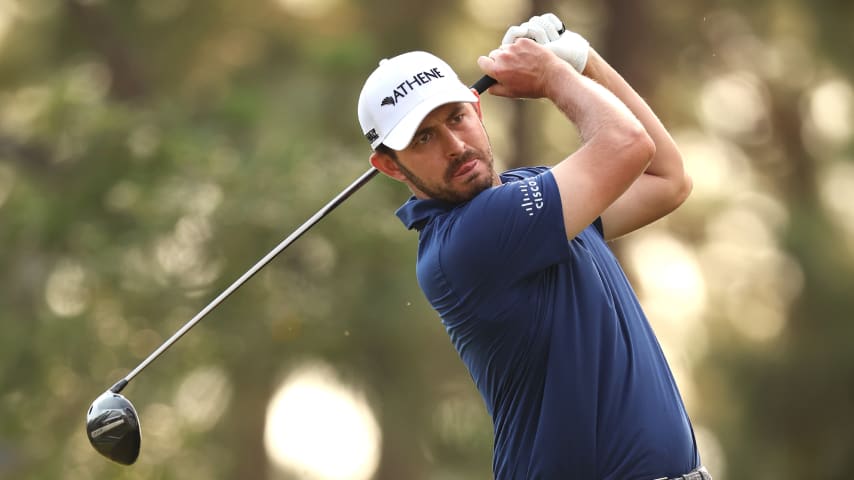
Patrick Cantlay plays his shot from the 11th tee during the first round of the 124th U.S. Open at Pinehurst Resort on June 13, 2024 in Pinehurst, North Carolina. (Sean M. Haffey/Getty Images)
Change Text Size
Well, it seems the Ping iron experiment was short-lived, since last week at the Memorial Tournament presented by Workday, Cantlay switched back into his Titleist 718 AP2 irons.
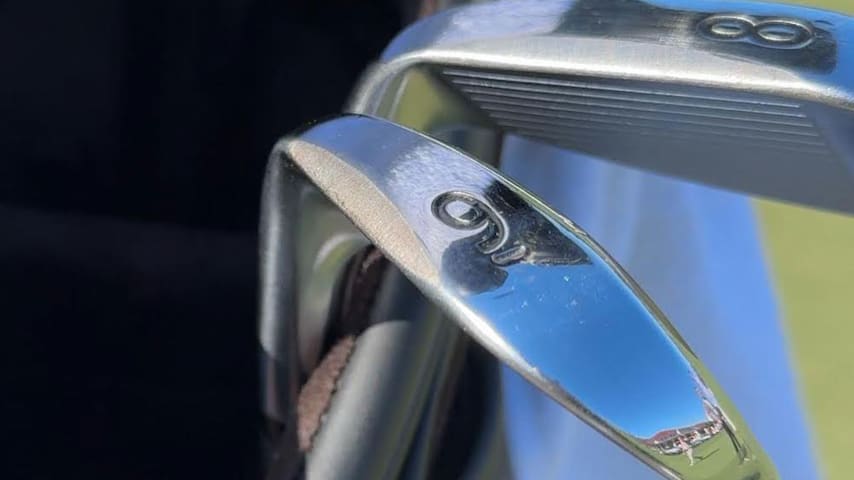
A look at Patrick Cantlay's Titleist 718 AP2. (GolfWRX)
Cantlay’s familiar 718 AP2 irons are unique because they have custom grinds on their leading edges, helping Cantlay achieve the precise turf interaction he prefers at impact.
Irons aren’t the only news coming out of Cantlay’s equipment setup this week at the 2024 U.S. Open, however.
Cantlay conducted lengthy driver testing on-site at Pinehurst this week between his older TSR2 driver model, and Titleist’s new GT2 model .
Then, on Wednesday afternoon, he posted a photo of the new GT2 driver to his Instagram, likely confirming the winner of his driver tests. As an equipment free agent, Cantlay’s post on social media says a lot about how much he likes the new driver.
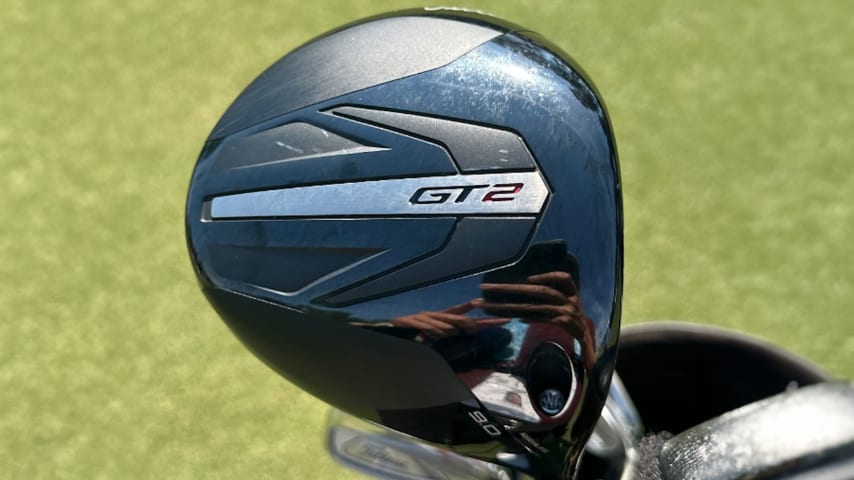
A look at Patrick Cantlay's Titleist GT2 driver. (GolfWRX)
As per our previous Equipment Report , PGA TOUR pros are seeing increased distance, more consistent spin rates, and a more muted sound from Titleist’s new, unreleased drivers thus far. Additionally, Titleist Tour rep J.J. Van Wezenbeeck told GolfWRX.com on Wednesday at the U.S. Open that pros are gravitating toward the GT2 model due to its ease of launch, forgiveness, and overall head shape at address, in addition to the previously mentioned upgrades in the GT lineup.
Consider Cantlay’s switch another feather in the cap of Titleist’s GT2 driver.
Cantlay, an eight-time PGA TOUR winner, is looking for the recent equipment changes to help him break through to win his first major championship this week at the 2024 U.S. Open at Pinehurst No. 2.

This was Bryson DeChambeau’s U.S. Open

PINEHURST, N.C. — The hardest shot in golf stood between Bryson DeChambeau and his second major championship.
The ball was perched on Pinehurst’s pillowy sand. It was 55 yards out — the distance pro golfers almost universally disdain — after advancing his approach shot from behind a tree root. The hole location was tucked just six paces off the green’s back-right edge, bordering another bunker. The groans that ensued after Rory McIlroy missed his par putt at the last still hung in the air around the 18th grandstand.
Advertisement
DeChambeau set up to his ball with a 55-degree wedge. Make bogey and move into a playoff. Get up and down and walk away as a two-time U.S. Open champion.
With 100 chances, DeChambeau said he would have gotten up and down from that spot four or maybe five times. But his caddie, Greg Bodine, assured him: “You’ve got this shot,” he said to DeChambeau before he descended into the bunker. “I’ve seen way harder shots pulled off from you.” And with one swing on Sunday, DeChambeau embraced Bodine’s words and executed the improbable.
“That bunker shot was the shot of my life,” DeChambeau said.
The ball skipped along the putting surface, taking several hops before rolling end over end to 3 feet, 11 inches. Was there even a question of what would happen next? DeChambeau drained the putt.
Call him golf’s mad scientist, a PGA Tour star who defected to LIV Golf, a content creator with a generation of youngsters following his every move on YouTube and TikTok. Whatever Bryson DeChambeau is or once was, the moment that came next allowed him to simply be.
DeChambeau launched both arms into the air, ripped off his Crushers GC cap, and turned to the mass congregation of photographers lining the left side of the 18th green. He stared into the TV cameras, pointing to the pin he wore on his hat to honor an idol, the late Payne Stewart who won here 25 years ago.
He screamed, emptying his lungs until his face turned red. This was his moment.
DeChambeau started Sunday on the driving range like usual: launching balls into the stratosphere with his team of confidantes nearby.
Behind him were three backpacks overflowing with curious props like measuring sticks and levels. An iPhone captured video of his golf swing for real-time 3D-motion feedback powered by an artificial intelligence app, SportsBox AI, which DeChambeau started using last week. His swing coach, Dana Dalquist, lingered. Bodine wiped the clubs clean as DeChambeau worked his way through the bag.
Then something puzzling happened. Sixteen minutes before DeChambeau teed off at the U.S. Open with a three-shot lead, he unscrewed his driver head and swapped it with a new one. The face of DeChambeau’s special Krank driver — an equipment brand used by long-drive competitors — had flattened. The numbers on his Foresight launch monitor indicated the issue, and his wayward ball flight further proved it. A protractor-like tool that DeChambeau lined up with the curved clubhead face gave the final verdict. DeChambeau didn’t necessarily foresee putting a new head in play for the final round of the U.S. Open he had only hit six times, but he was prepared for the possibility.
THE BUNKER SHOT OF HIS CAREER! @b_dechambeau has this putt left to win the U.S. Open! pic.twitter.com/Vleb6k6PvO — U.S. Open (@usopengolf) June 16, 2024
DeChambeau’s goal in this game is to predict. He is on a perpetual mission to eliminate the variables, no matter the scale of their effects. And most recently, DeChambeau has been on a quest to take the guesswork out of golf.
DeChambeau floats his golf balls in Epsom salt to determine the low point of their weight, so that he can optimize rolling his putts end over end. He put a set of 3D-printed irons into play starting at the Masters that mimic the design of his driver and minimize the effects of off-center strikes. He uses SportsBox AI to detect unwanted motions in his golf swing, documenting hundreds of data points for future analysis. When he practices DeChambeau doesn’t hit balls to find an ambiguous “feel.” He utilizes AI motion capture to detect if he’s making movements that will produce the shot he wants to see. If he’s hitting those checkpoints, he’s satisfied. DeChambeau doesn’t want an opinion on what he can do to improve his game and win more golf tournaments. He follows a formula. He’s after the truth.

U.S. Open analysis: 10 things to know on Bryson DeChambeau's win
Augusta National doesn’t allow players to use slope-measuring devices. Dalquist said there is currently a conversation among DeChambeau’s team about building a 25-foot-long slope in DeChambeau’s backyard to simulate putting at the Masters.
“It’s not just like it’s a science project, but we can’t make stuff up and hope,” Dalquist says. “He knows B.S. when he hears it.”
Much has been made of DeChambeau’s reliance on facts and science since he came out on tour with single-length irons — which he still plays to this day. To some, DeChambeau’s whole schtick is a mad dash for some sort of edge in a game that should be kept simple. But to DeChambeau, it’s the only way that makes sense.
On Sunday at Pinehurst No. 2, though, it was never possible for DeChambeau to control every variable. He knew that, and the acceptance of such an idea is exactly what helped him execute rounds of 67, 69, and 67 to take a three-shot lead heading into the U.S. Open’s final round on Father’s Day.

DeChambeau, who won his first U.S. Open by overpowering Winged Foot with a bomb-and-gauge technique, plotted his way around the Donald Ross design in the North Carolina sandhills, taking conservative lines off the tee. Although he led the field in driving distance, his new head led him to some less-than-ideal situations in Pinehurst’s native areas. He only hit five fairways on Sunday, the fewest in a final round since Angel Cabrera in 2007, per The Athletic contributor Justin Ray. But aside from needing to chip out of the wire grass on No. 12, DeChambeau escaped by muscling his ball into favorable locations around the greens and leaning on his short game and his flat stick to scrape away pars.
Unforeseen predicaments define the test of this golf course, and on the 18th hole, DeChambeau faced perhaps the most extreme example of that, when yet another wayward drive found itself in jail. DeChambeau’s ball almost hit a group of tournament volunteers before it came to rest near a tree root, with branches limiting the length of his backswing. He wondered whether he’d hurt himself attempting to hit the shot, and he tried to seek relief from a temporary immovable obstruction nearby. No luck.
To win the championship and avoid entering a playoff with McIlroy, DeChambeau had to lean on something that can’t be quantified. Something that will never be distilled down to a science.
DeChambeau grew up throwing balls into impossible lies, training himself to harness his creativity and use a golf club to escape from anywhere.
“I go back to being a kid,” DeChambeau said.
Four years ago DeChambeau won his first major during a global pandemic, surrounded by a golf course devoid of fans or atmosphere. On Sunday? He sprinted off the 18th green with the U.S. Open trophy in hand, determined to give every fan in proximity a chance to touch the distinguished metal.
He hopped from interview to interview as the sun set on the championship, hugging and kissing his new piece of hardware, celebrating with a crew of friends and family who surprised him on Sunday evening. He took selfies and tried to throw his ball into the towering U.S. Open grandstands. His mother sat at home watching it all unfold in California — she skipped Winged Foot when her son hoisted the trophy. She wasn’t going to mess with fate. He dedicated the win on Father’s Day to his late father, Jon.

Rory McIlroy and the U.S. Open he will never escape — even though he tried
Most champions are quick to go somewhere private, to celebrate the achievement with those closest to them. Two and a half hours after winning the U.S. Open, DeChambeau was signing autographs for seemingly every kid who remained on property.
DeChambeau hasn’t always been easy to support but the people of Pinehurst were behind him, the same way they started to at Augusta and really were at Valhalla. He’s had moments — several of them — where the golf community has largely been averse to his antics. DeChambeau credits the arc in his public perception with a close-knit inner circle and an ability to use outlets to express to the world what he says is his true character.
“I’ve realized there’s a lot more to life than golf,” DeChambeau said. “I’m not perfect. I’m human. Everyone’s human. Certainly, those low moments have helped establish a new mind frame of who I am, what’s expected, what I can do, and what I want to do in my life.”
(Top photo: Sean M. Haffey / Getty Images)
Get all-access to exclusive stories.
Subscribe to The Athletic for in-depth coverage of your favorite players, teams, leagues and clubs. Try a week on us.

Gabby Herzig is a Staff Writer for The Athletic covering golf. Before joining The Athletic, she worked as a breaking news writer for Sports Illustrated’s golf vertical and a contributing editor at Golf Digest. She is a graduate of Pomona College, where she captained the varsity women’s golf team.

IMAGES
VIDEO
COMMENTS
Mixed-iron setups, as they're called, can help golfers find the best of both worlds. Be careful, though, because there's a danger with mixed sets, too. Since cavity-back irons are designed ...
Titleist are the most played irons by the top 100 on the PGA Tour with 29 using them. Callaway, PING and Srixon irons are each used by 14 with TaylorMade played by 13. PXG irons are chosen by 5 with Wilson used by 4. Ignoring utility irons the most common set up played by 42% of this elite group is 4-iron to pitching wedge.
According to Titleist, 70% of tour players use cavity backs while 30% use blades. Cavity back irons provide increased forgiveness while blades offer more control and a better feel. This is why a lot of tour players have both cavity backs and blade irons in their bags. These numbers are always going to be changing but the main thing to note is ...
The subsequent interest of professional players in the cavity back irons, Ping is a global leader in golf clubs, and it shows on the PGA Tour. ... Of the 24 PGA Tour players that use their irons, many South African players feature, such as Branden Grace, Christiaan Bezuidenhout, Dylan Frittelli, Erik Van Rooyen, and prominent international ...
Like all cavity back irons, the reduced side spin makes it more difficult to curve in the air. In summary, this combination of power performance, playability, and feel is unlike any previous Titleist design. Ideal for the ex-blade player now wanting to use forgiveness technology. 3. TaylorMade P770 Irons.
While Taylor is using a glorified game-improvement iron, most players choose something that toes the line between game-improvement and better-player. Rory McIlroy's TaylorMade P760 cavity-back ...
The Legacy Black cavity-back irons are Endo forged from S20C, and they have a unique Vibration Dampening Rubber to enhance sound and feel. Due to their designs, the center of gravity is slightly ...
The JPX 923 Tour irons are our favorite pure "player" cavity back iron from Mizuno and a solid step up from the JPX 921 Tour irons for me. What we like: ... Yes, quite a few PGA pros use cavity back irons - Jordan Spieth, Patrick Cantlay, Xander Schauffele, Sam Burns, Jon Rahm, etc.
Blade or cavity-back? What you can learn from the iron setups of the best PGA Tour players By: Andrew Tursky Higgs is more of a feel player than someone who gets lost in launch monitor numbers ...
Specifically designed for Tour players and elite golfers, the Apex TCB irons combine forged performance, shot-making, and control in a Tour-inspired forged 1025 players cavity back.
Henrik Stenson at the Players is the most prominent recent example of a tour player using cavity-back irons en route to victory. ... fact is more than 70 percent of players on the PGA Tour use ...
The proof is in the data. If you are curious to see the real difference in performance between blades, cavity backs, and then faster-faced irons, check out the video below featuring Titleist Master Fitter Glenn Mahler going through the results of a fitting with Titleist 620MB, 620CB, T100, and T200 irons. Titleist T Series Iron Fitting with ...
None of the pros on the PGA Tour pros use game improvement irons. However 19 of the top 100 PGA pros carry at least one 'players' distance iron' in their bag which are only one 'forgiveness' category below game improvement irons. John Huh has previously used a complete set of TaylorMade P770 players' distance irons.
According to Golf Magazine, amongst the top 50 tour players in strokes gained: approach the green, 44% play cavity-back irons compared to only 26% playing blades. The other 30% play a mixed set. Just thought that was interesting. Always assumed the pros played exclusively blades.
In fact, most PGA Tour players use some form of cavity back iron. Every iron on our list of the best irons for high-handicap golfers is a cavity back. Who Should Use Blade Irons? Frankly, no one really needs to use blade irons. They are very difficult to hit consistently and have little forgiveness for off-center strikes.
T200 3-iron driving iron, MB irons all throughout the bag except for the 4-iron, [which is a ] cavity back. It was my first set of adult irons, so I was probably 12 when I first got these.
The Callaway Mavrik Irons are a true winner with exceptional distance and incredible accuracy. The irons come in roughly a dozen different combinations, great for any golfer who likes to mix and match the golf clubs in their bag. The Mavrik irons are among the best cavity back options on this list.
Posted March 15, 2017. Pros usually travel with blades and the cavity backs, i remember Darren Clarke saying he went with how his ball striking was and in fairness he flushes it. Jordan Speith uses API2 irons, loves a cavity back. Rory has been using blades his whole life- lad.
65 of the top 100 PGA Tour pros currently use only cavity back irons and that number rises to 88 when you count players who use at least one cavity back iron as part of their set. ... More than ever before the best players in the world are embracing irons packed with forgiveness as modern club design increasingly allows the manufacturers to ...
Having looked previously at the iron choices of the top players on the PGA and LPGA Tours in this video Golfing Focus turns our analytical lens on the irons ...
I won't mention names but I'm hearing different opinions/statements here. 1. " PGA Tour guys are playing blades, without question". 2. "80% of PGA Tour guys are now using cavity backs". Those are quite different statements and I heard both of them within the last 48 hours.
Kevin Na plays a set of cavity-back Callaway Apex Pro 16 irons (5-PW). Getty Images If you're good enough to own a PGA Tour card, then you possess the chops to handle a traditional blade iron.
The best golfers in the world have arrived at Pinehurst No. 2 for the U.S. Open, so we ranked the top 50 players. Scottie Scheffler fist pumps after saving par on the 16th hole during the final ...
PINEHURST, N.C. - A TV showing the third round of the 124 th U.S. Open positioned just outside his friend's garage workshop kept Tom Bailey abreast of how Bryson DeChambeau was doing with the irons he made him. "We've been running out watching them hit a shot running back in building golf clubs, running back out, watch them hit another ...
"Our two Blueprint irons represent a new strategy for us in the forged-iron category," said John K. Solheim, PING CEO and President. "With the forged and forgiving cavity-back design of the ...
Though the former PGA star ruffled a lot of feathers and drew a lot of eye-rolls over the past few years, his recent return to form after leaving the PGA Tour for LIV Golf has reminded golf fans ...
Scheffler has gained 2.71 strokes per round in 19 major starts, nearly a half-stroke better than any other player with at least 25 major or PGA Tour starts since 1983, per Data Golf. Ross Kinnaird ...
Cantlay, an eight-time PGA TOUR winner, is looking for the recent equipment changes to help him break through to win his first major championship this week at the 2024 U.S. Open at Pinehurst No. 2 ...
It's a standard cavity-back iron with a lot going on. For a mid-handicap who's looking for a hollow-bodied iron, it's a good option. From the data and performance I've seen, they are great.
15s ago. PINEHURST, N.C. — The hardest shot in golf stood between Bryson DeChambeau and his second major championship. The ball was perched on Pinehurst's pillowy sand. It was 55 yards out ...